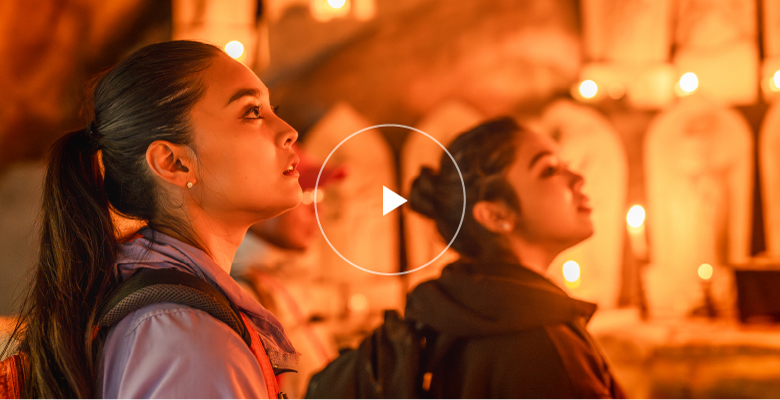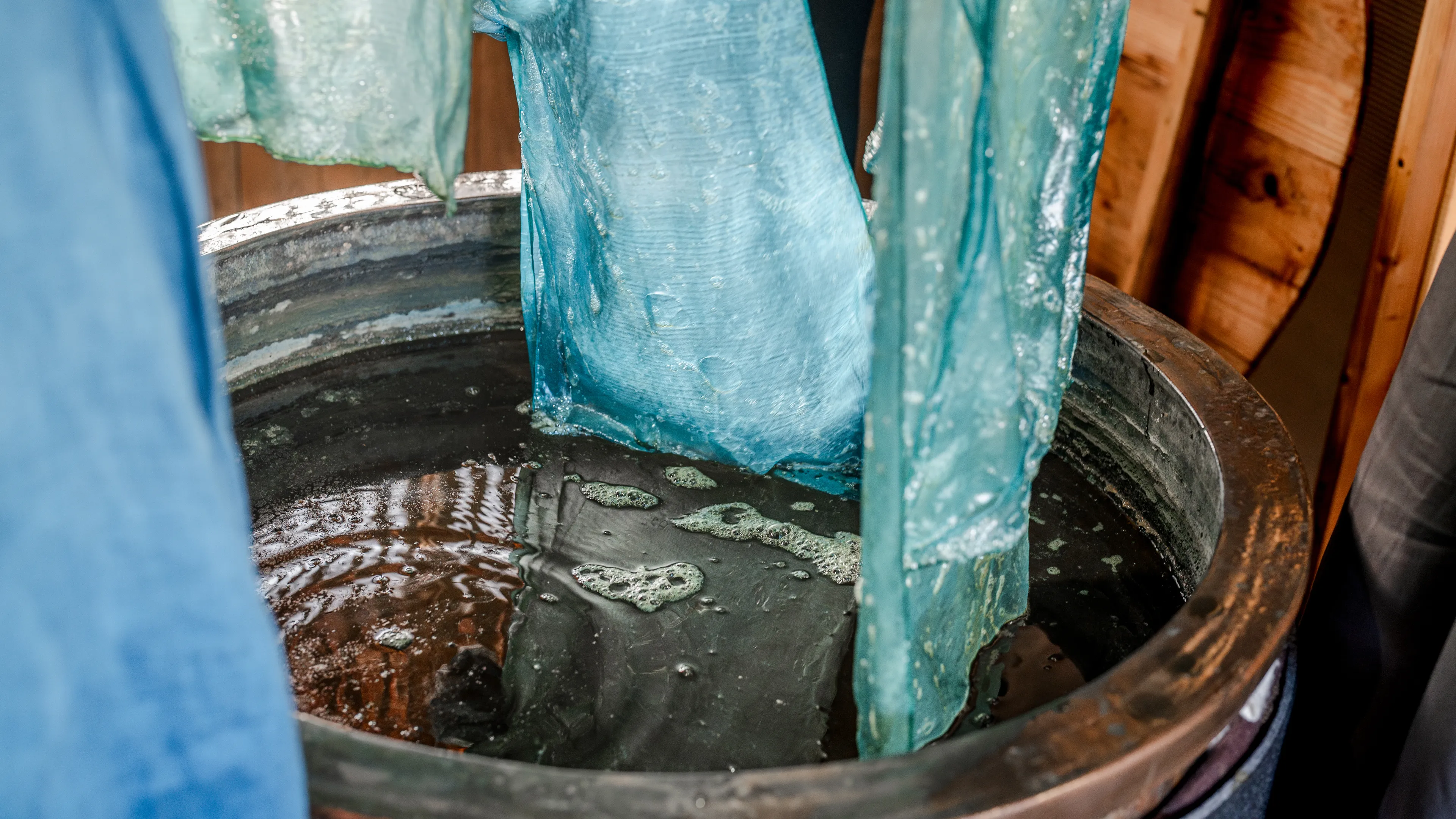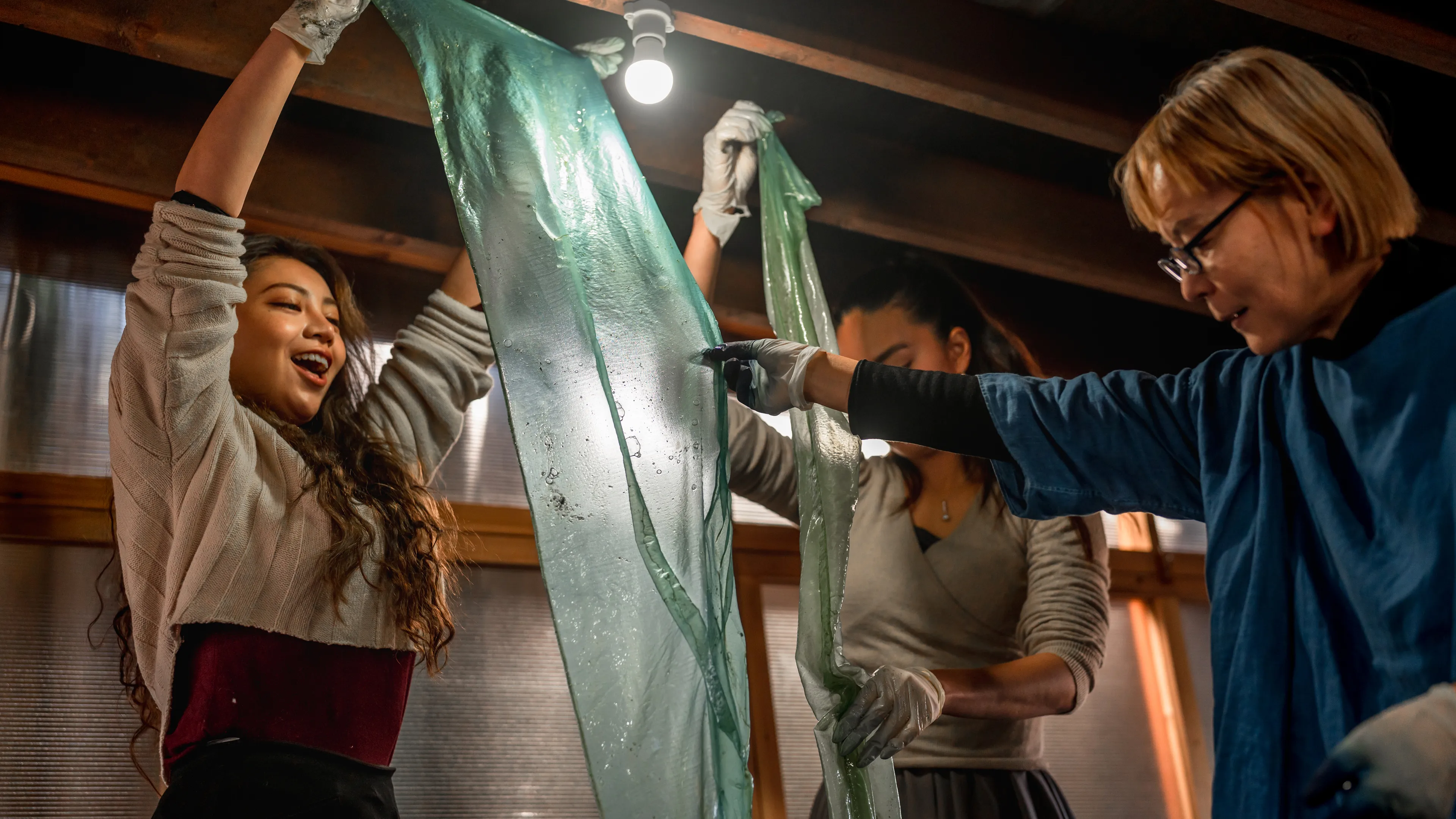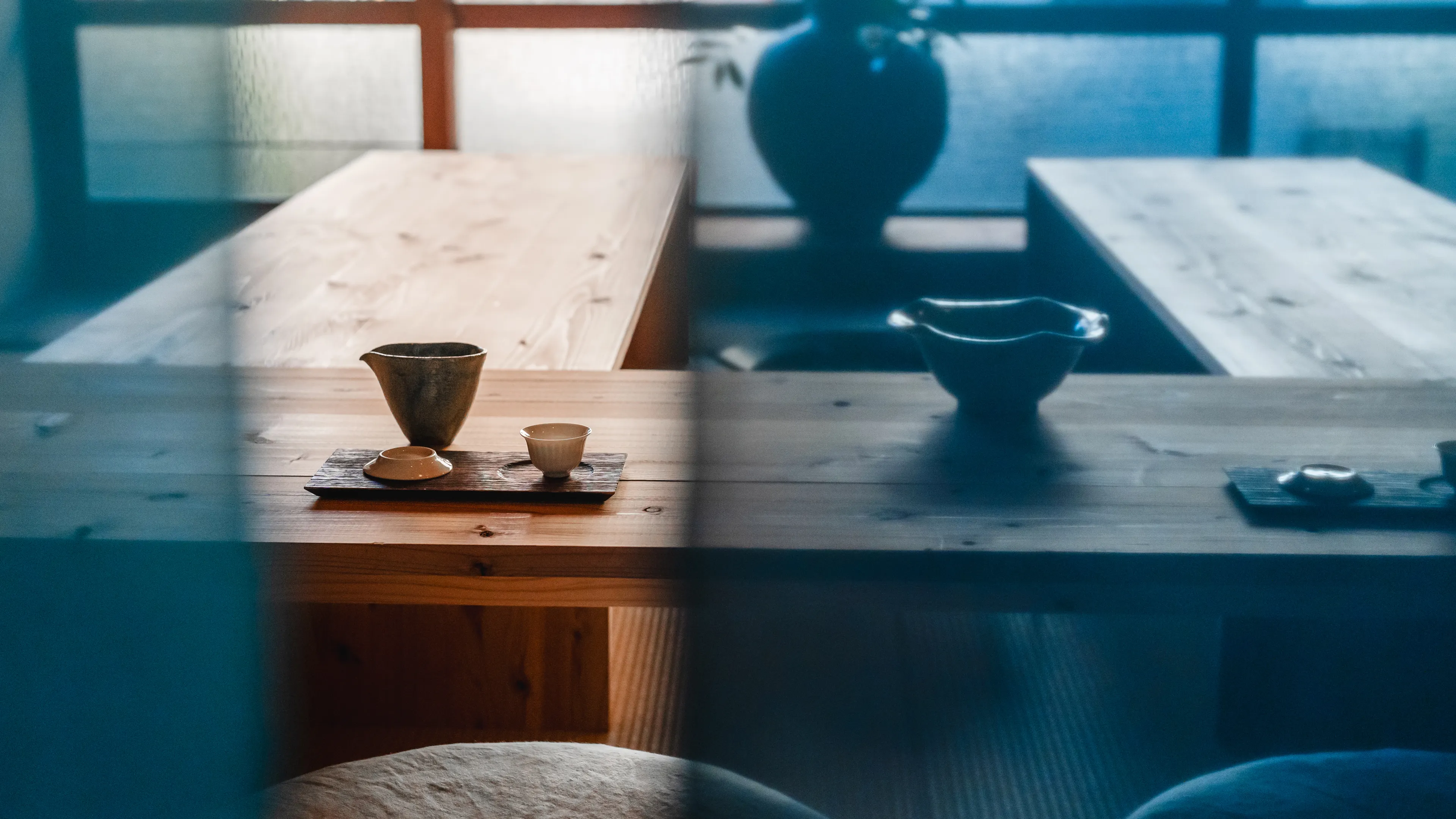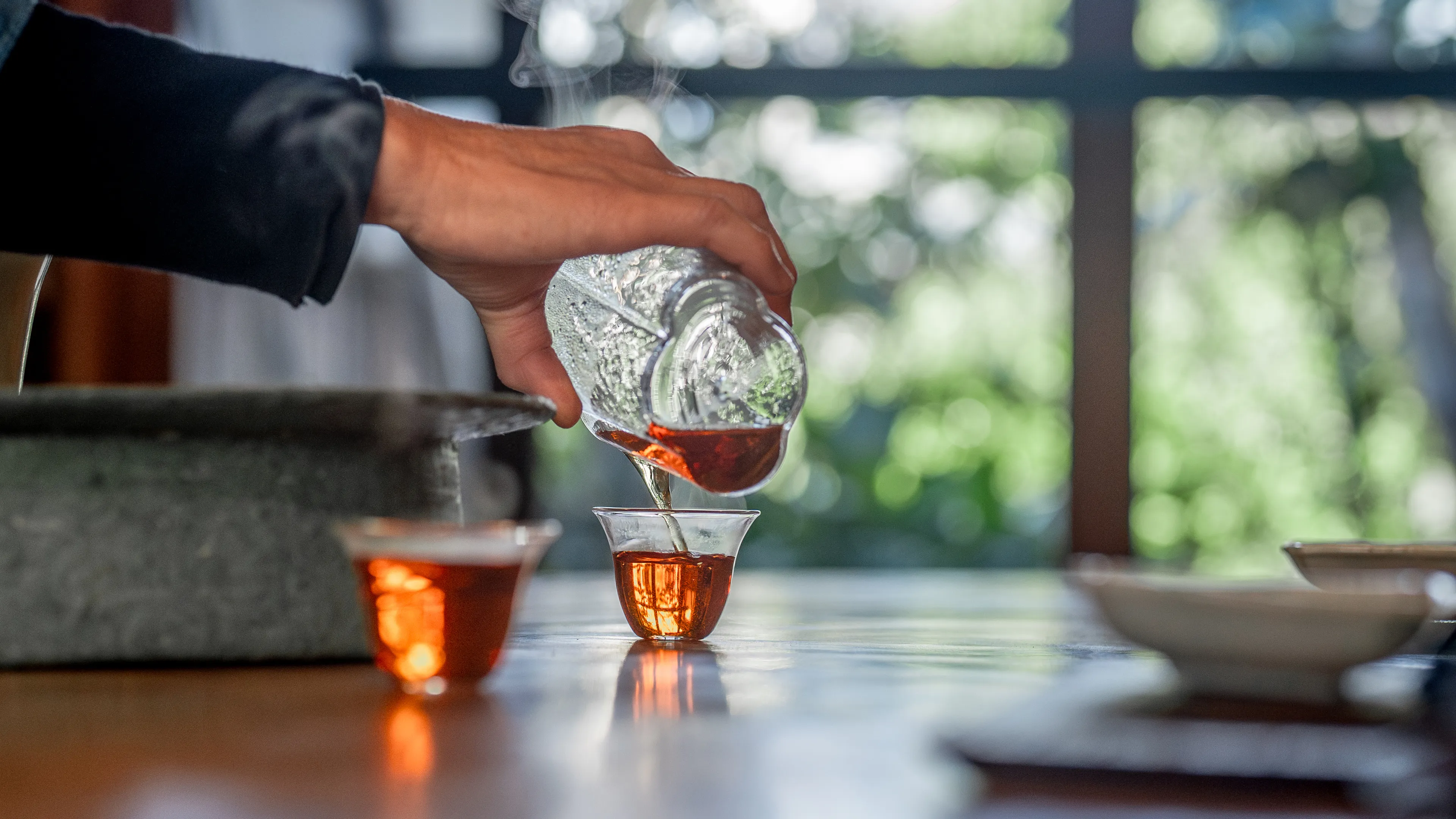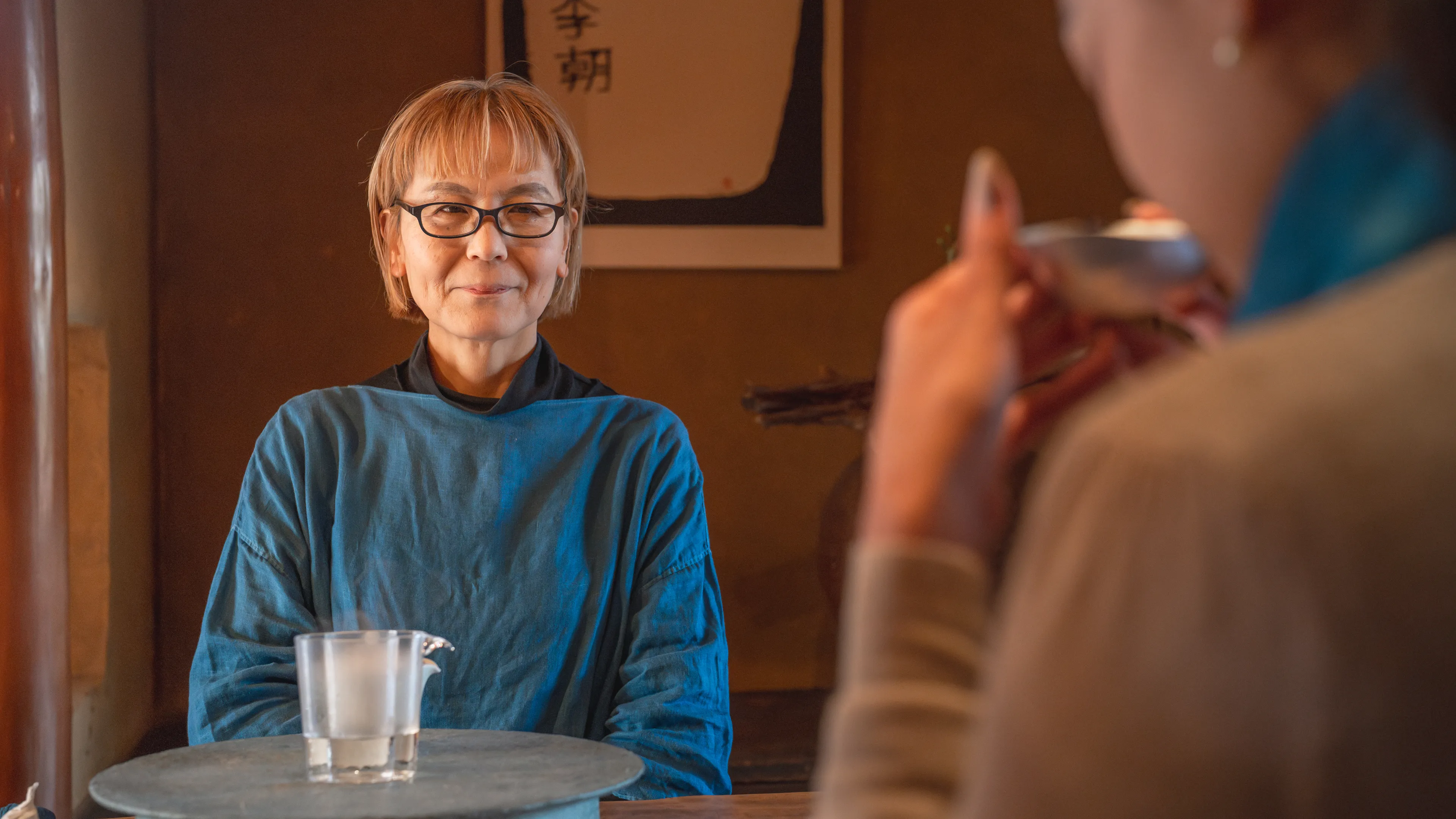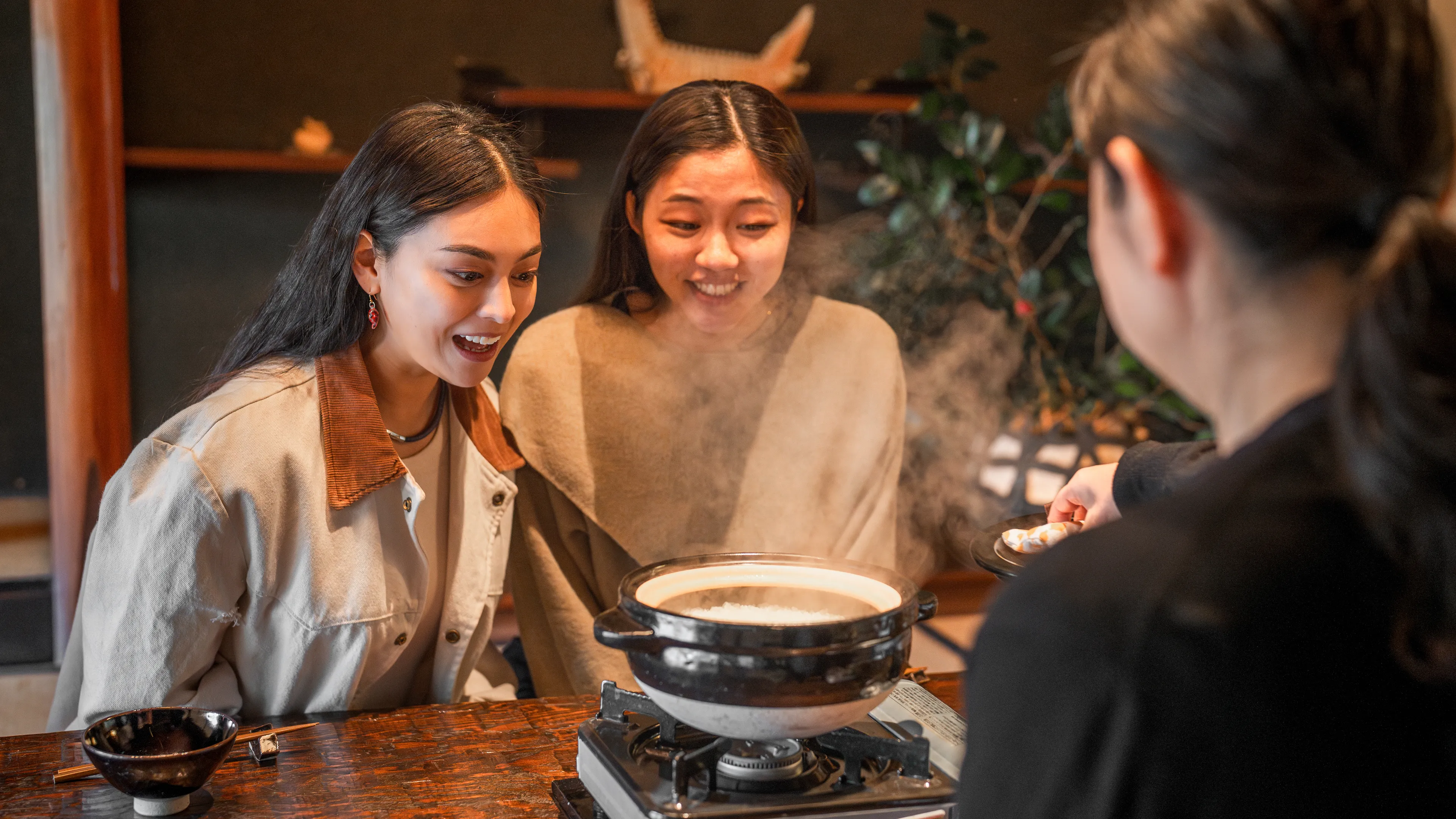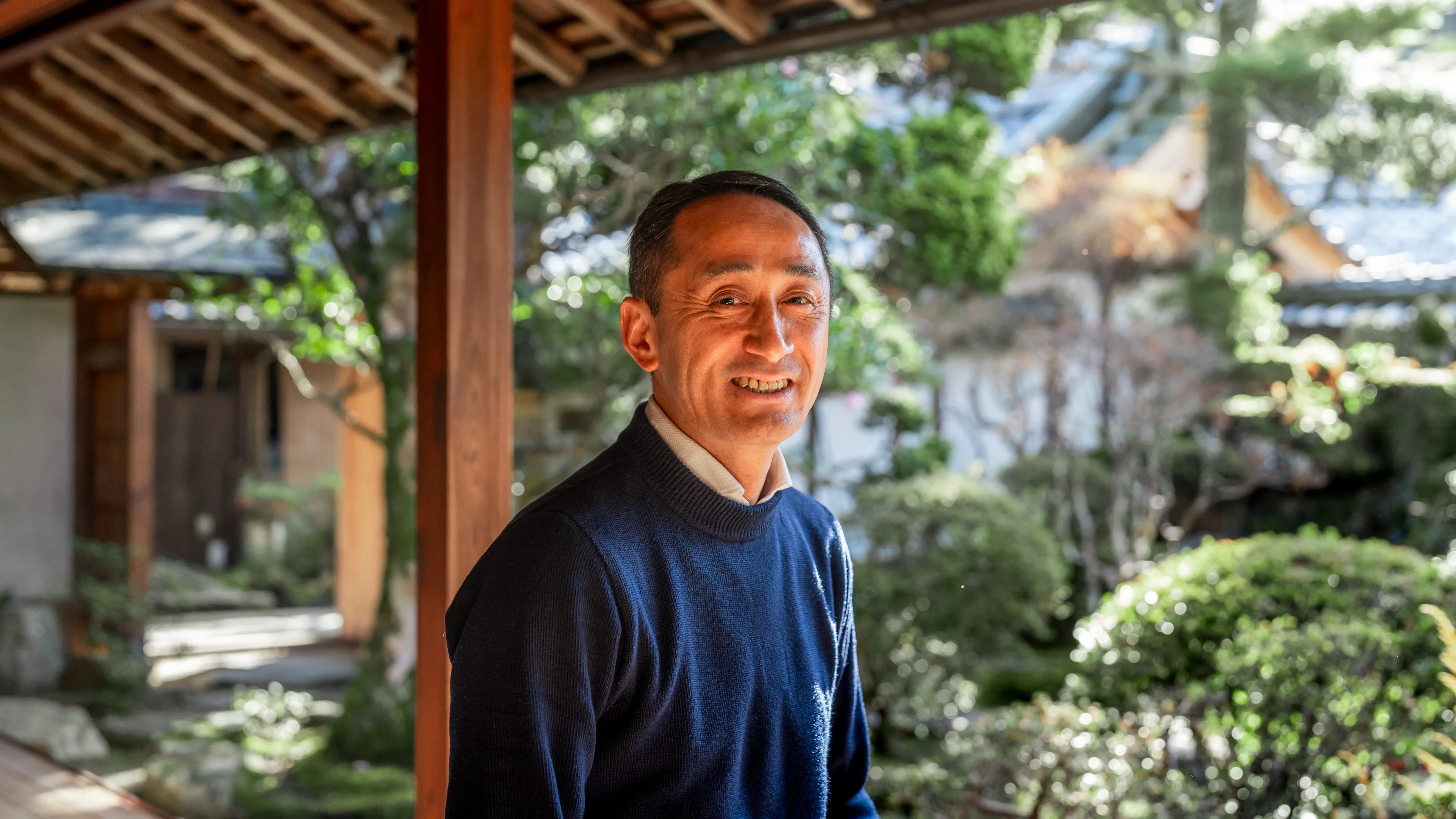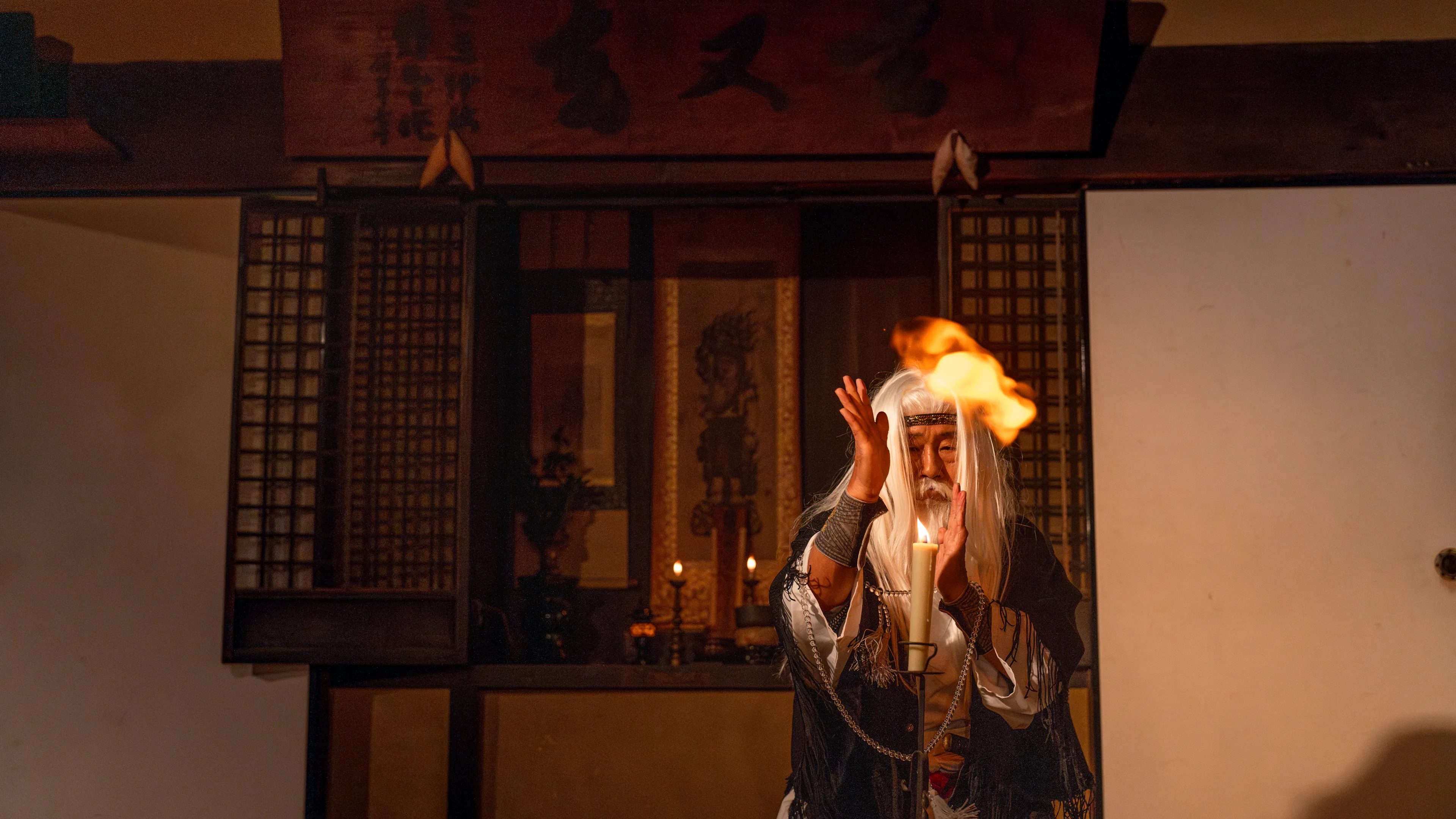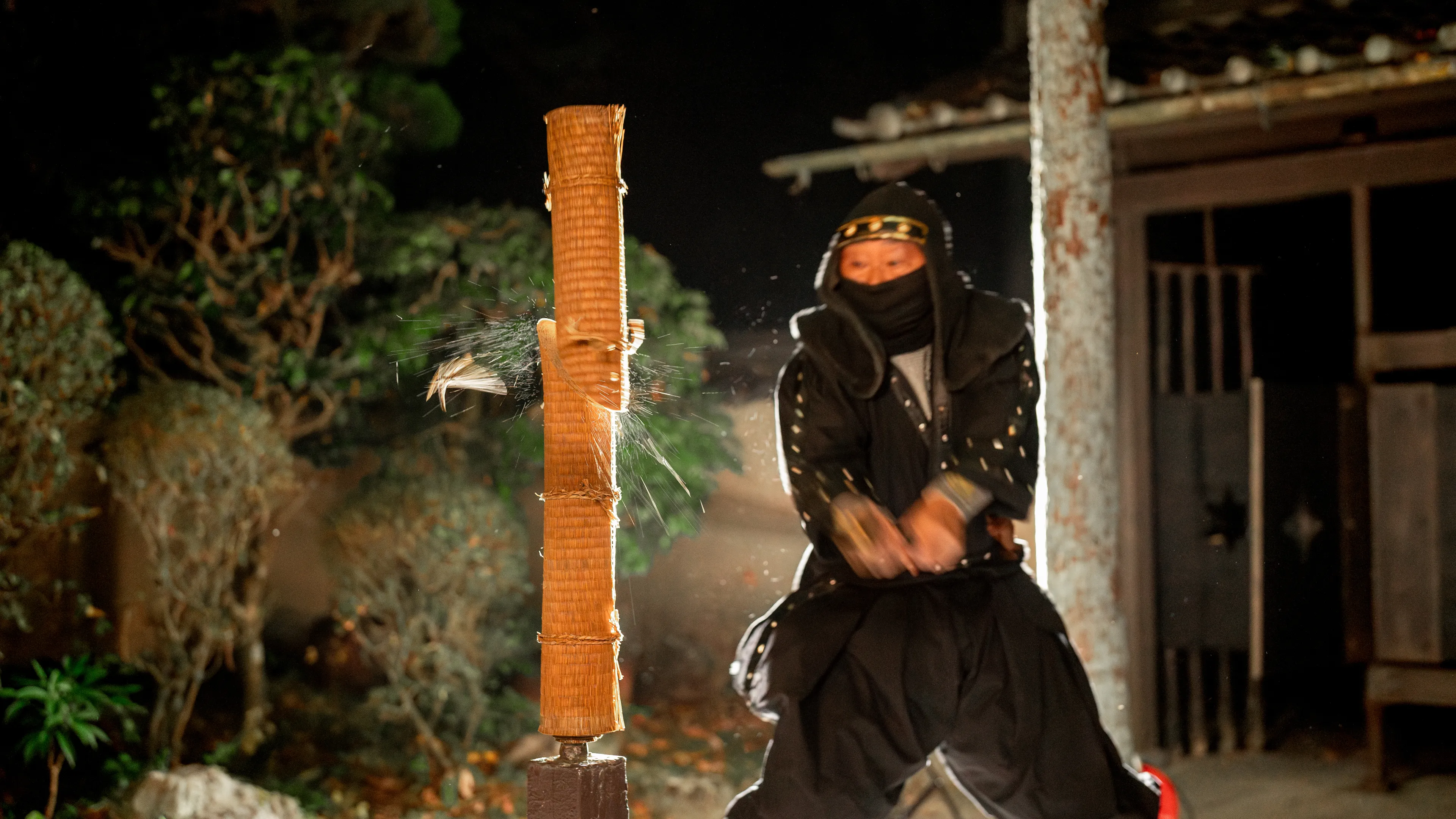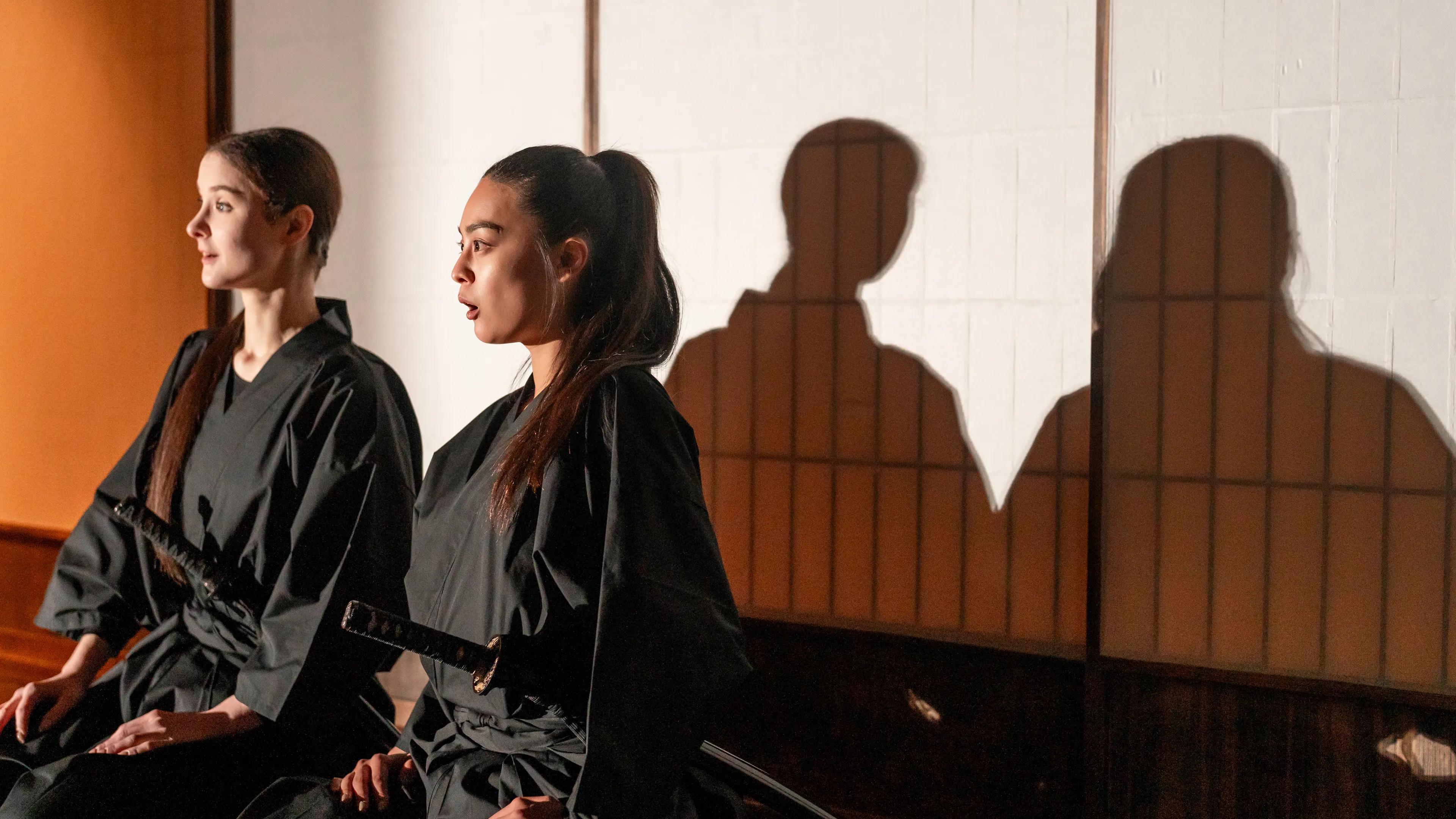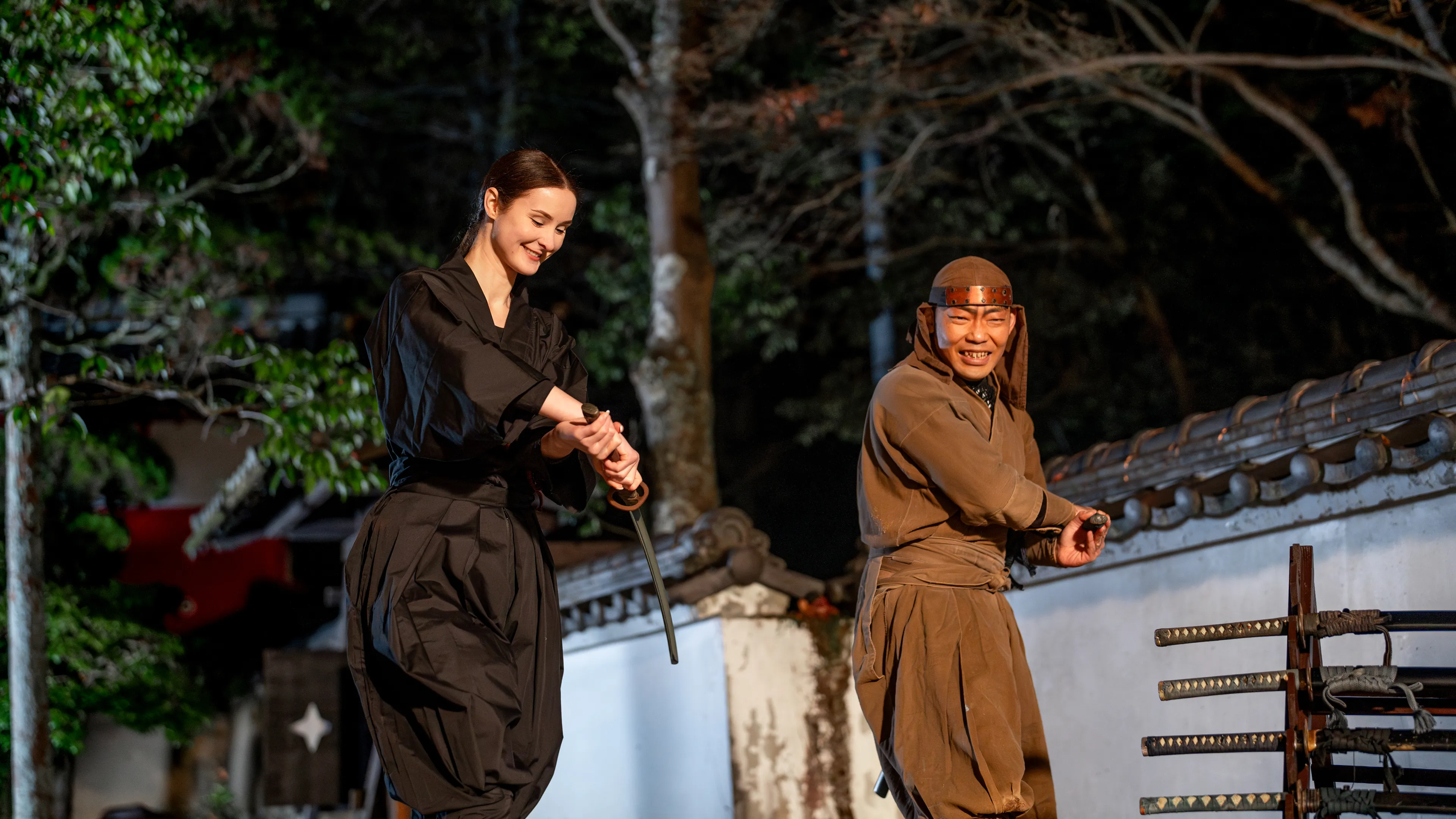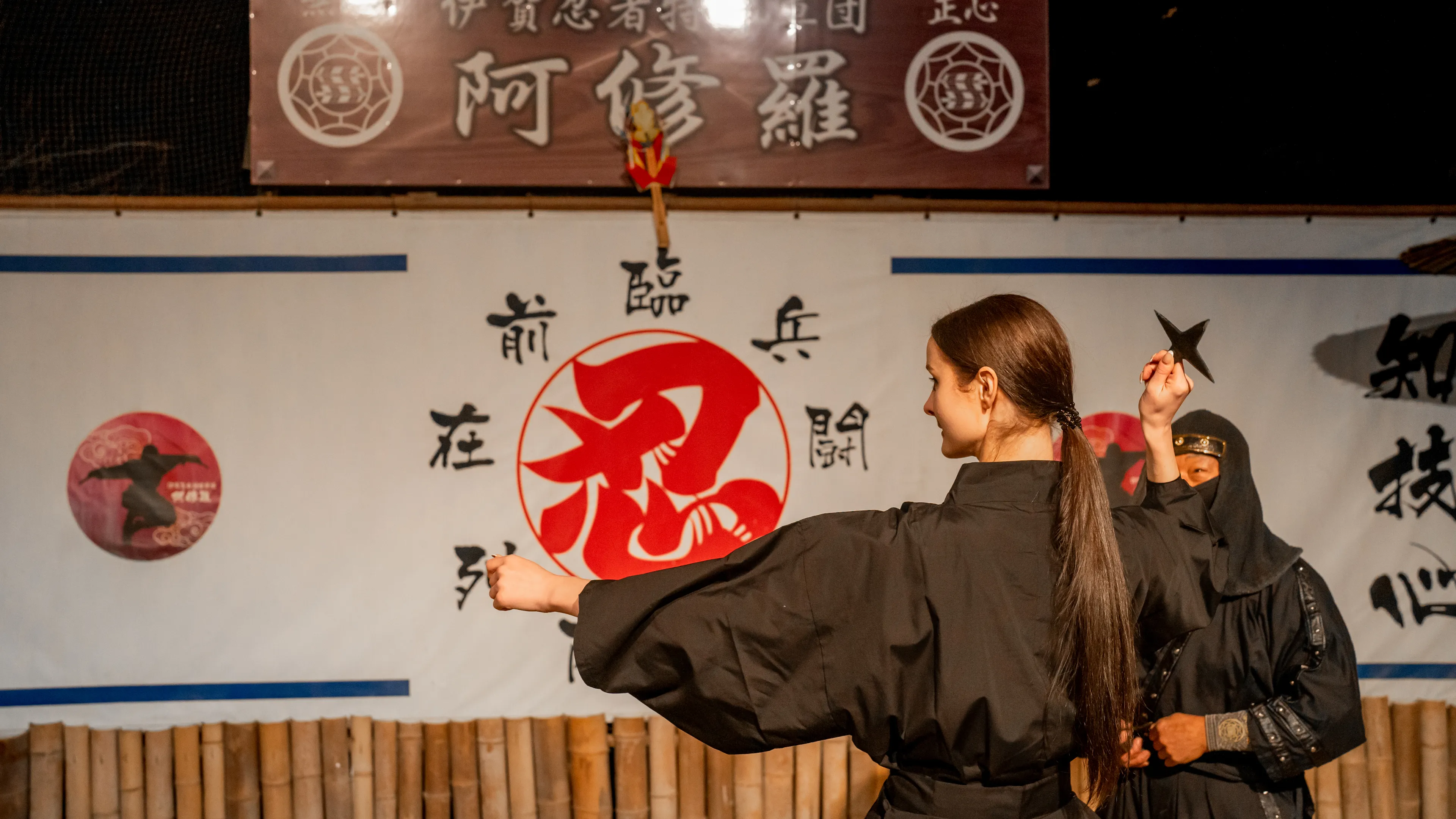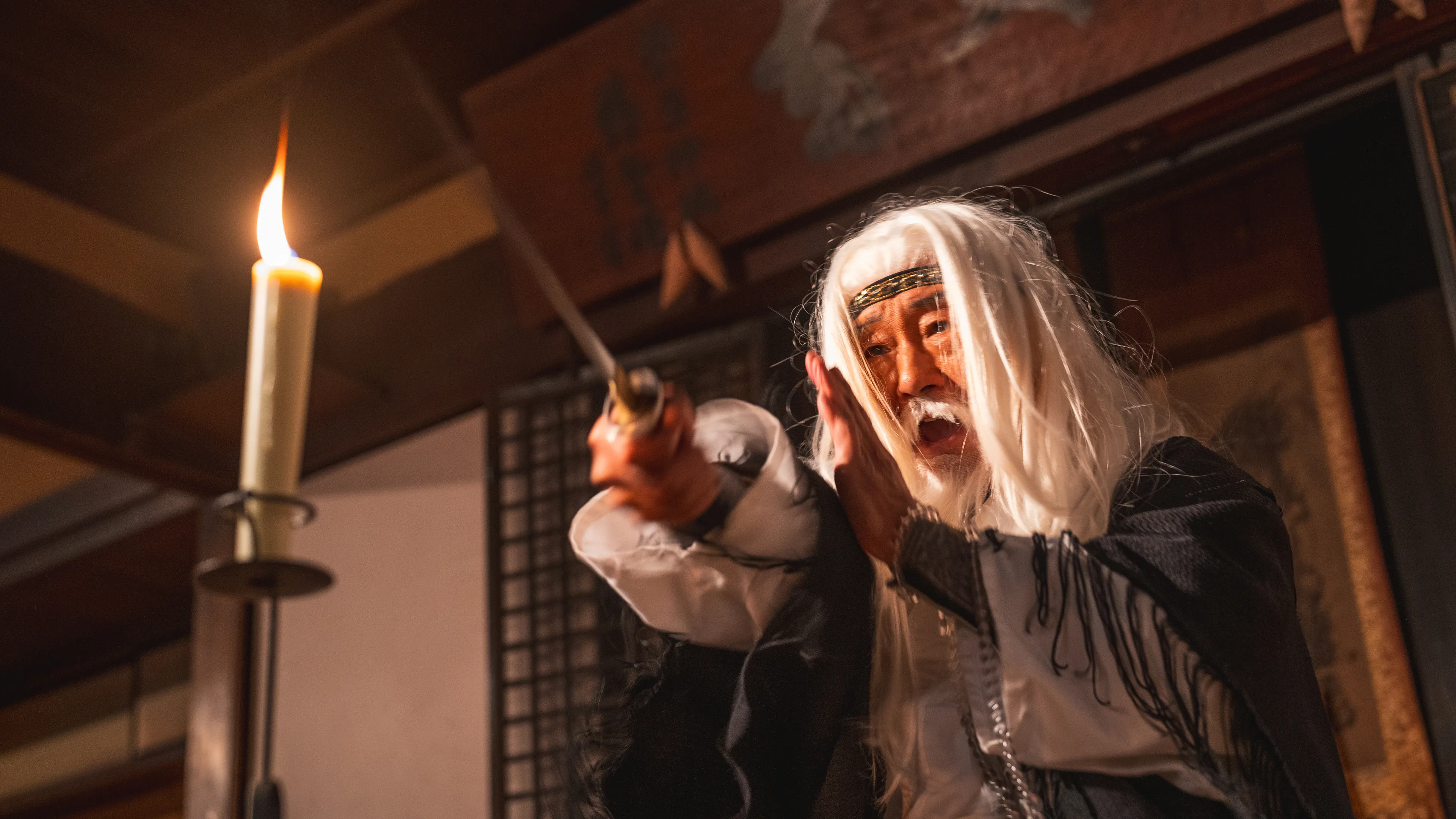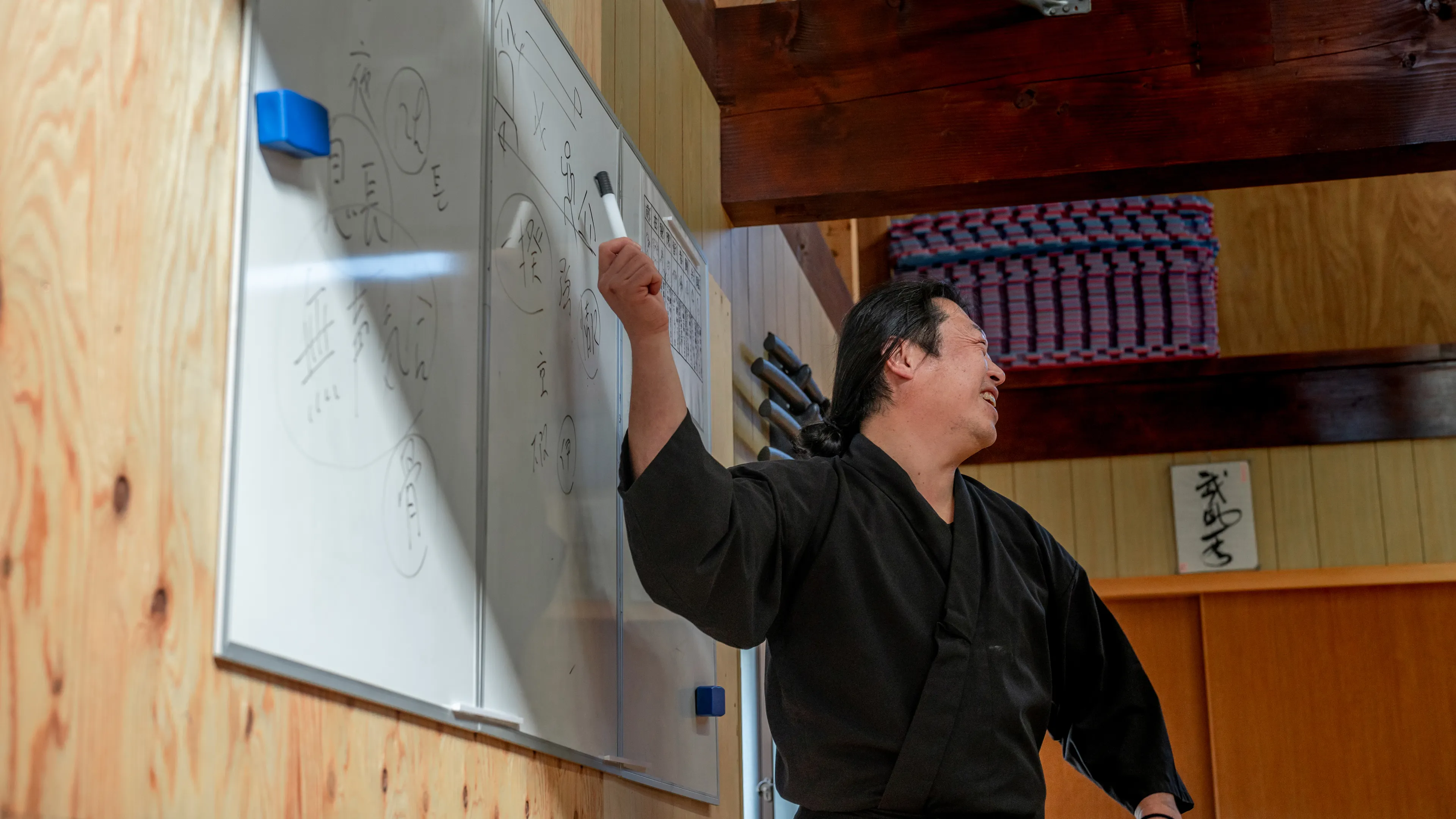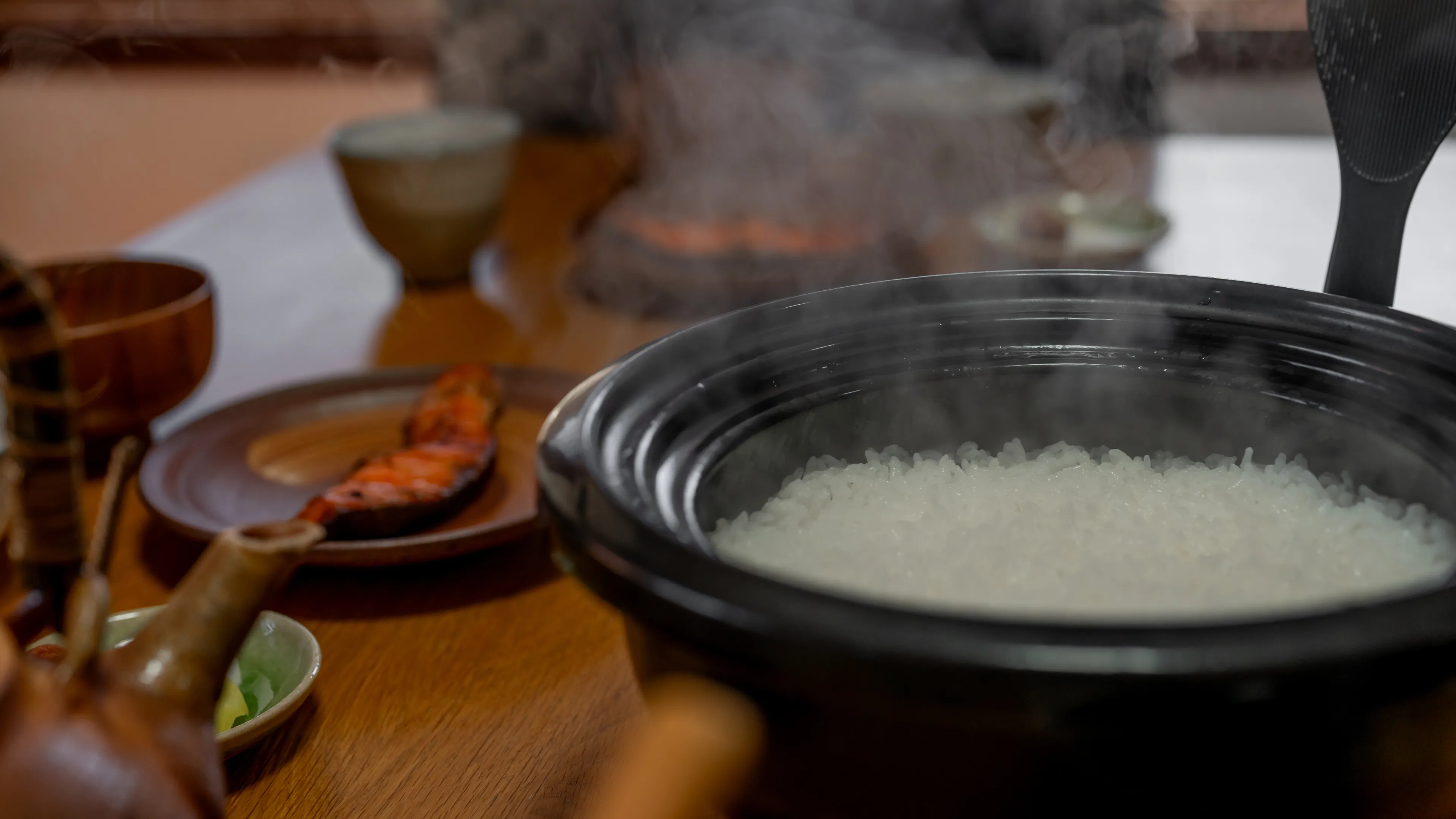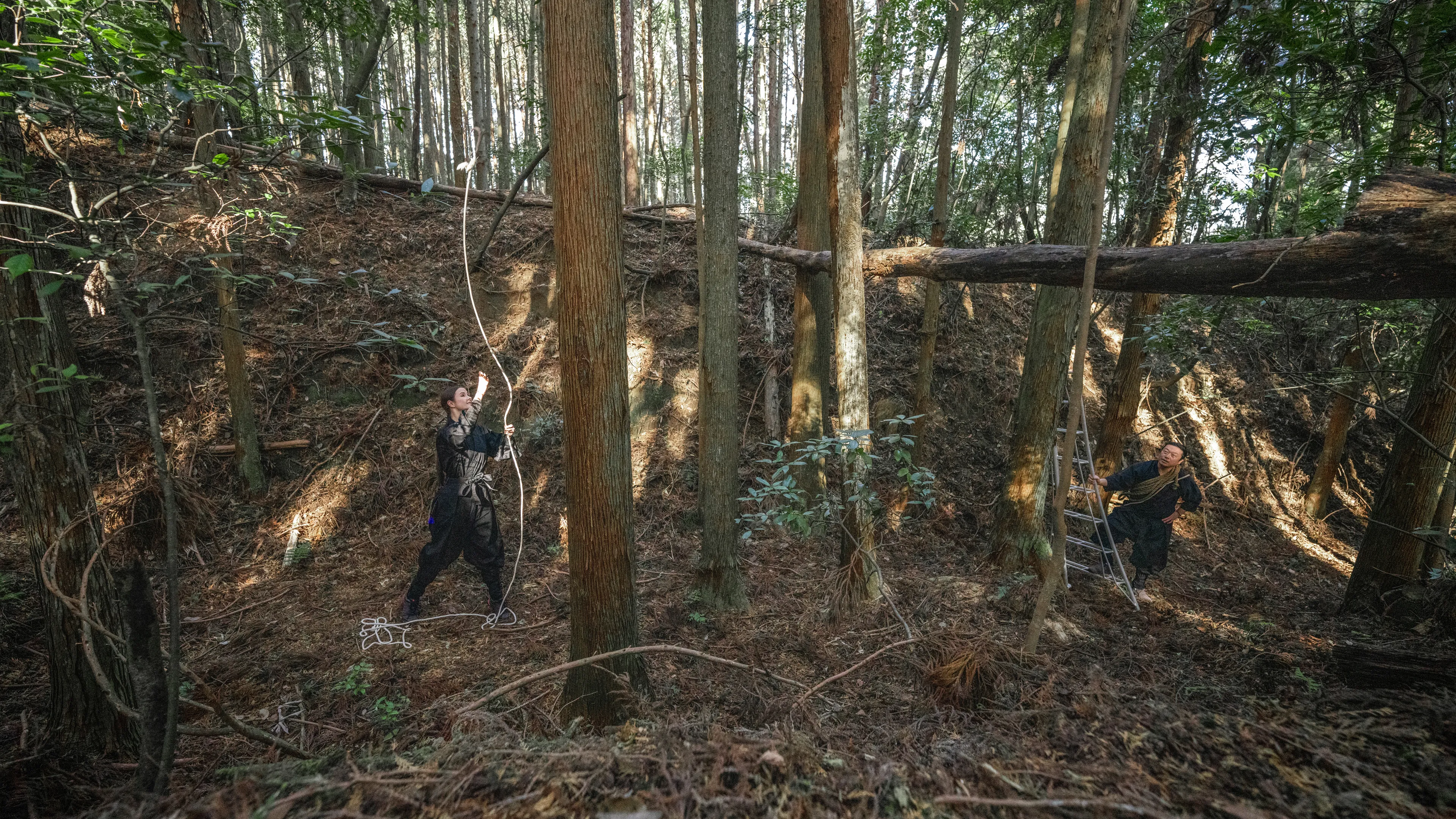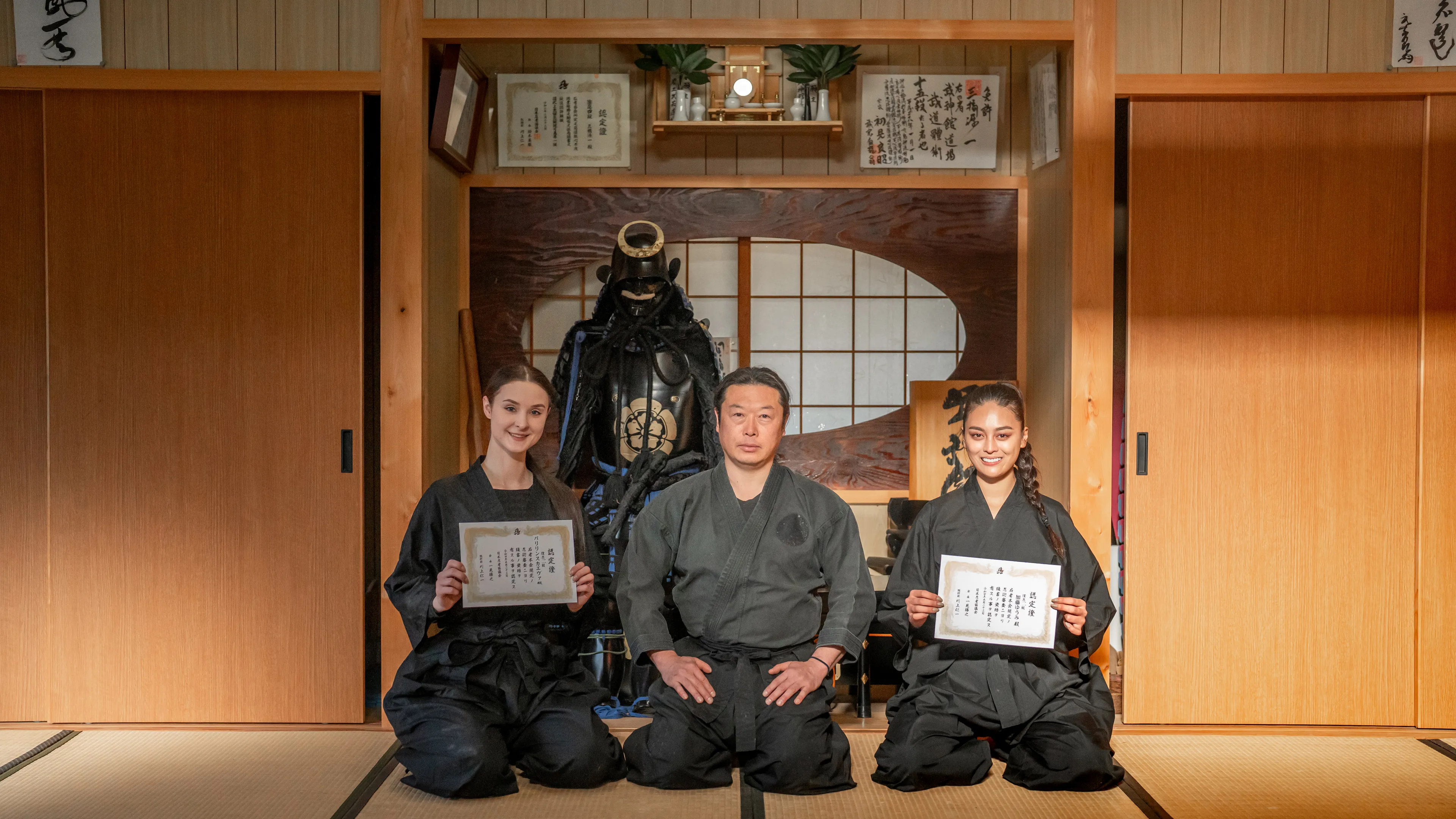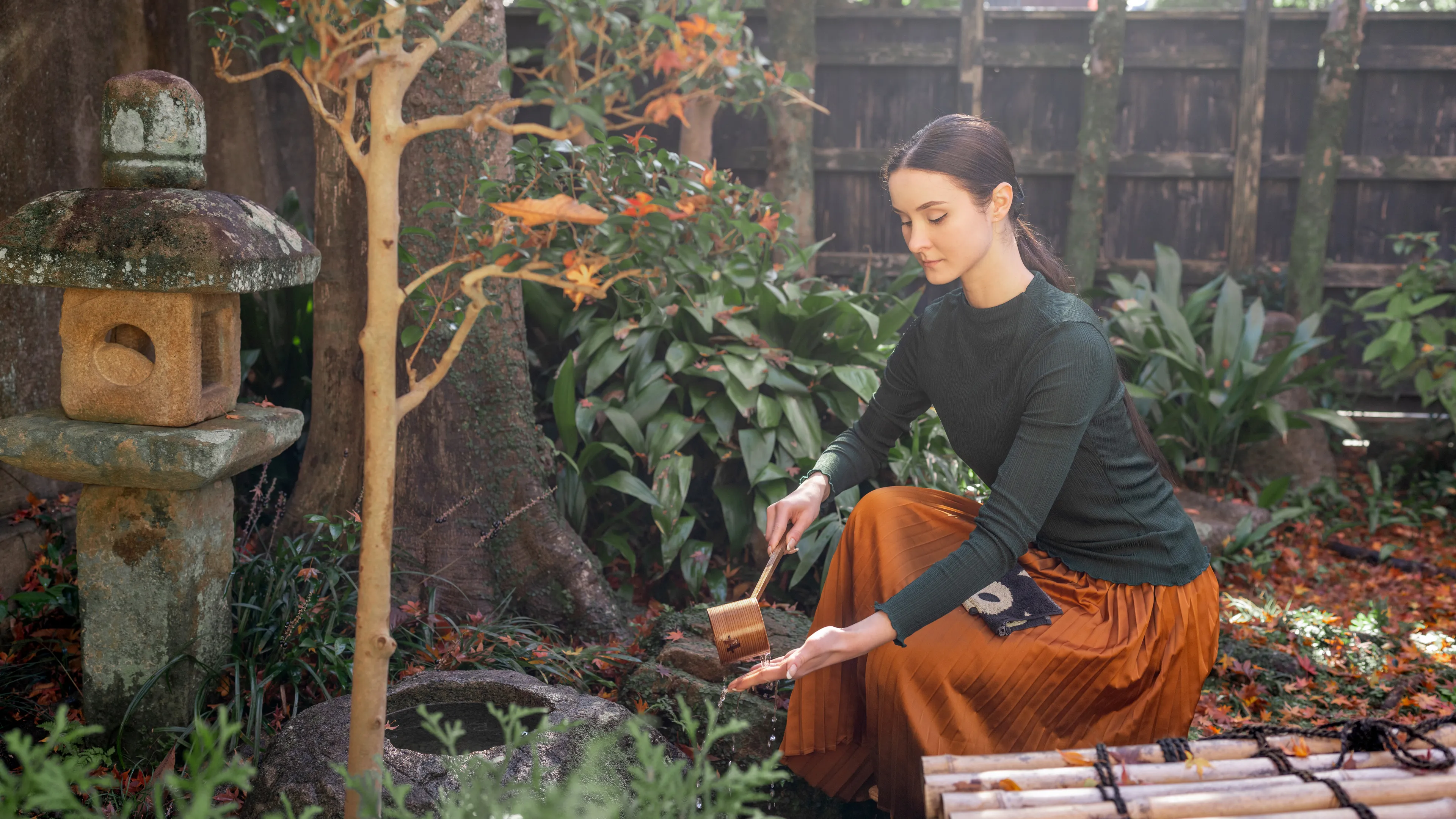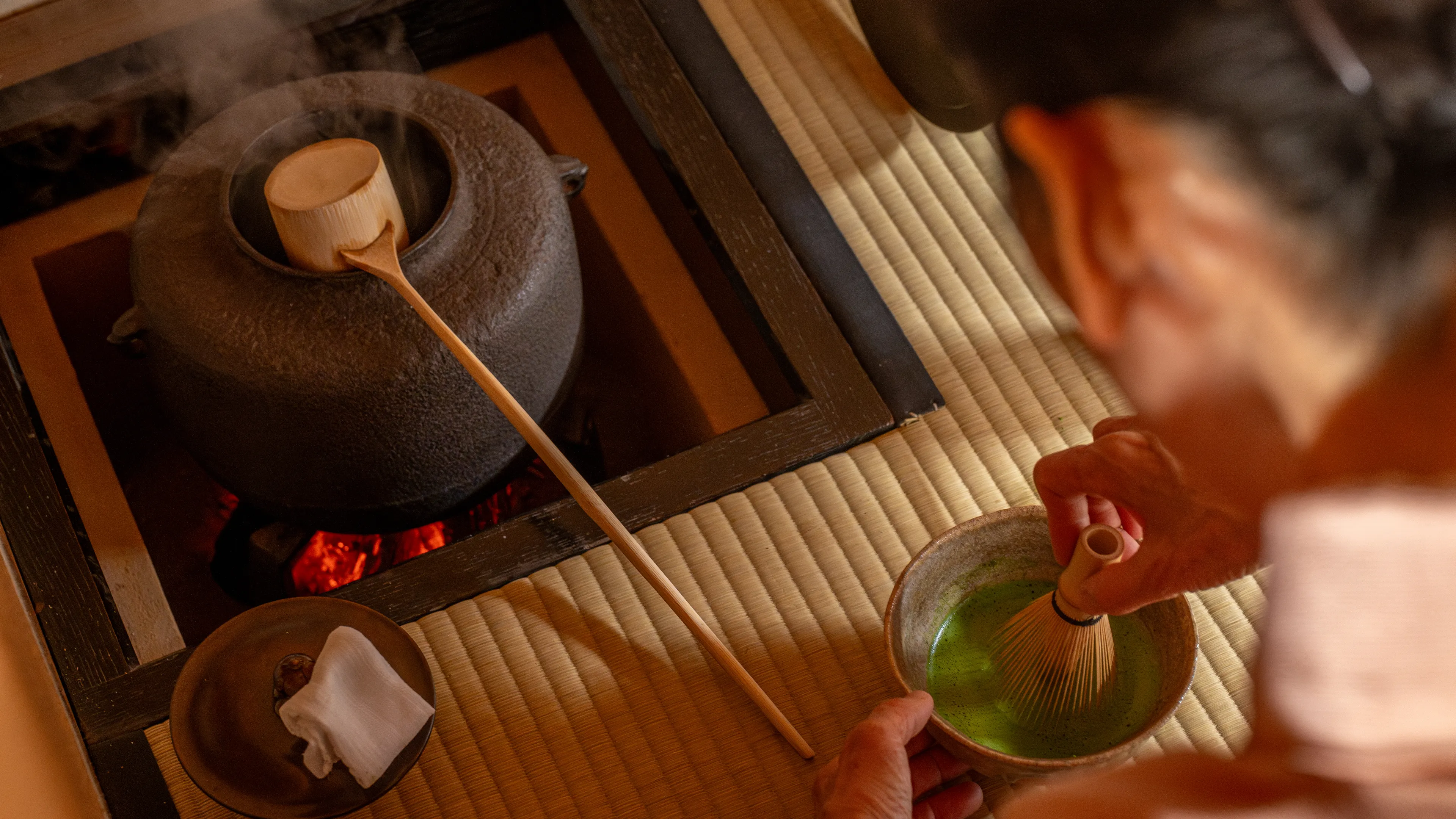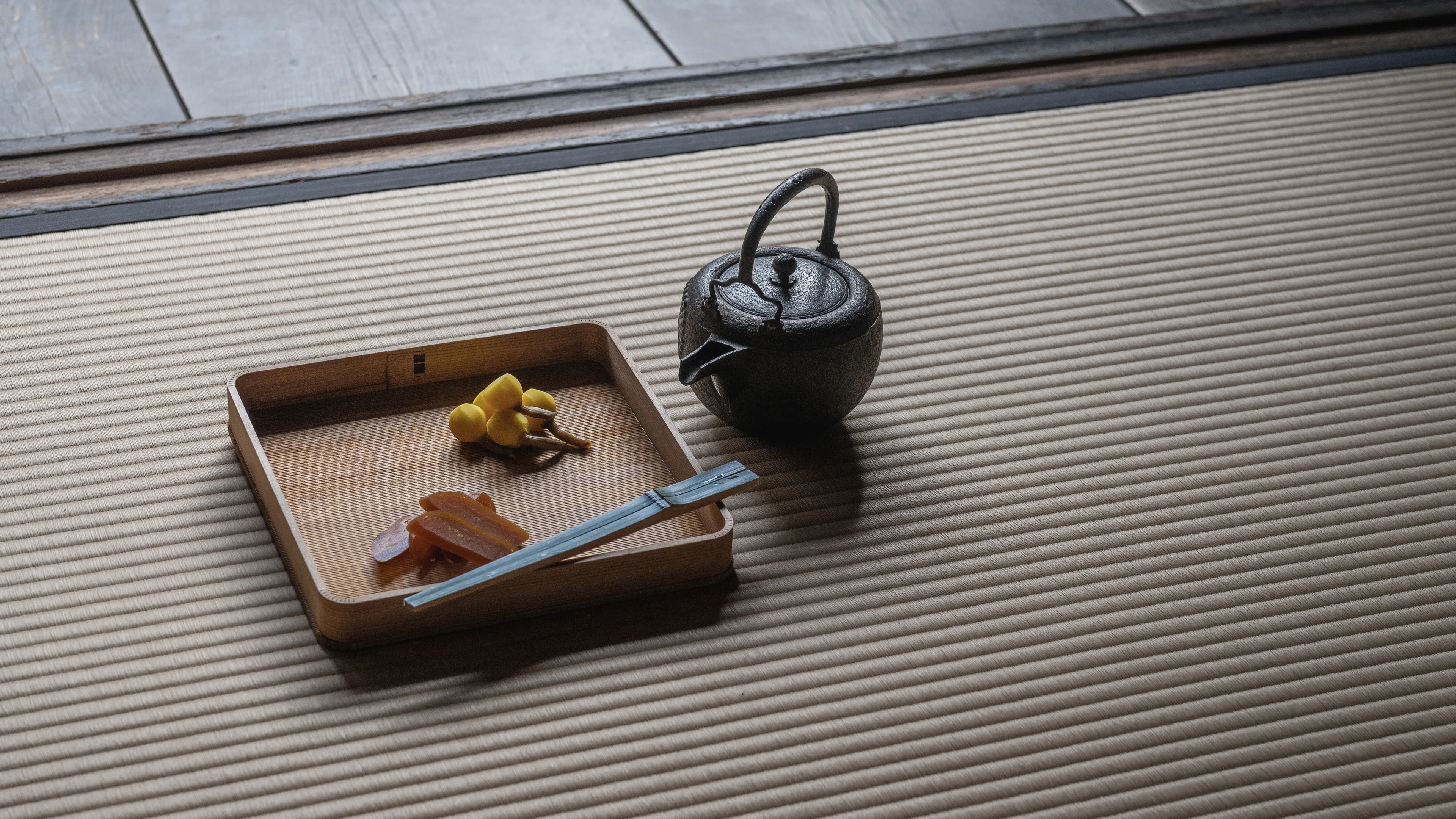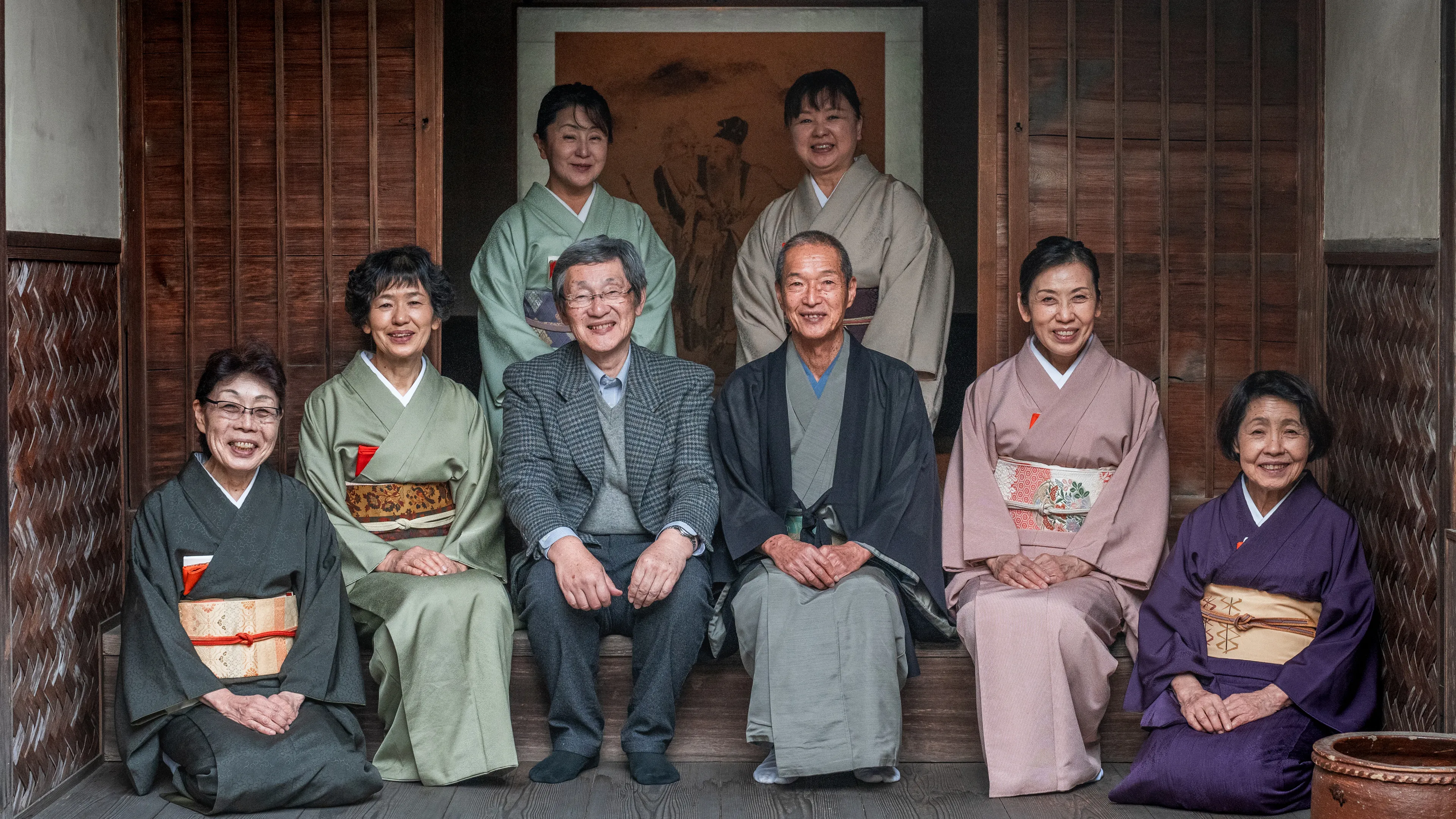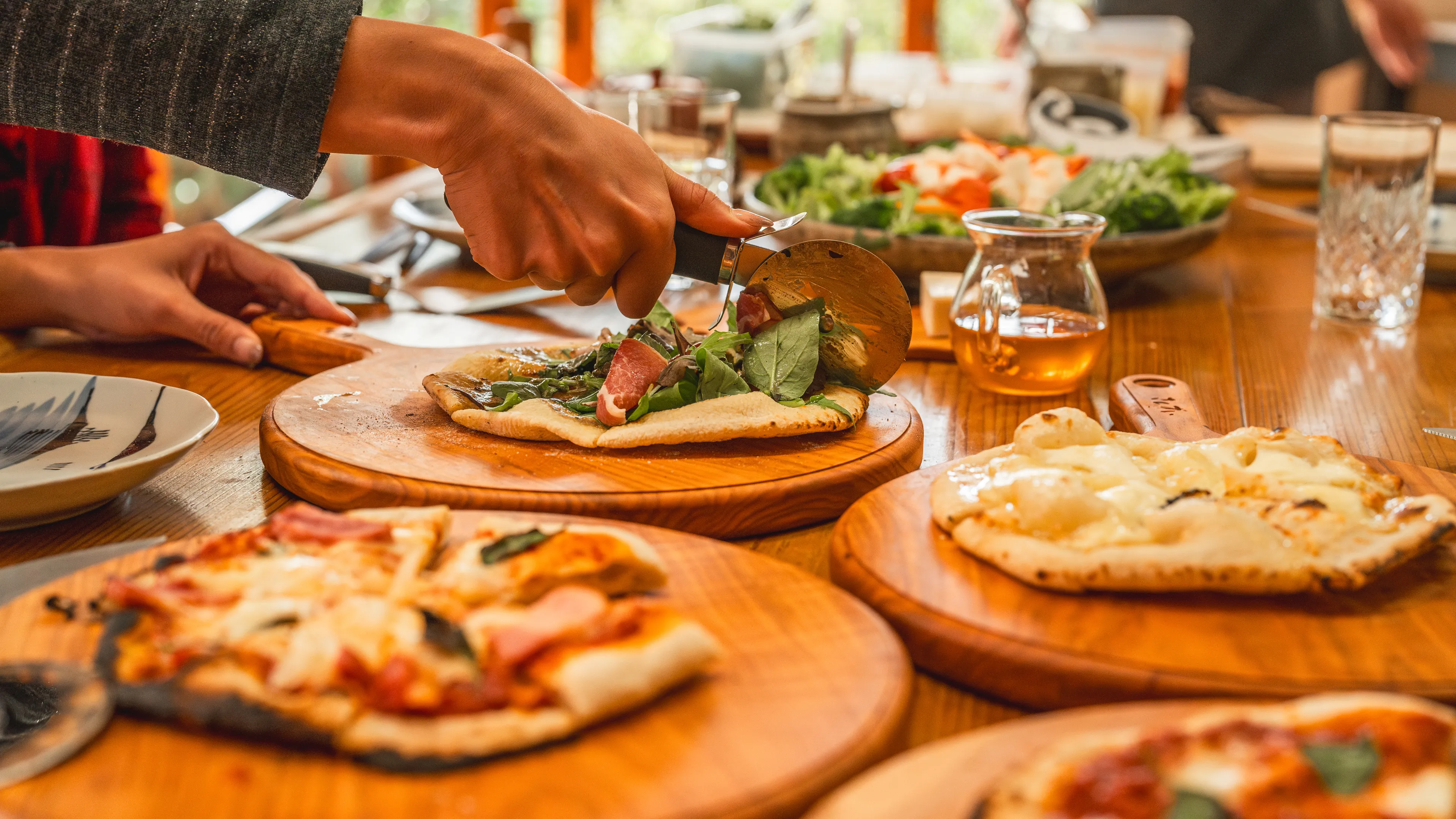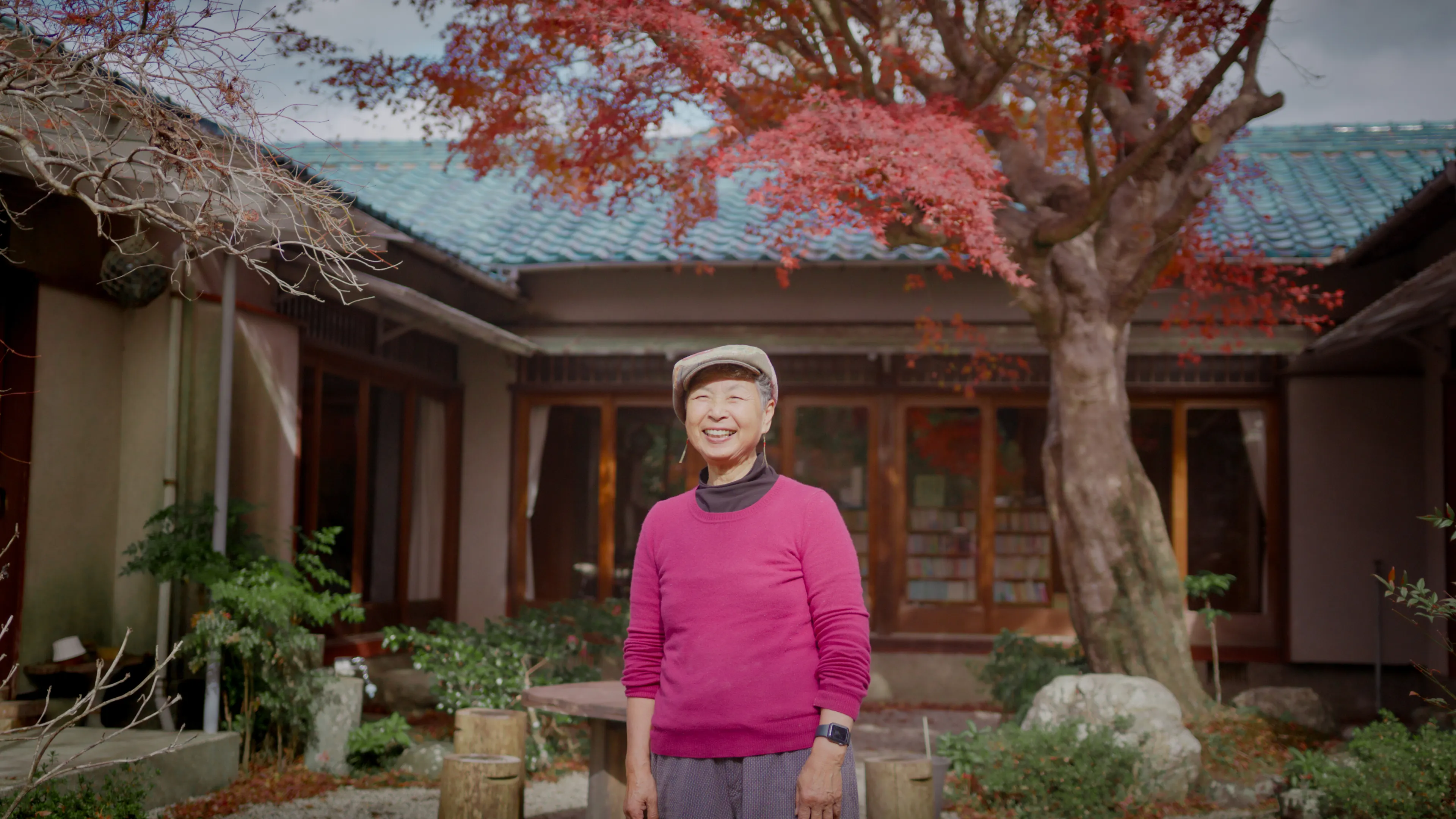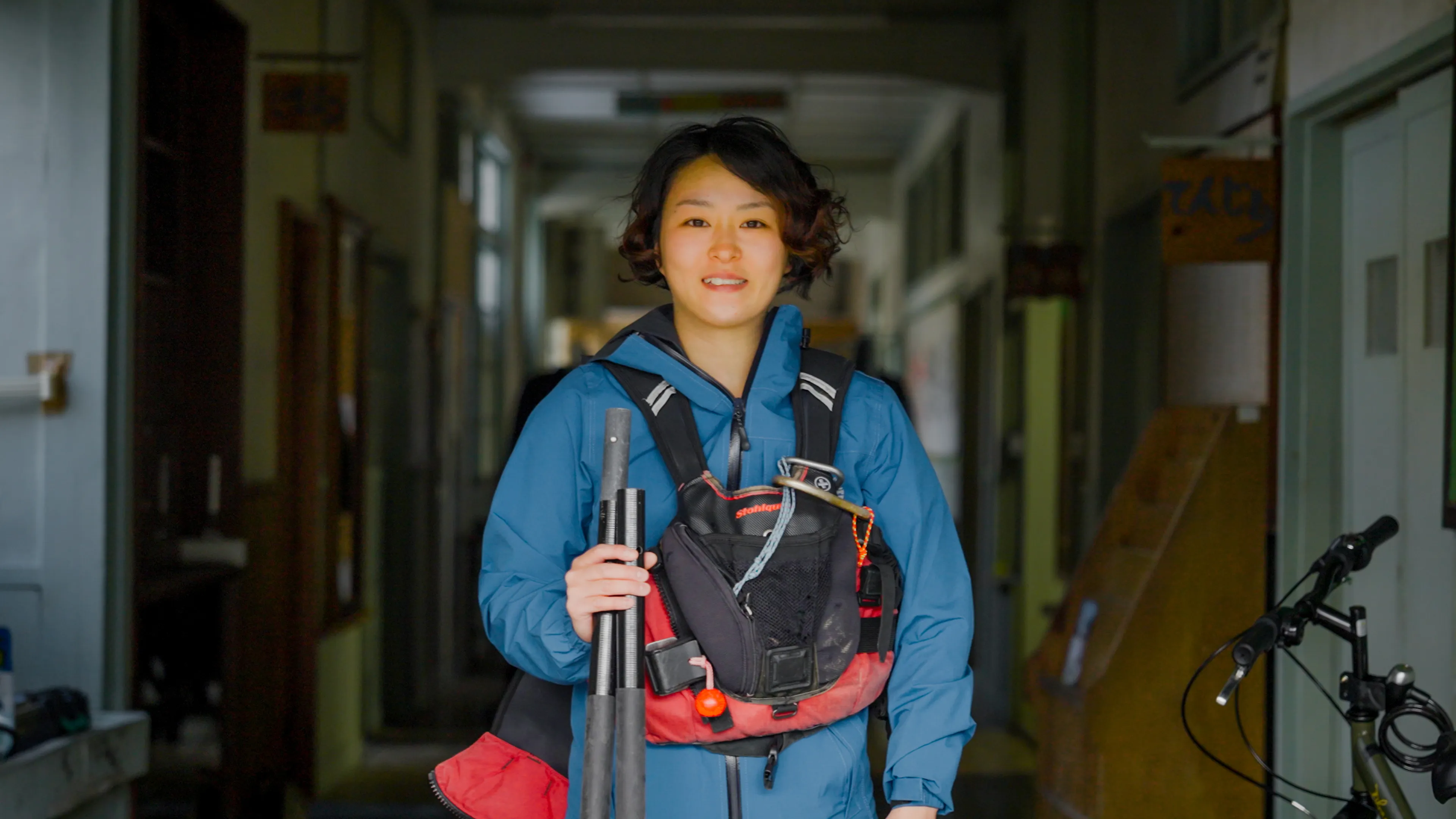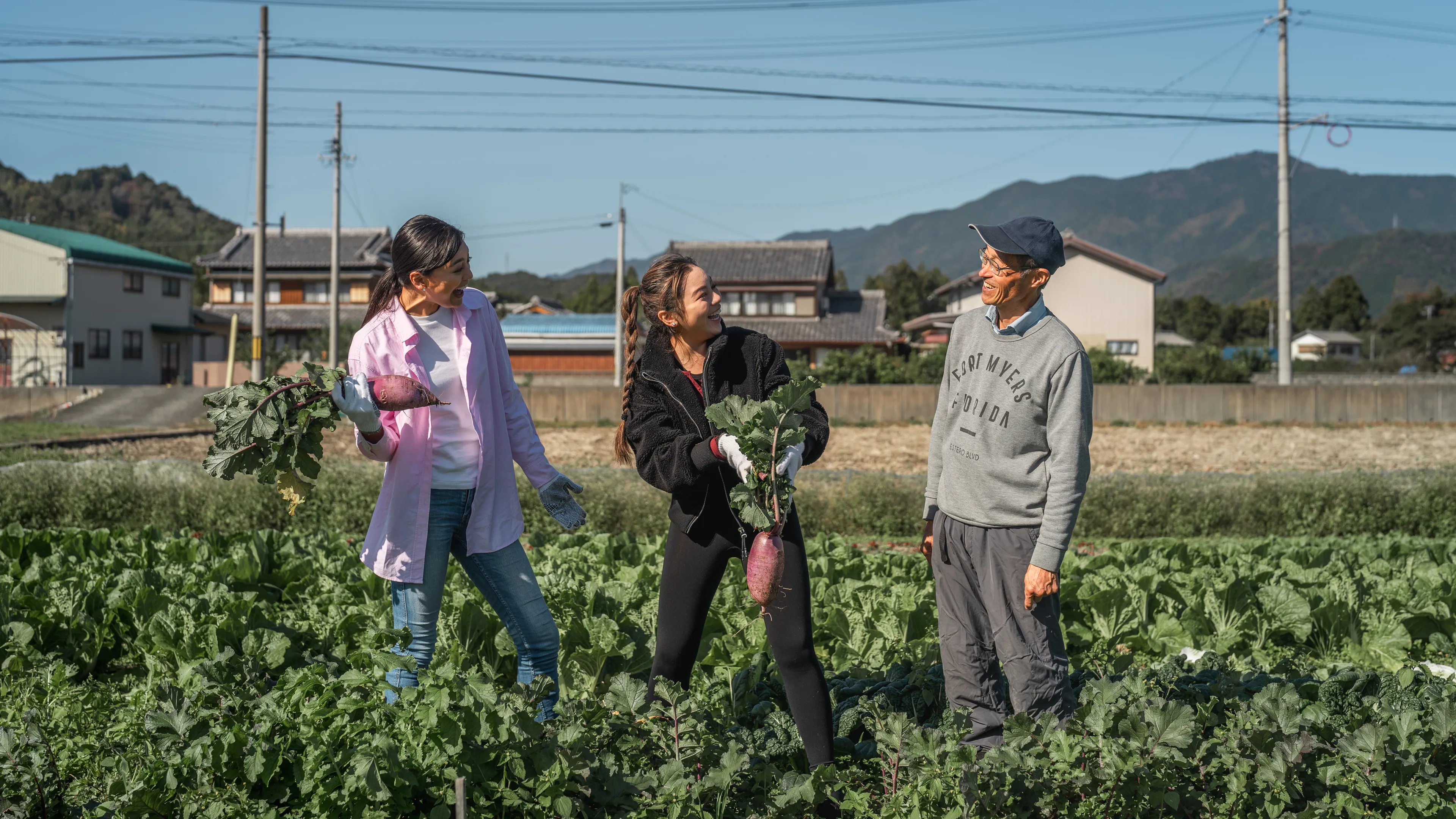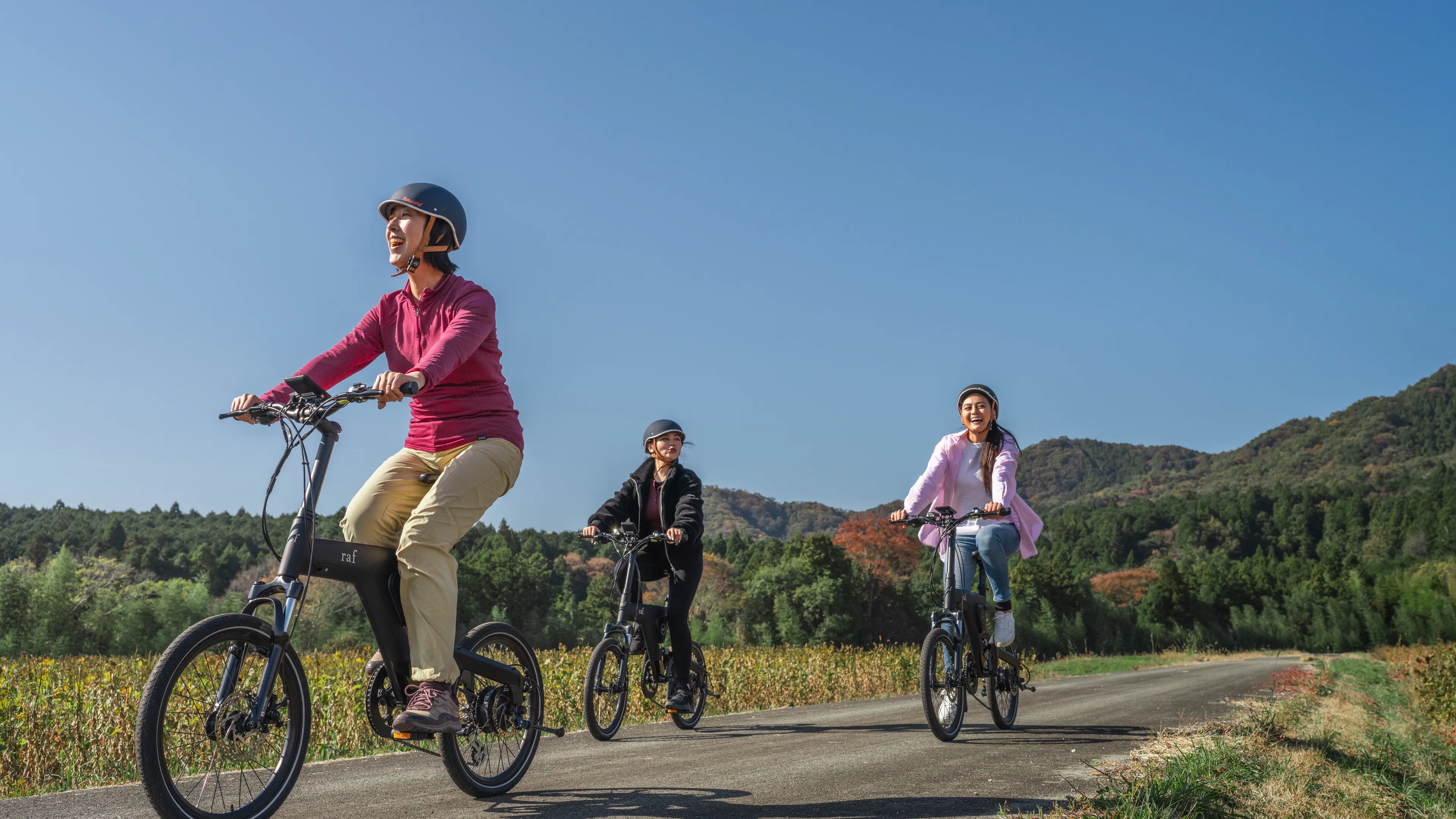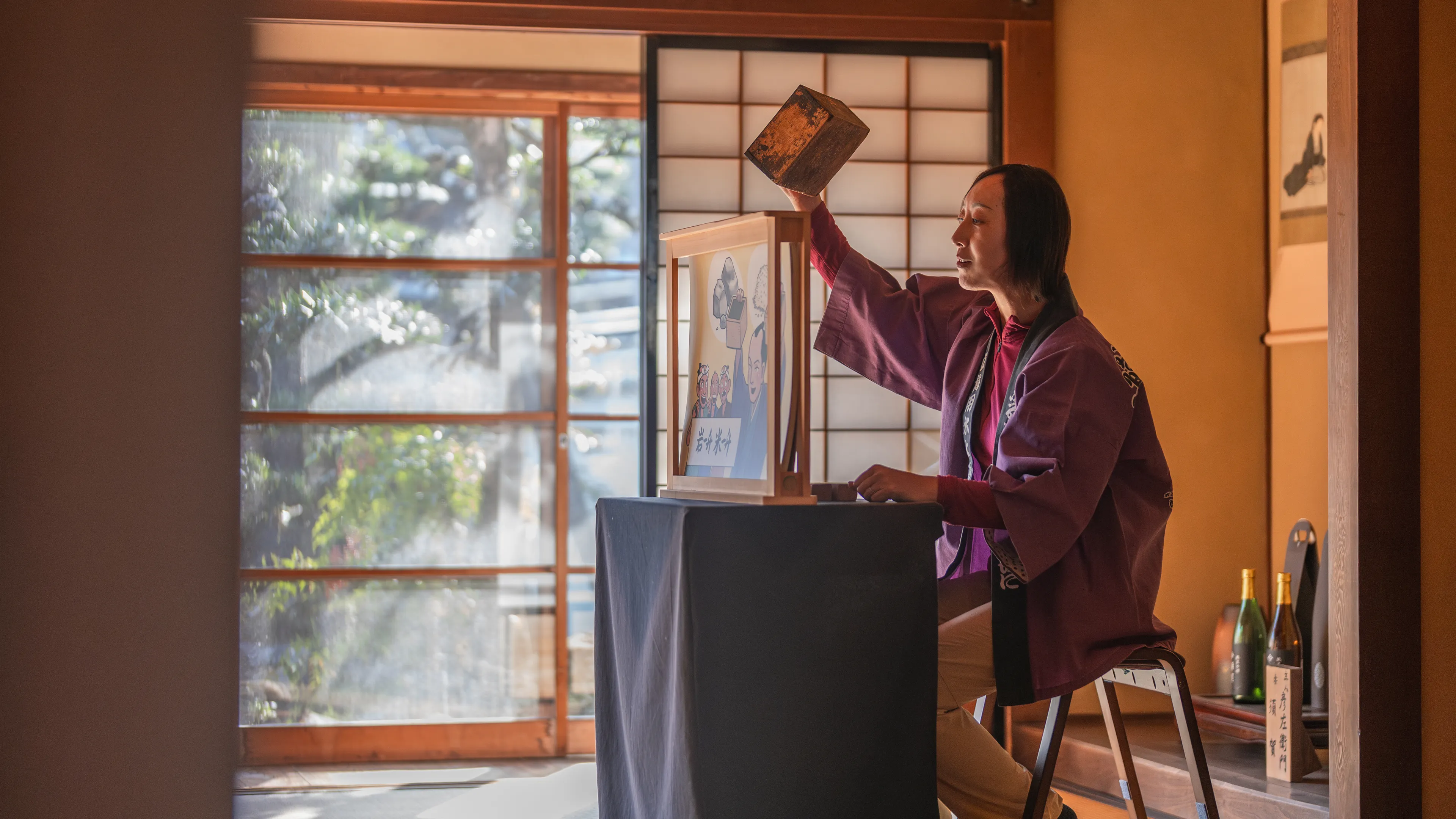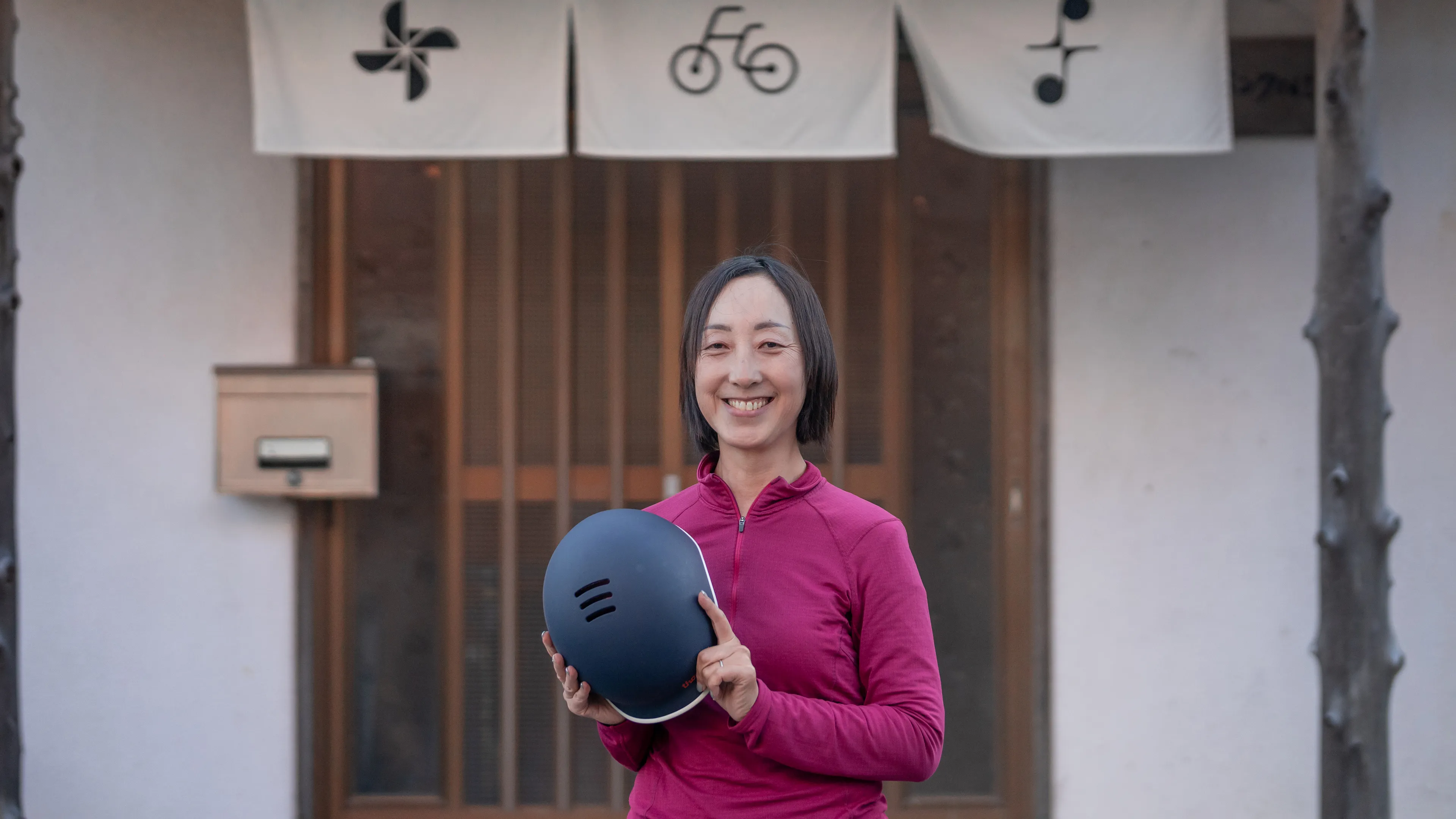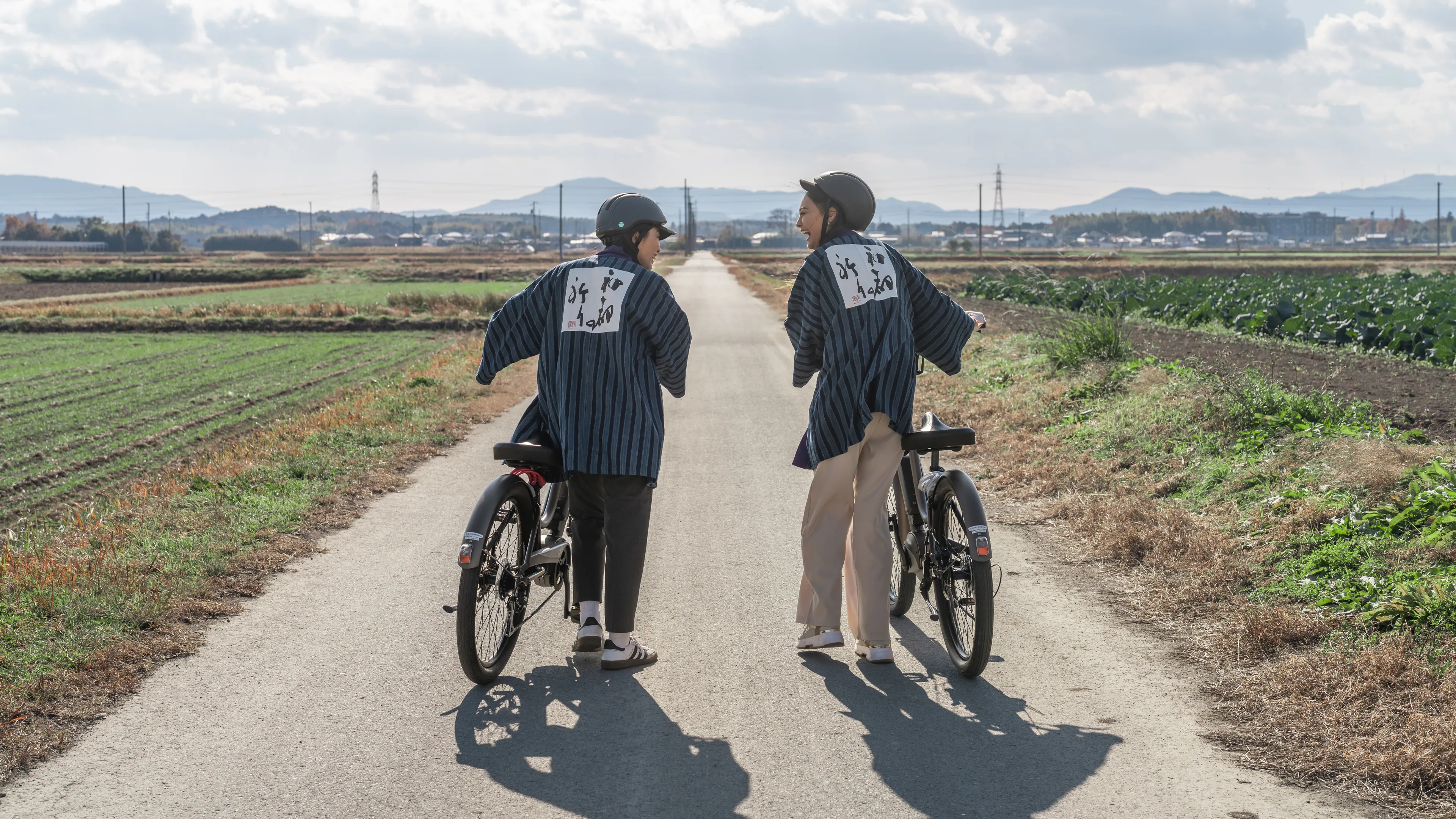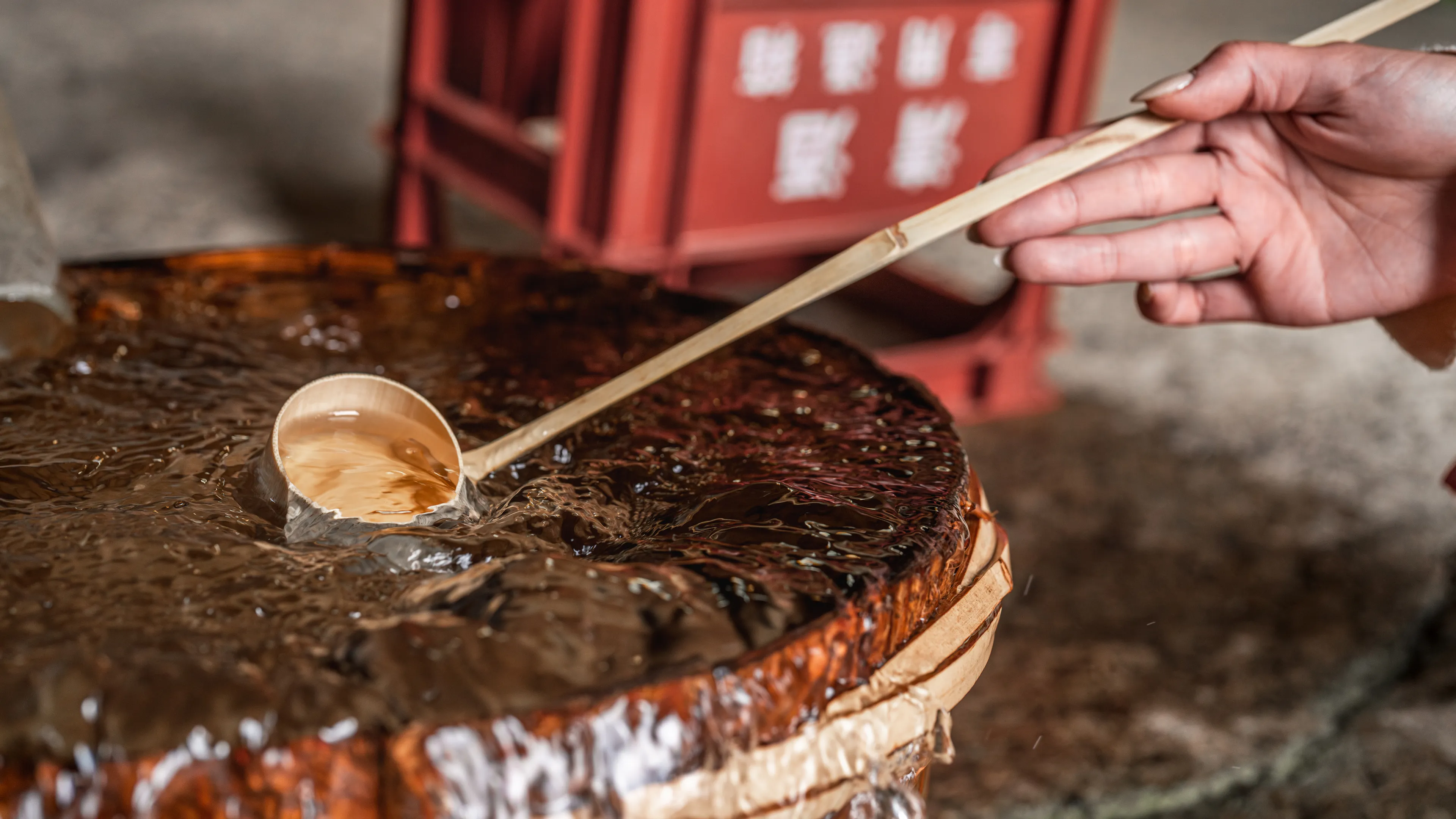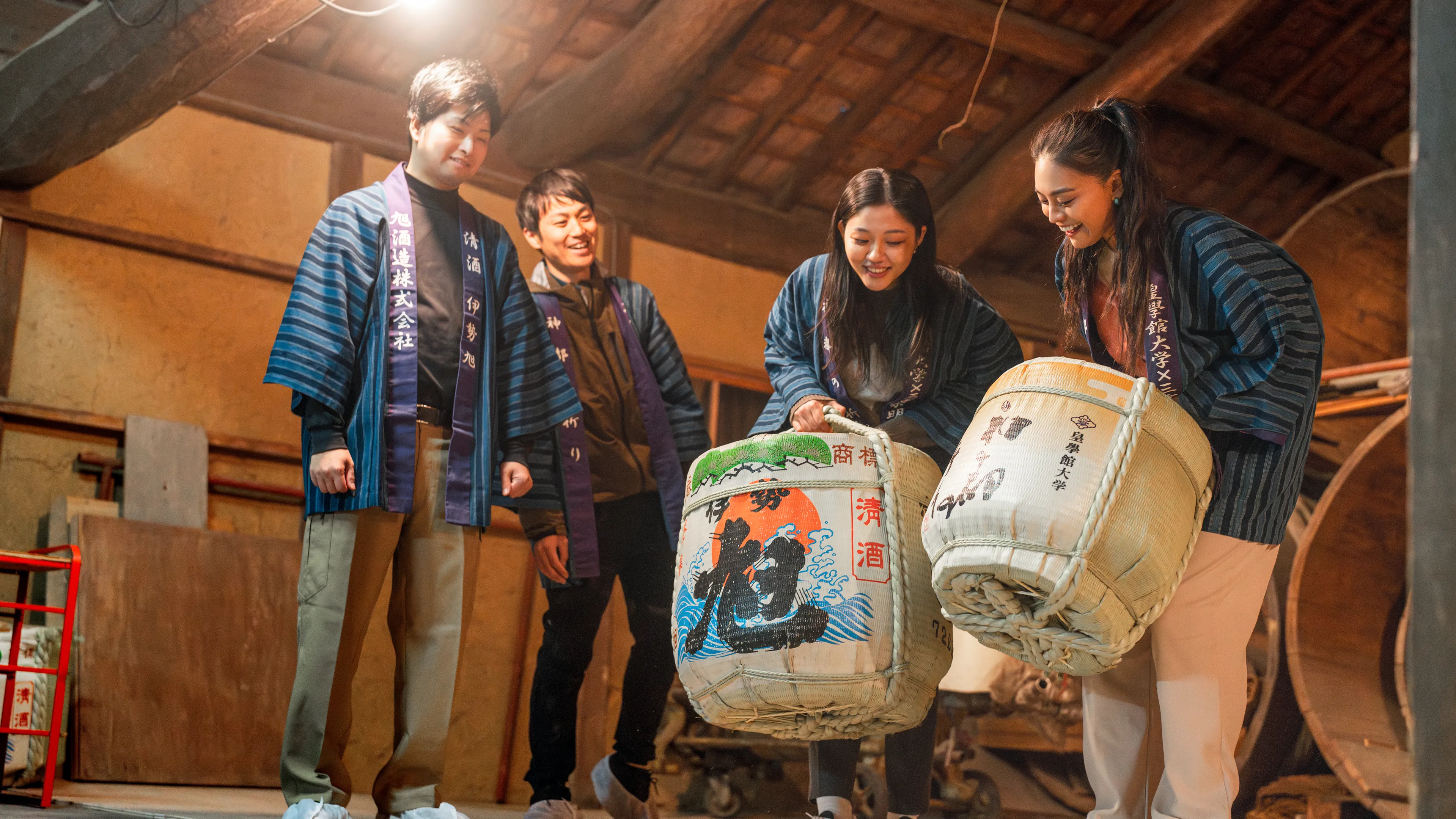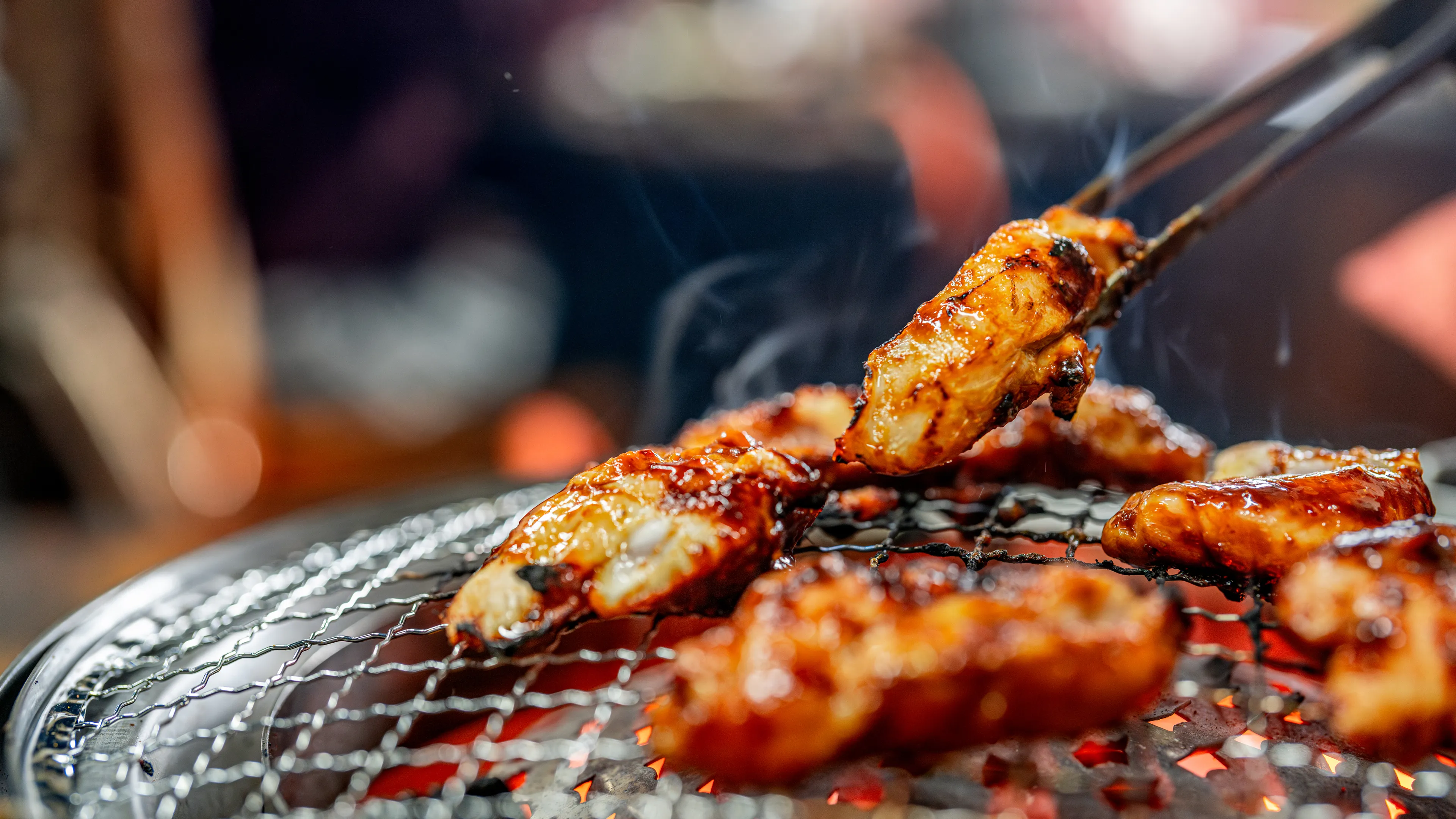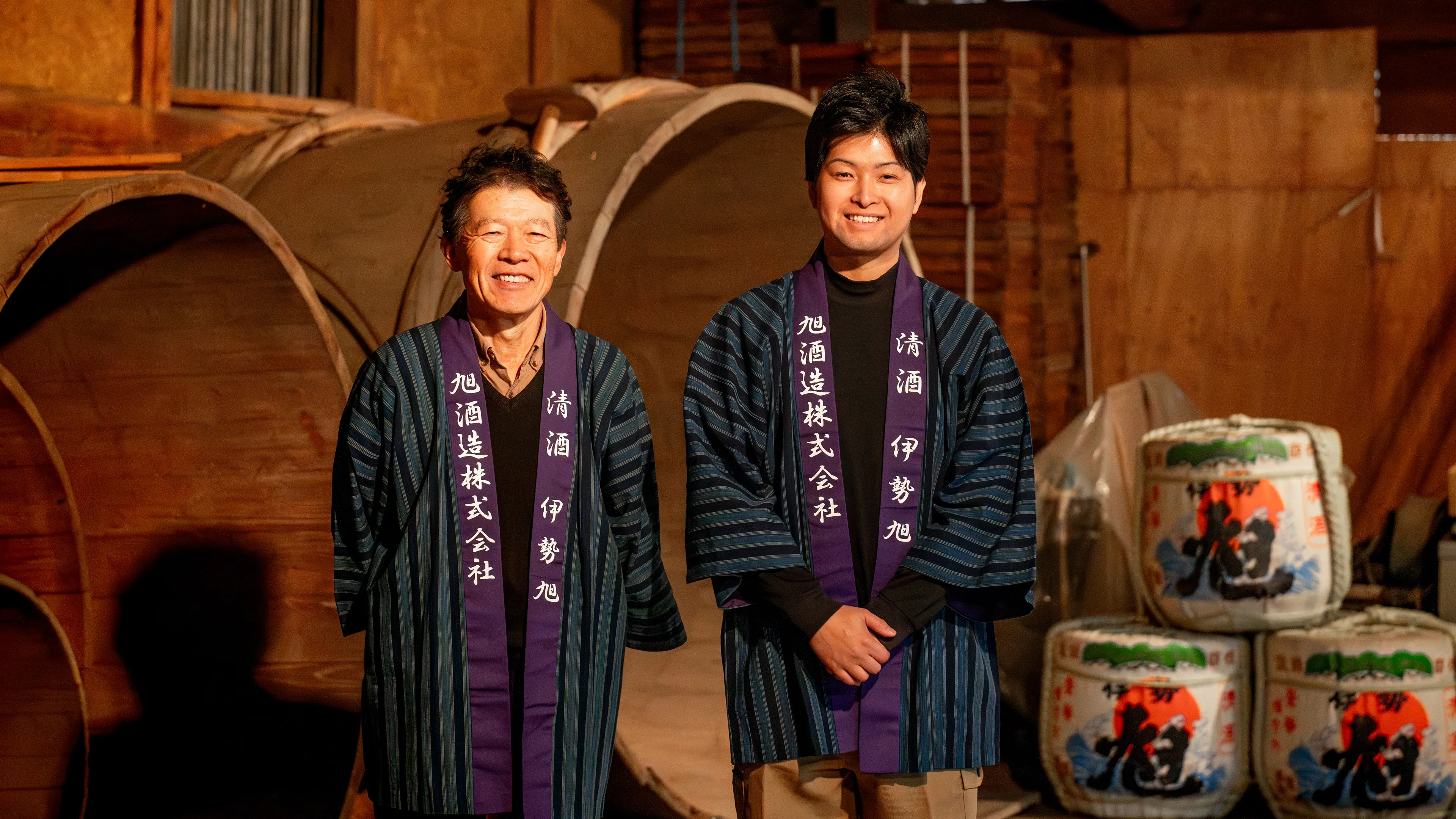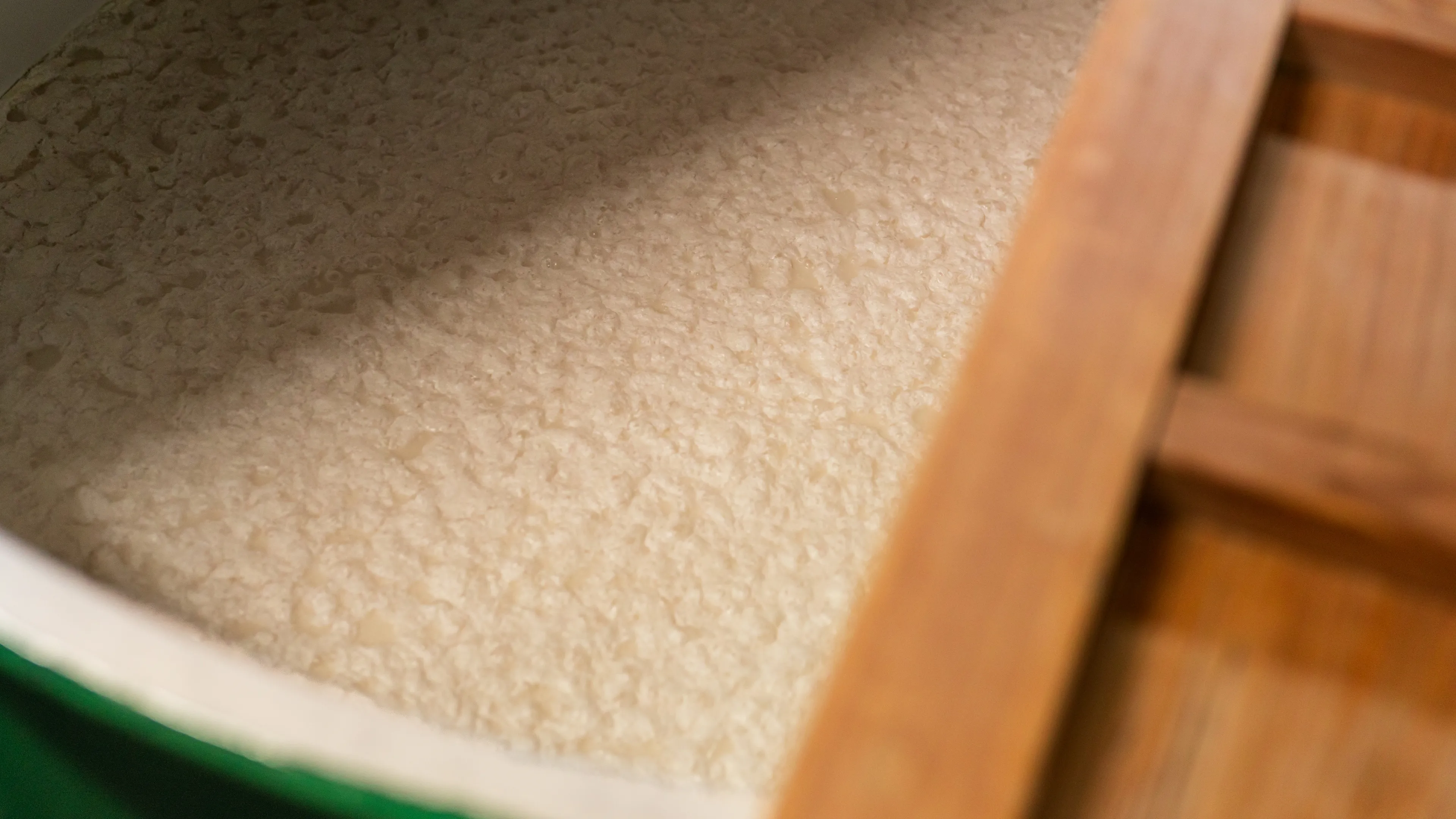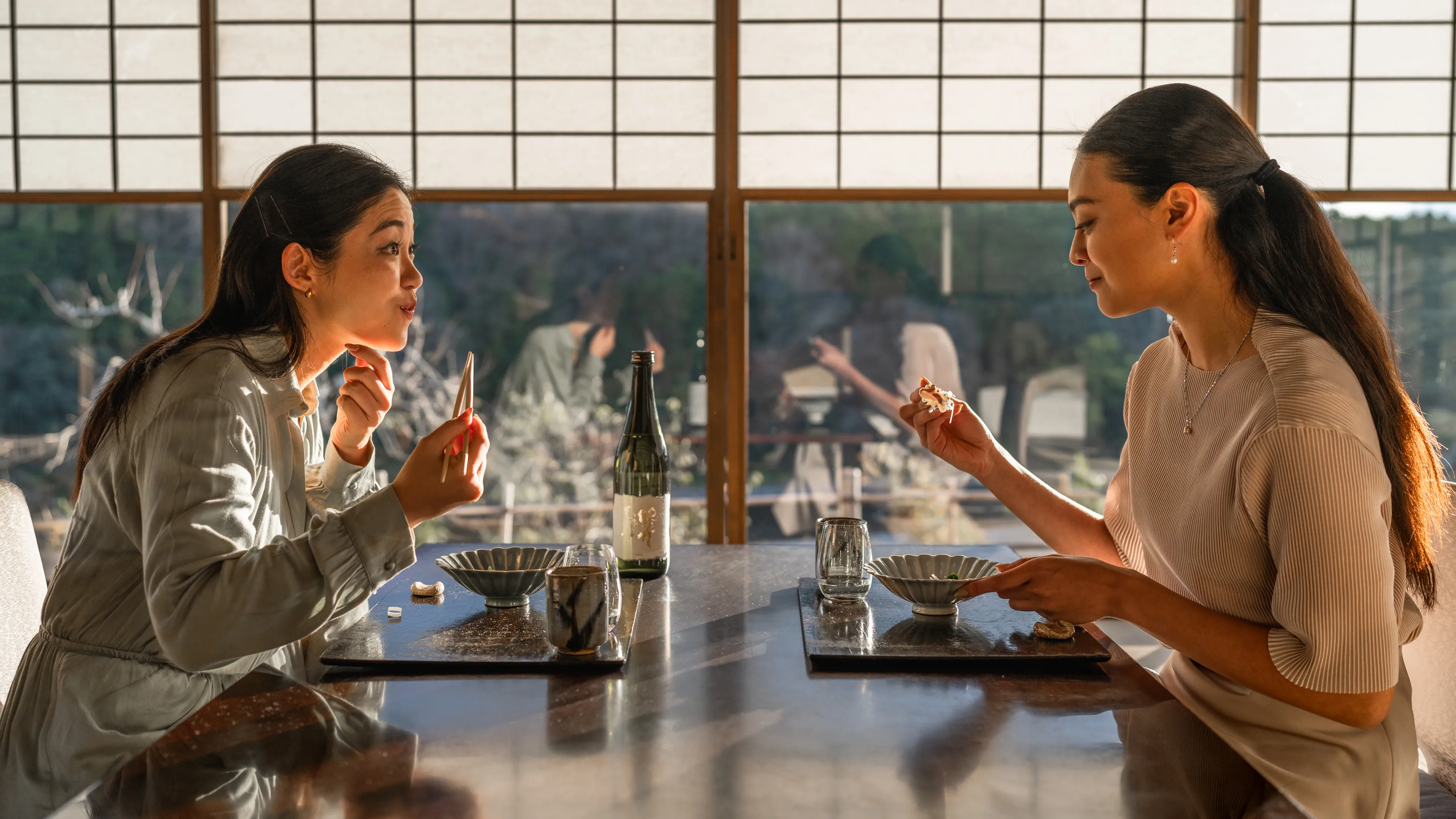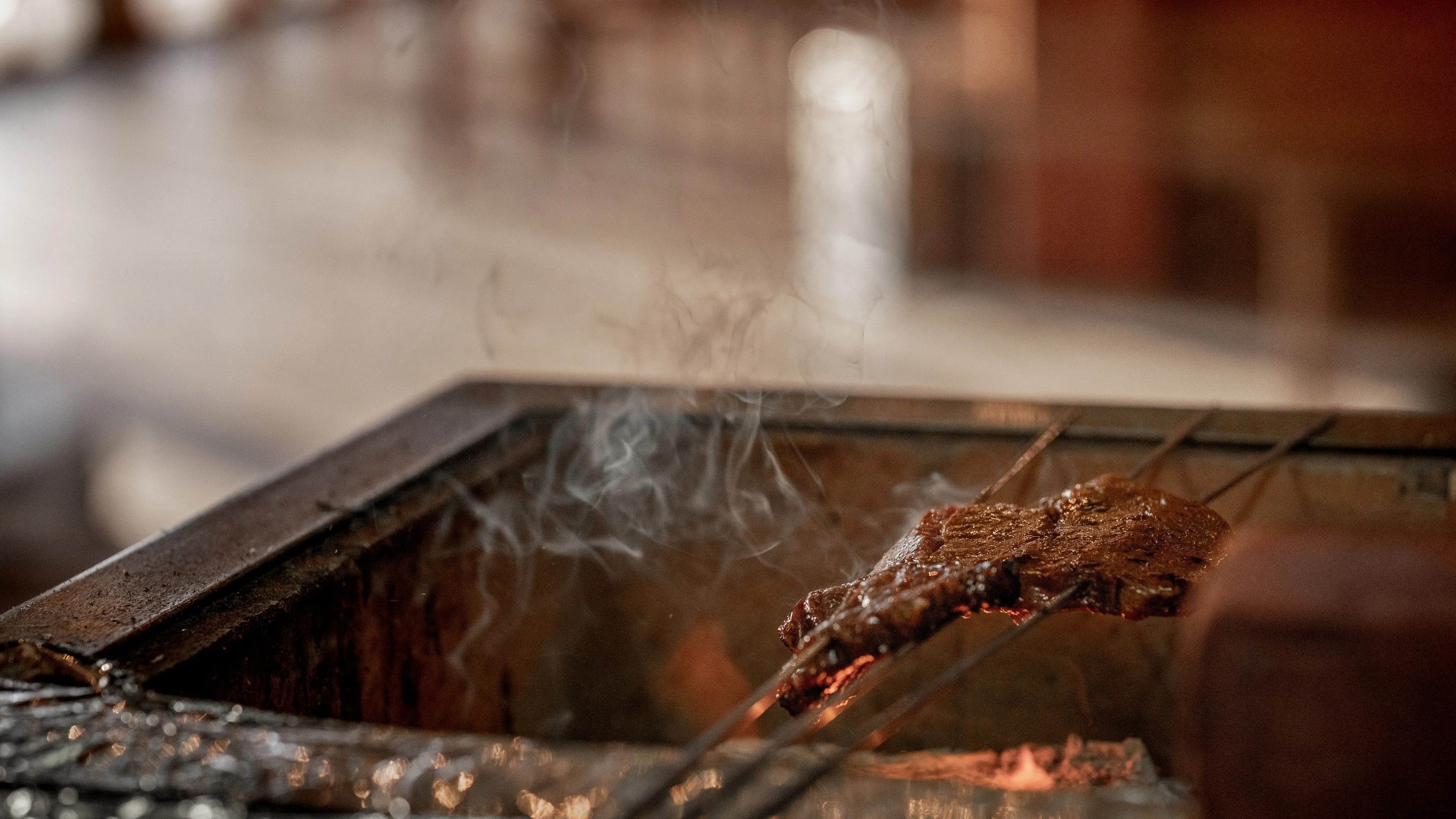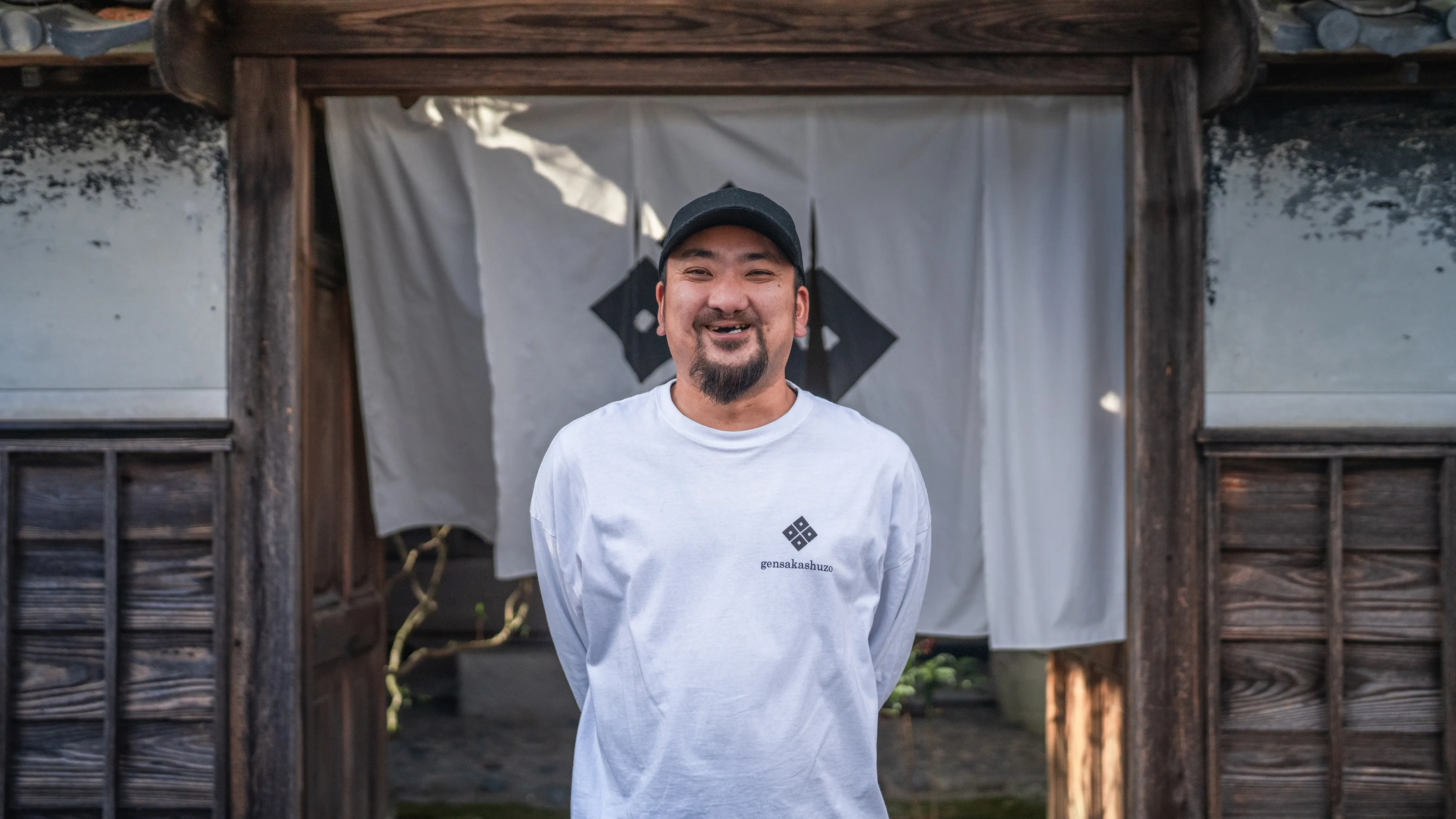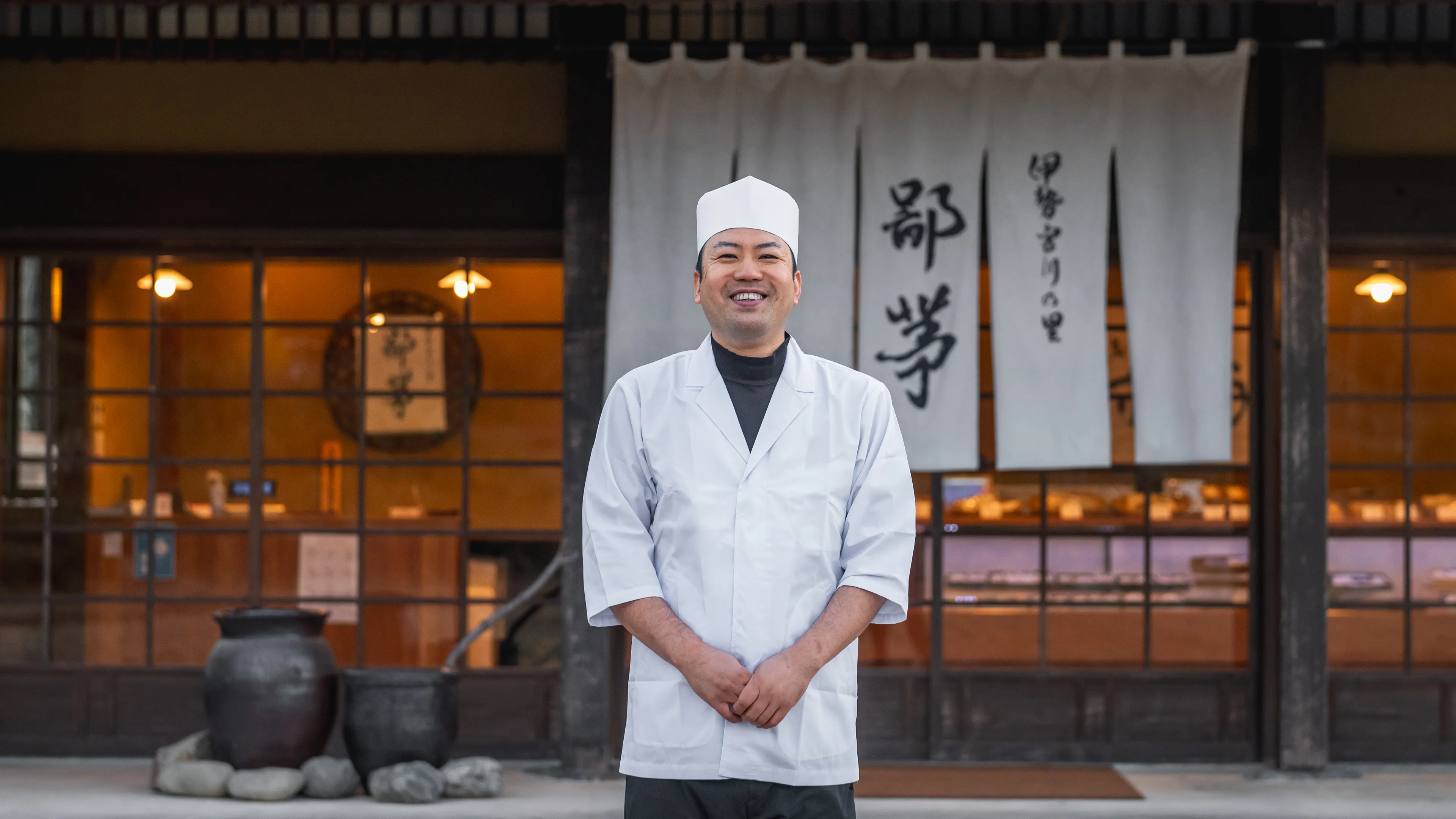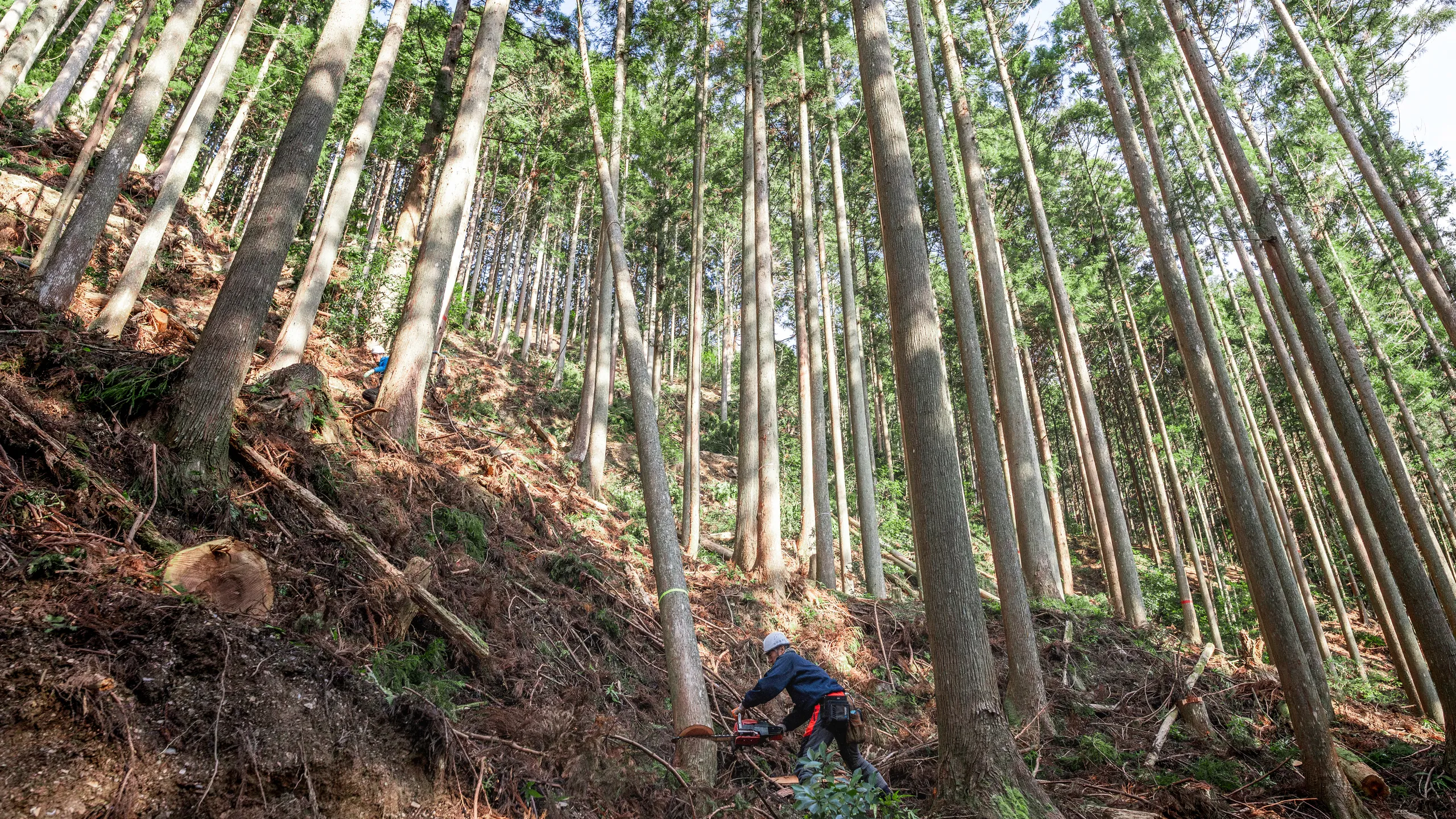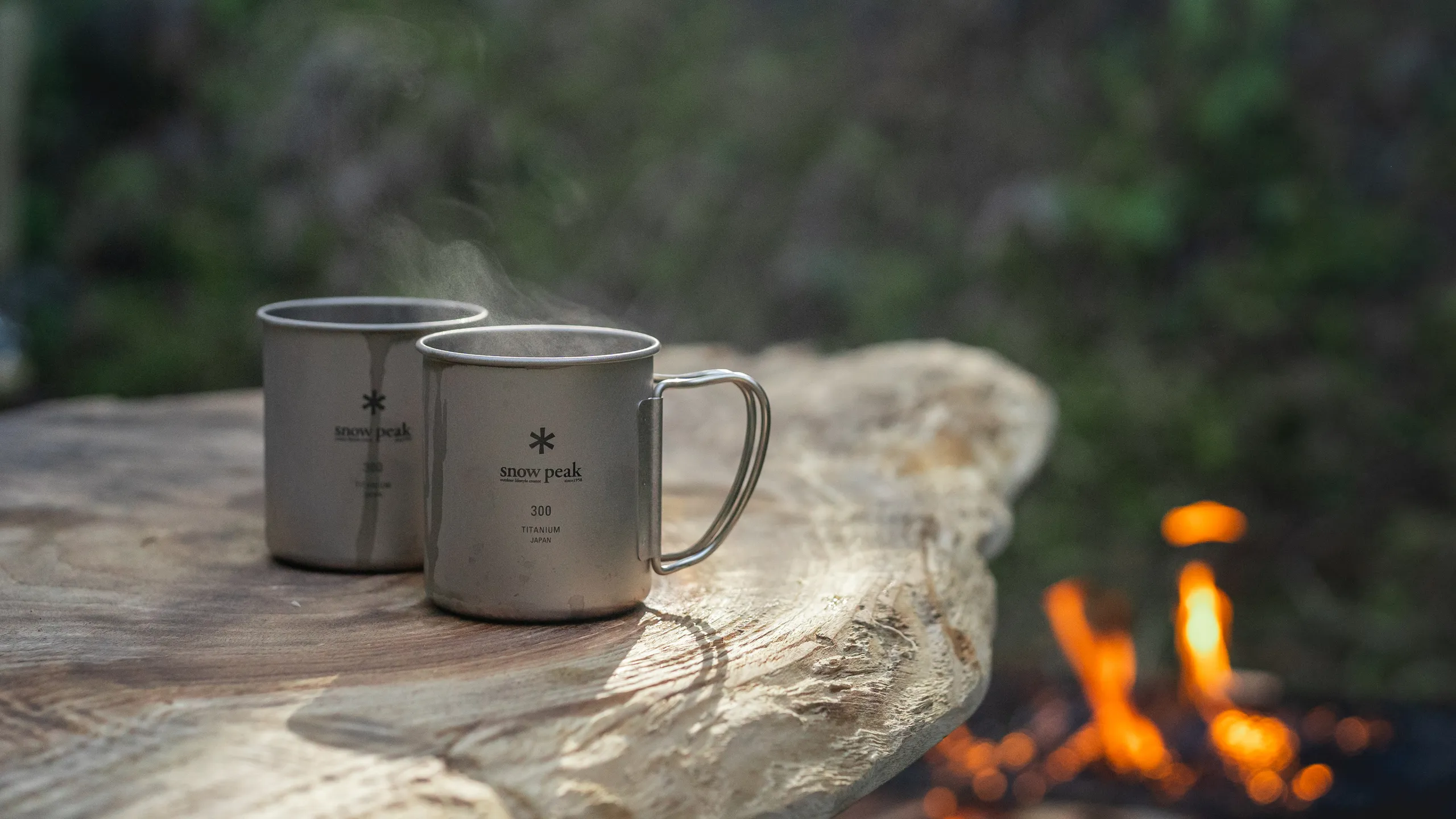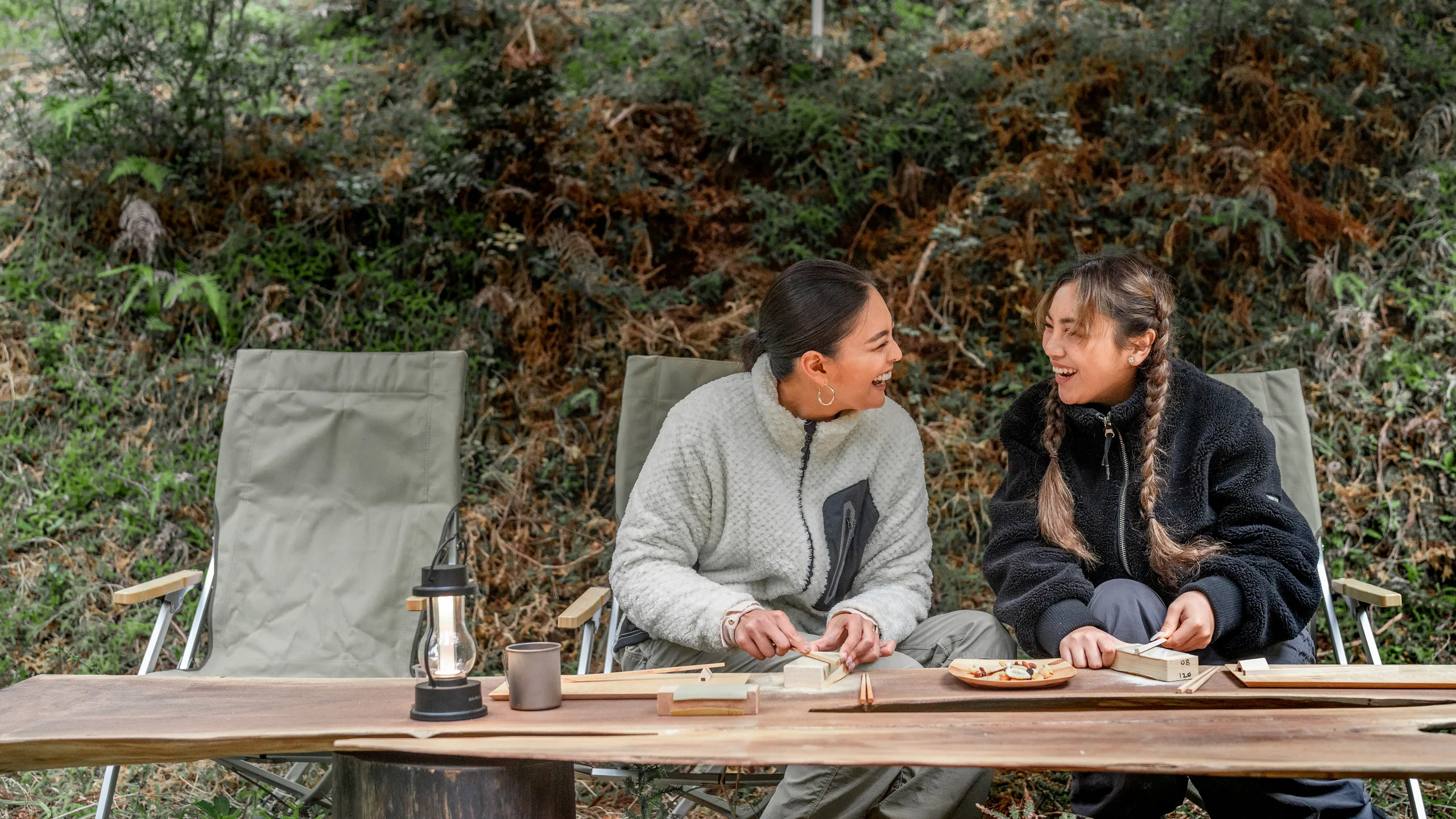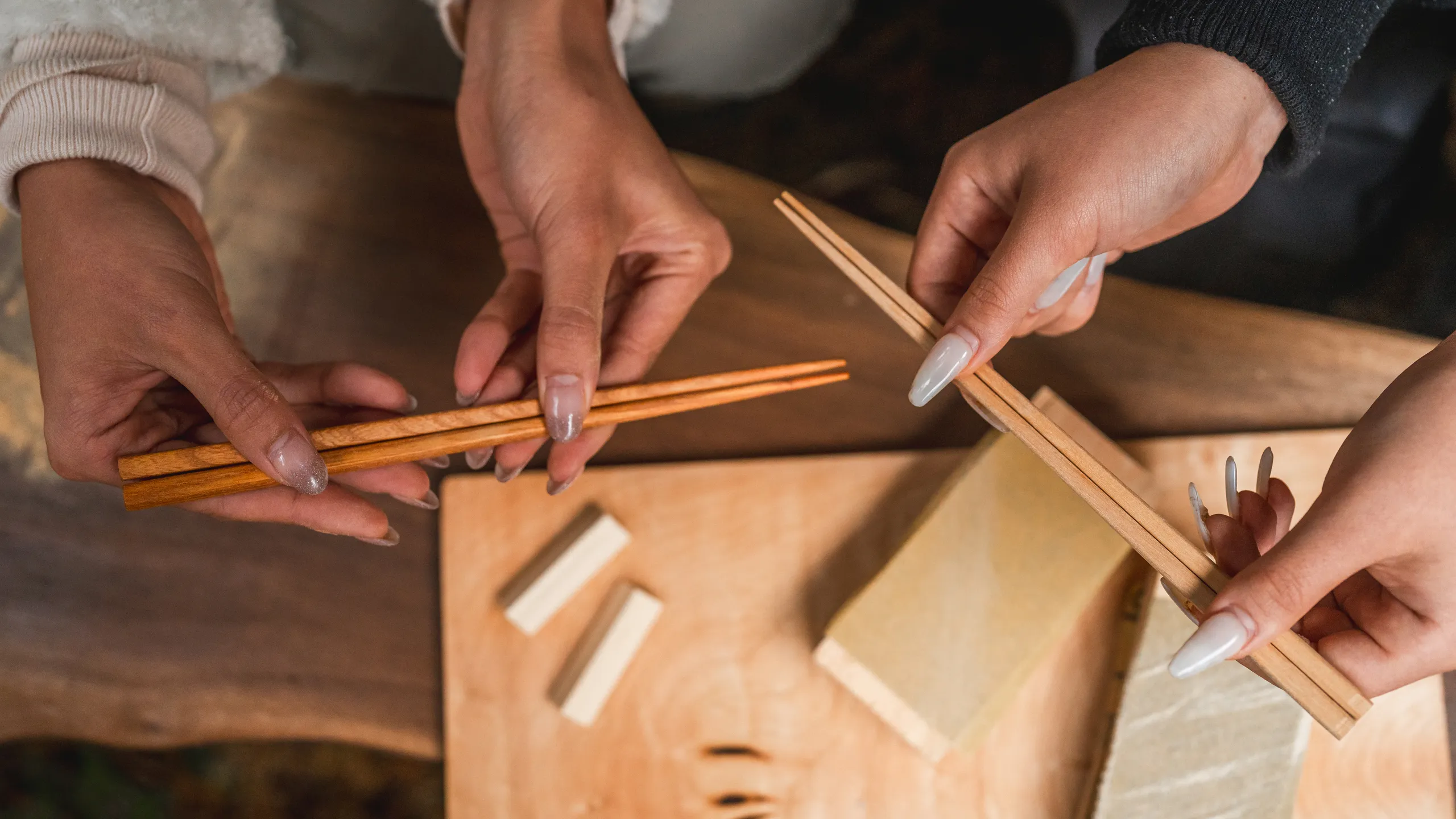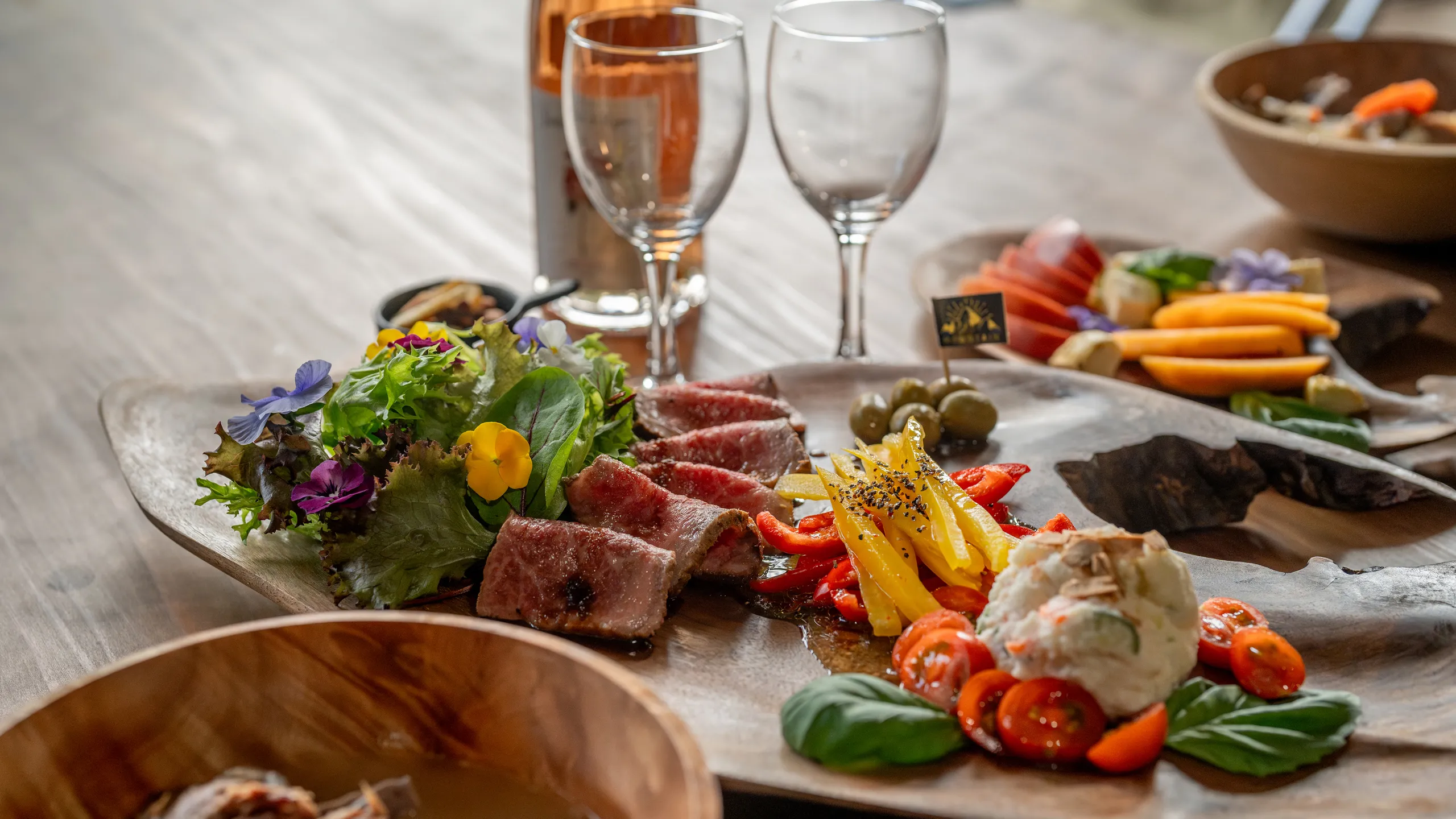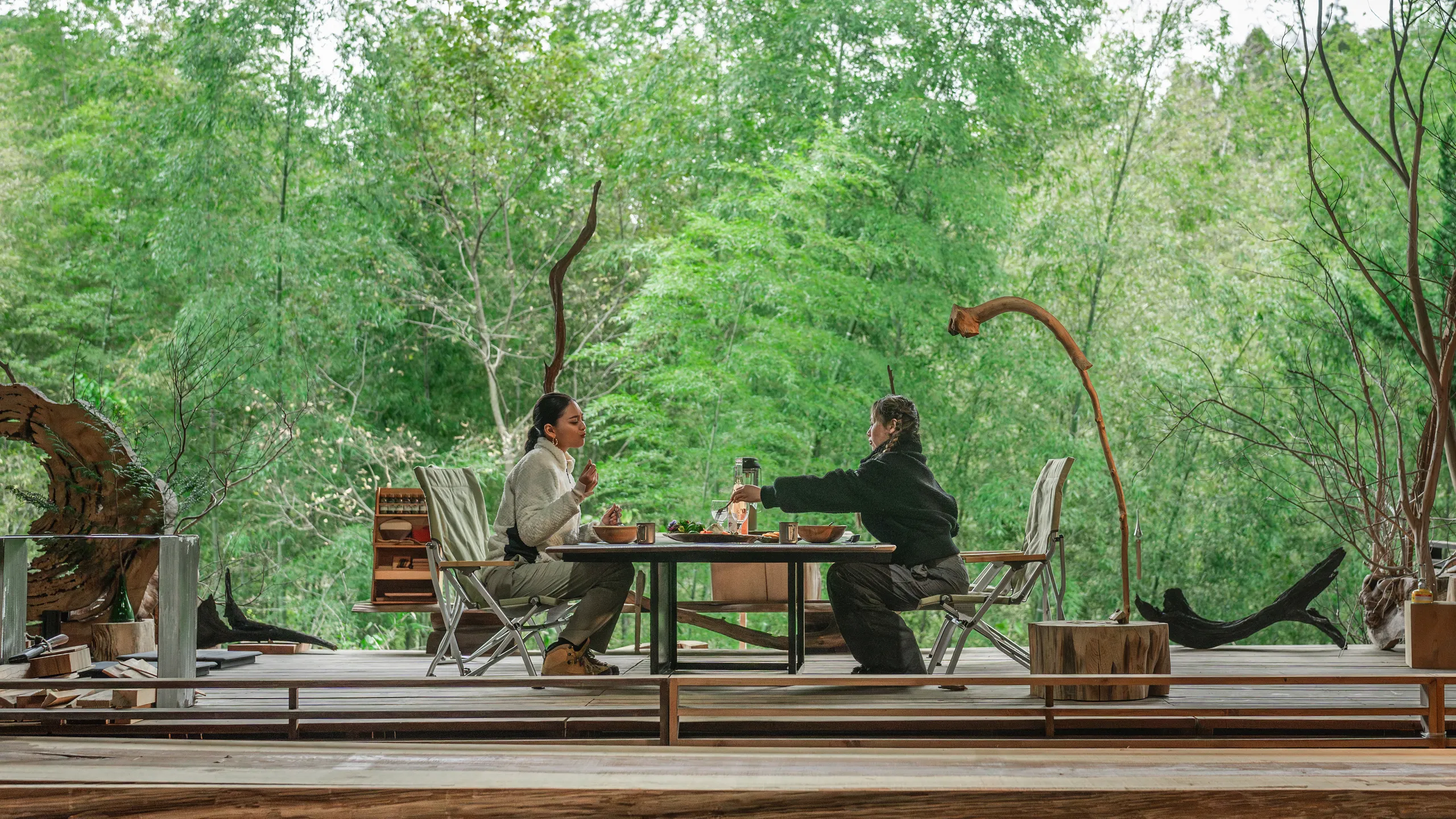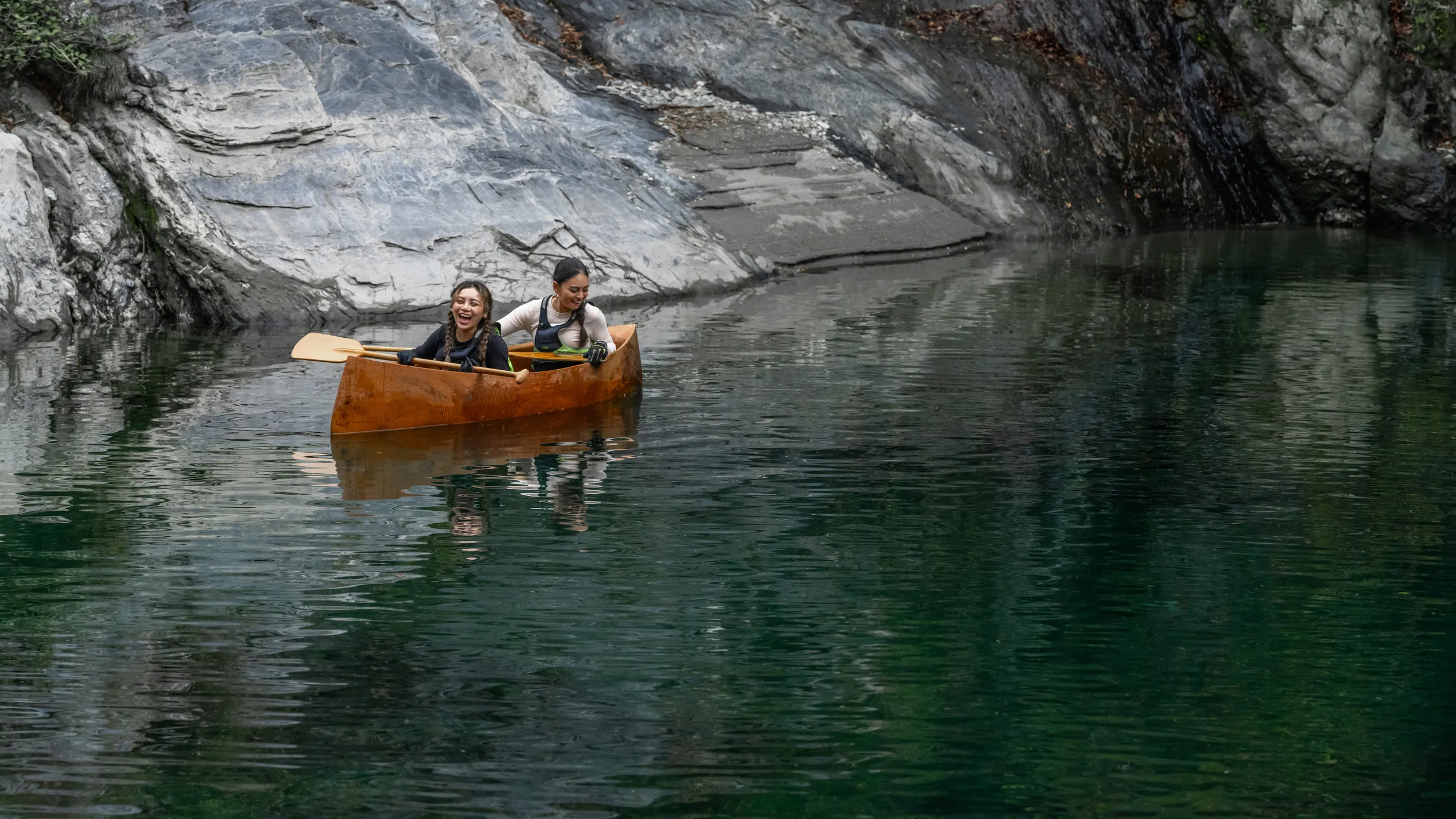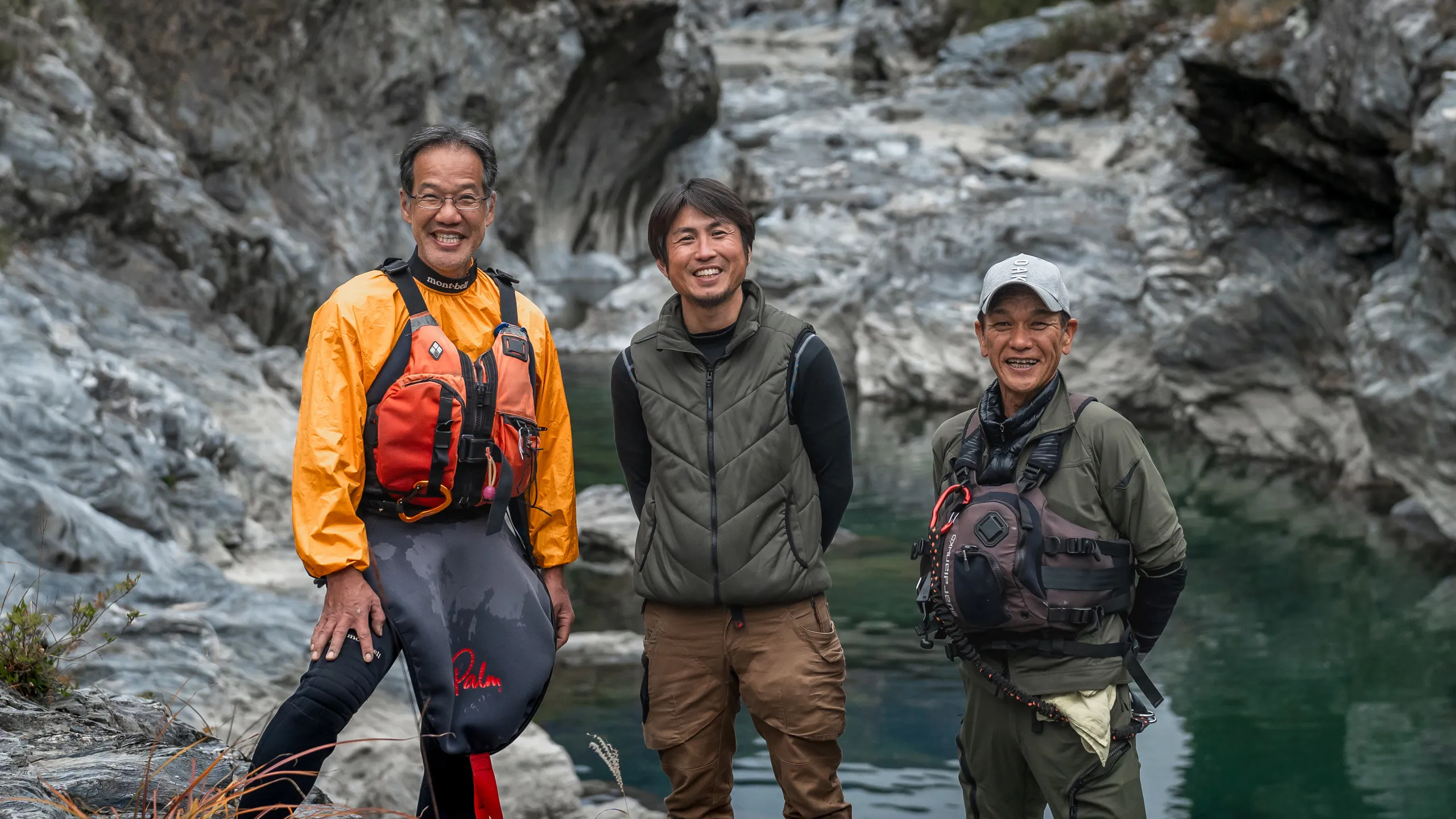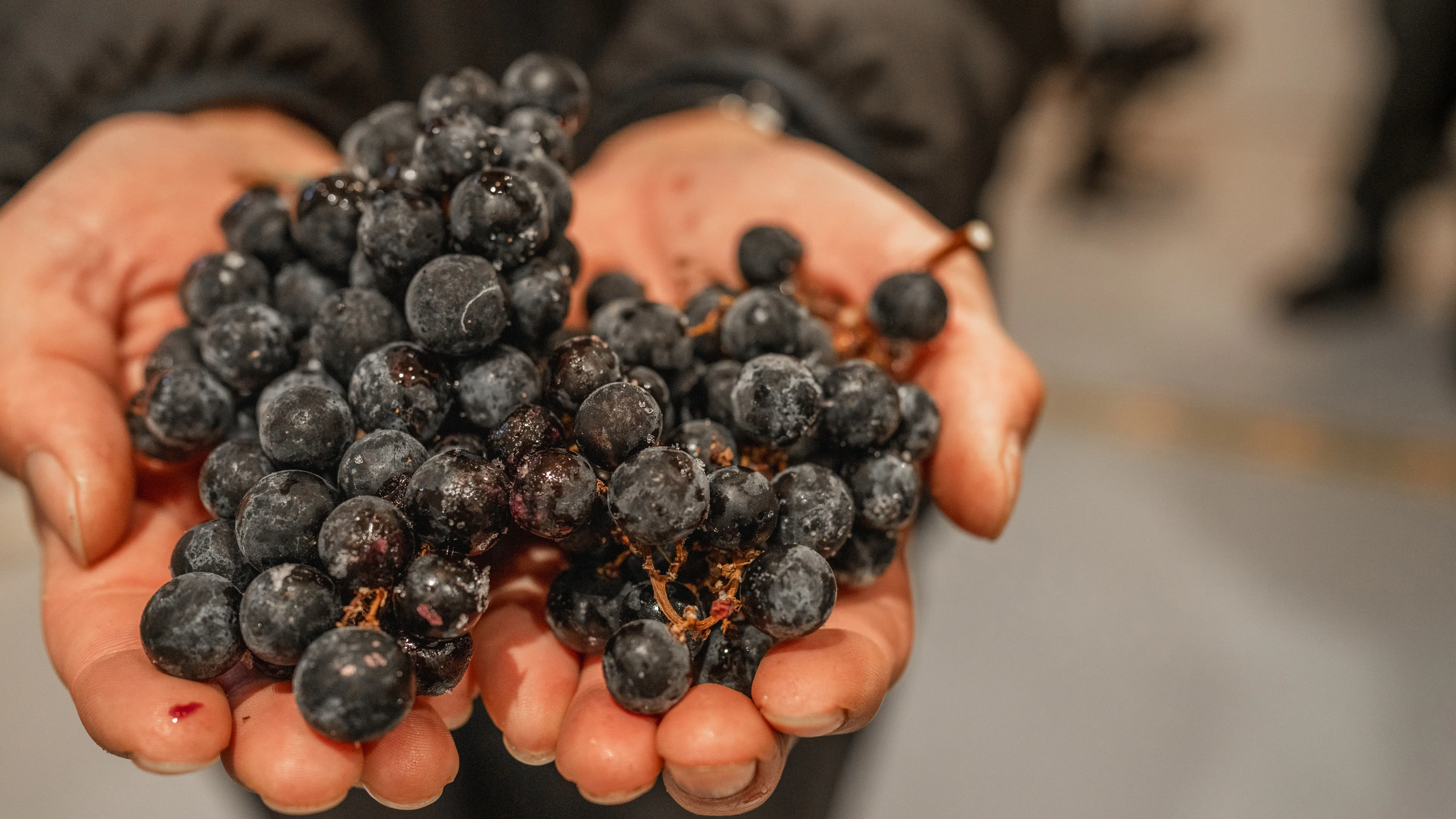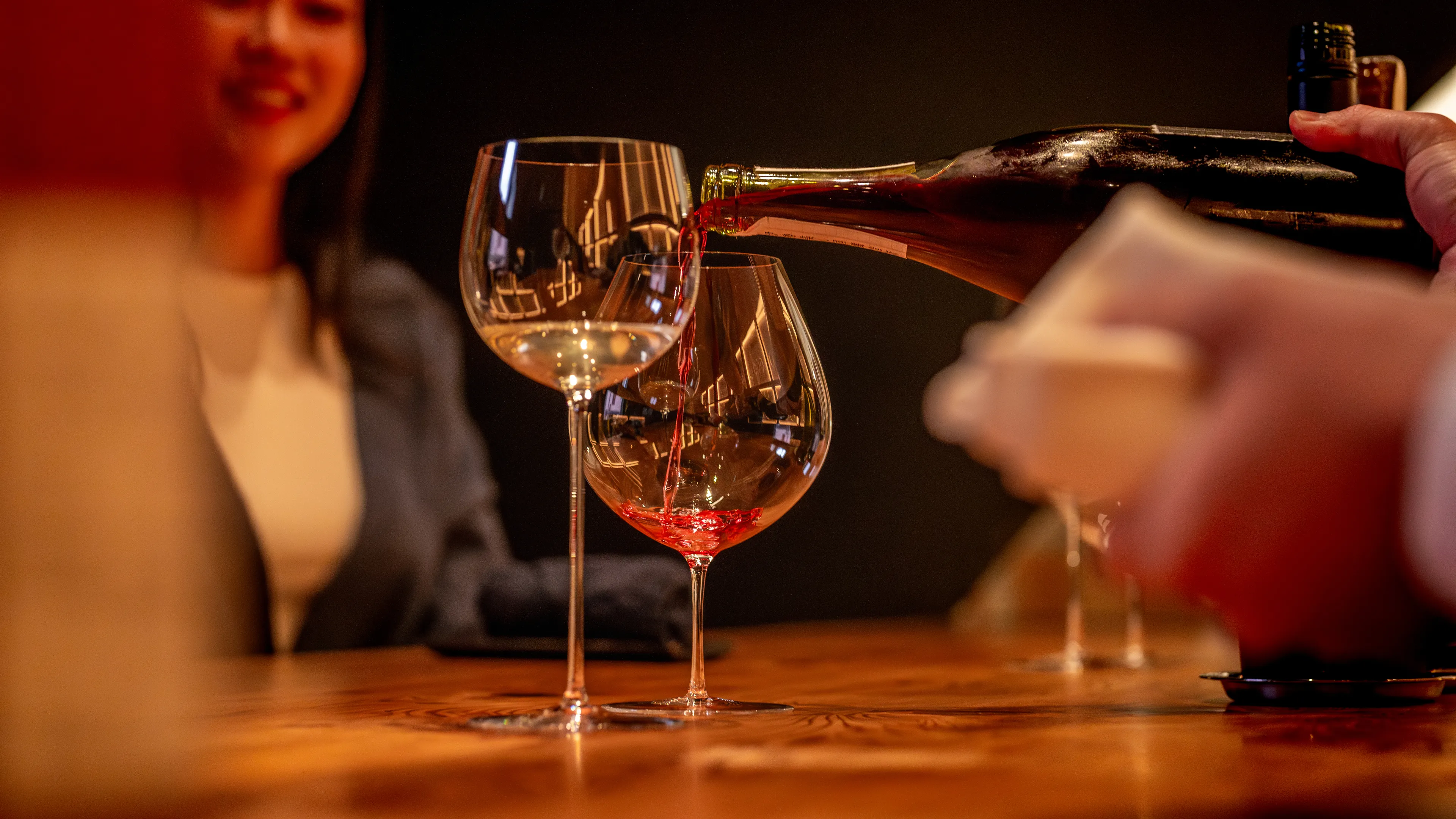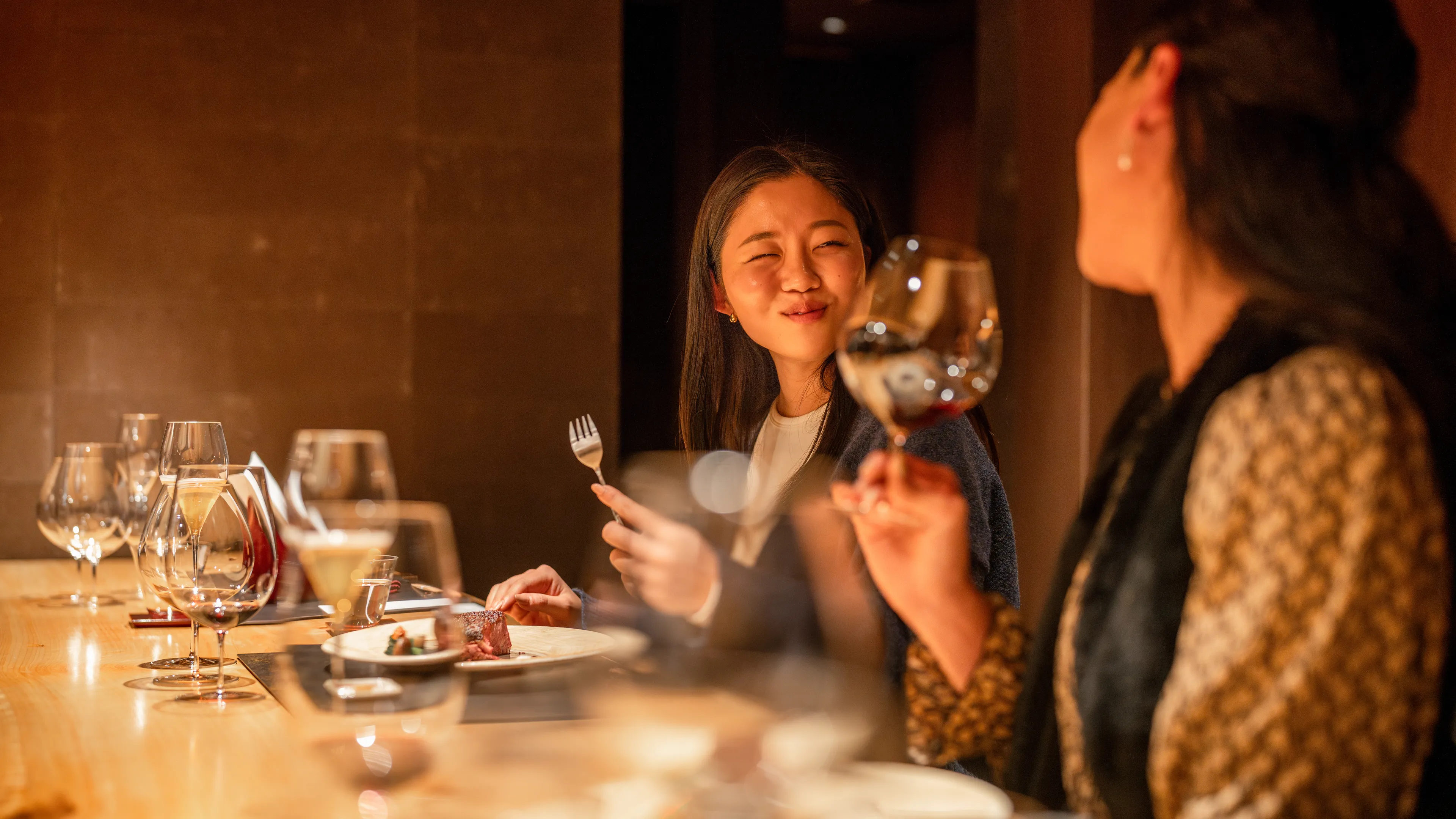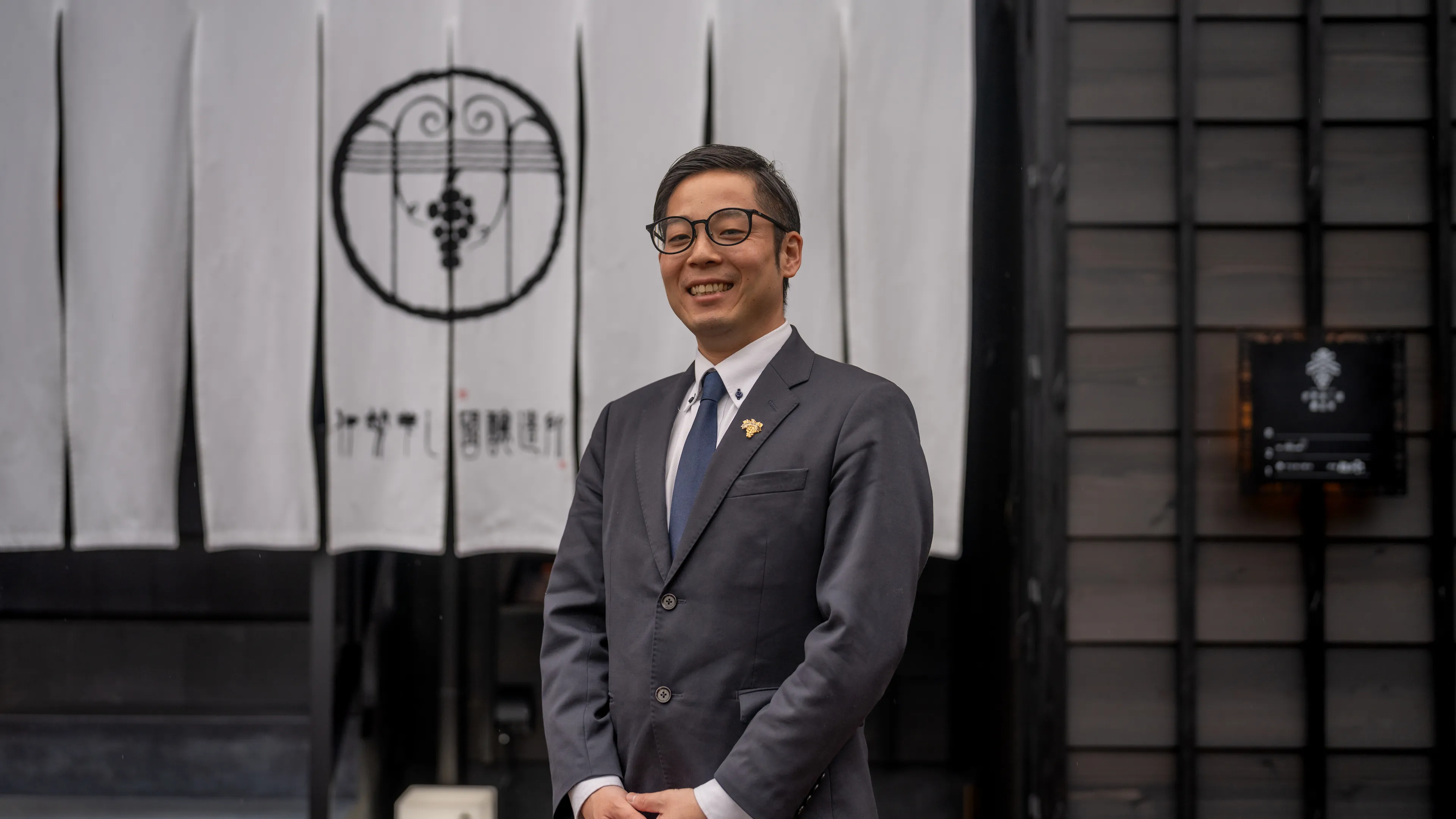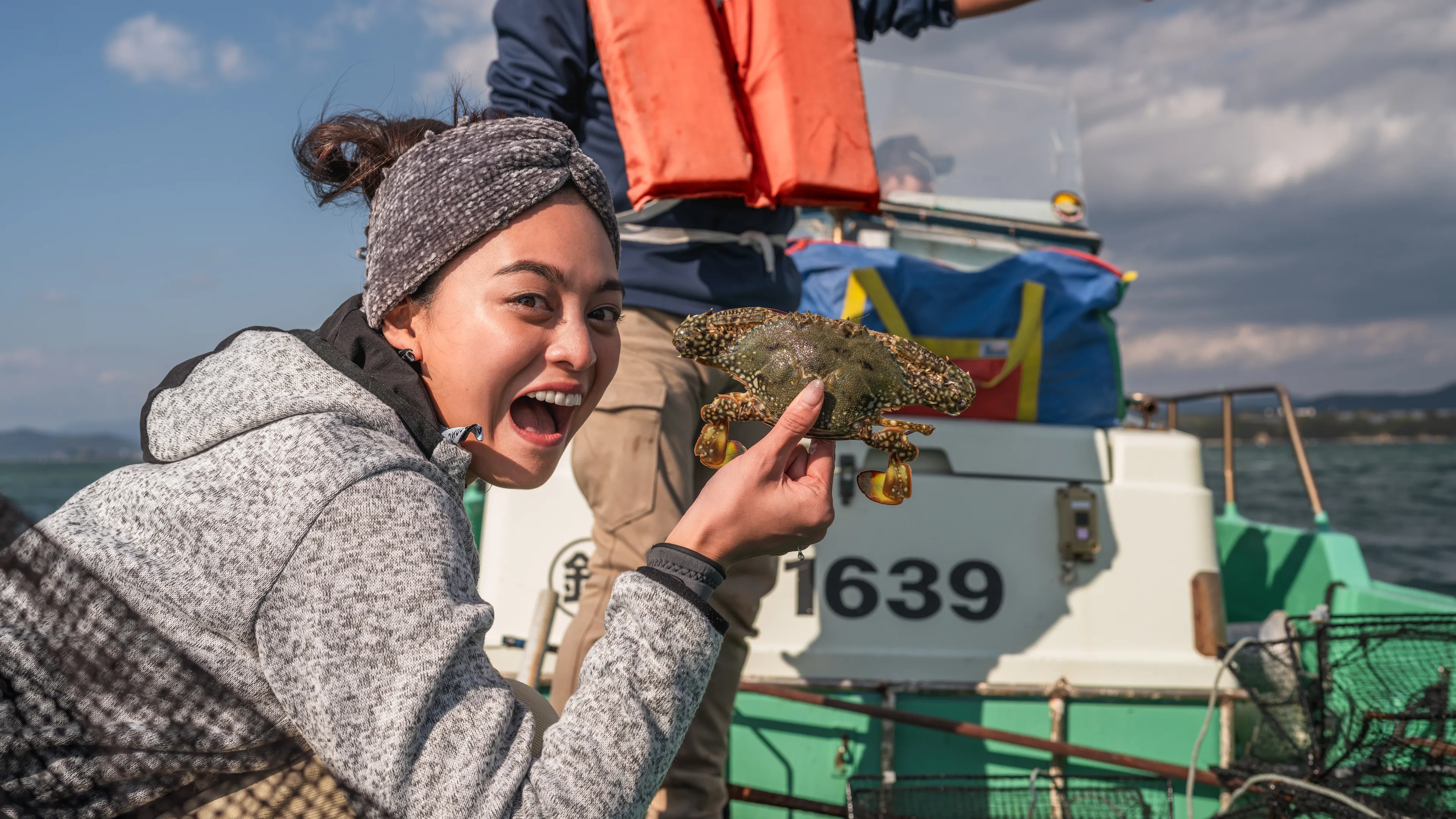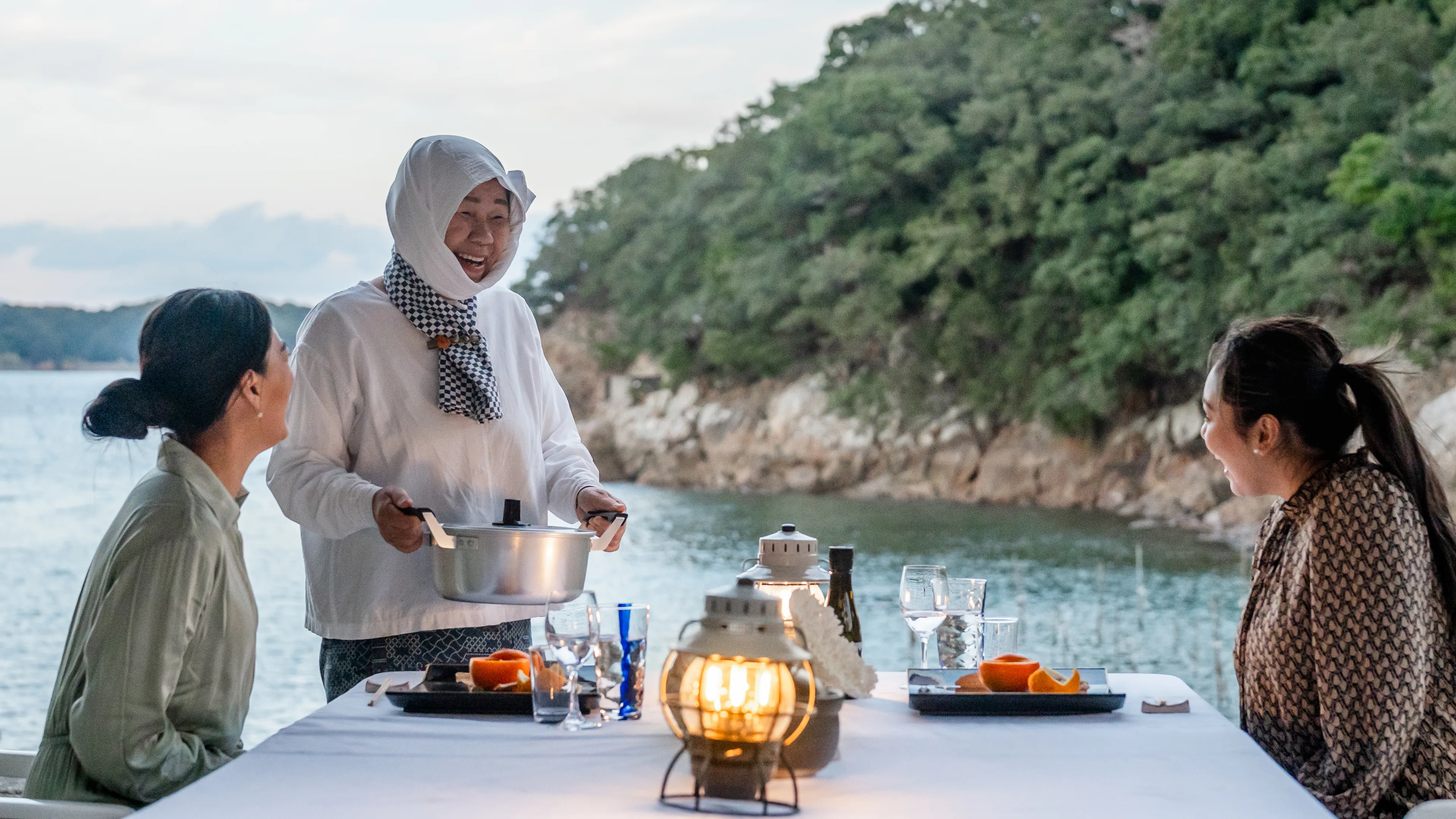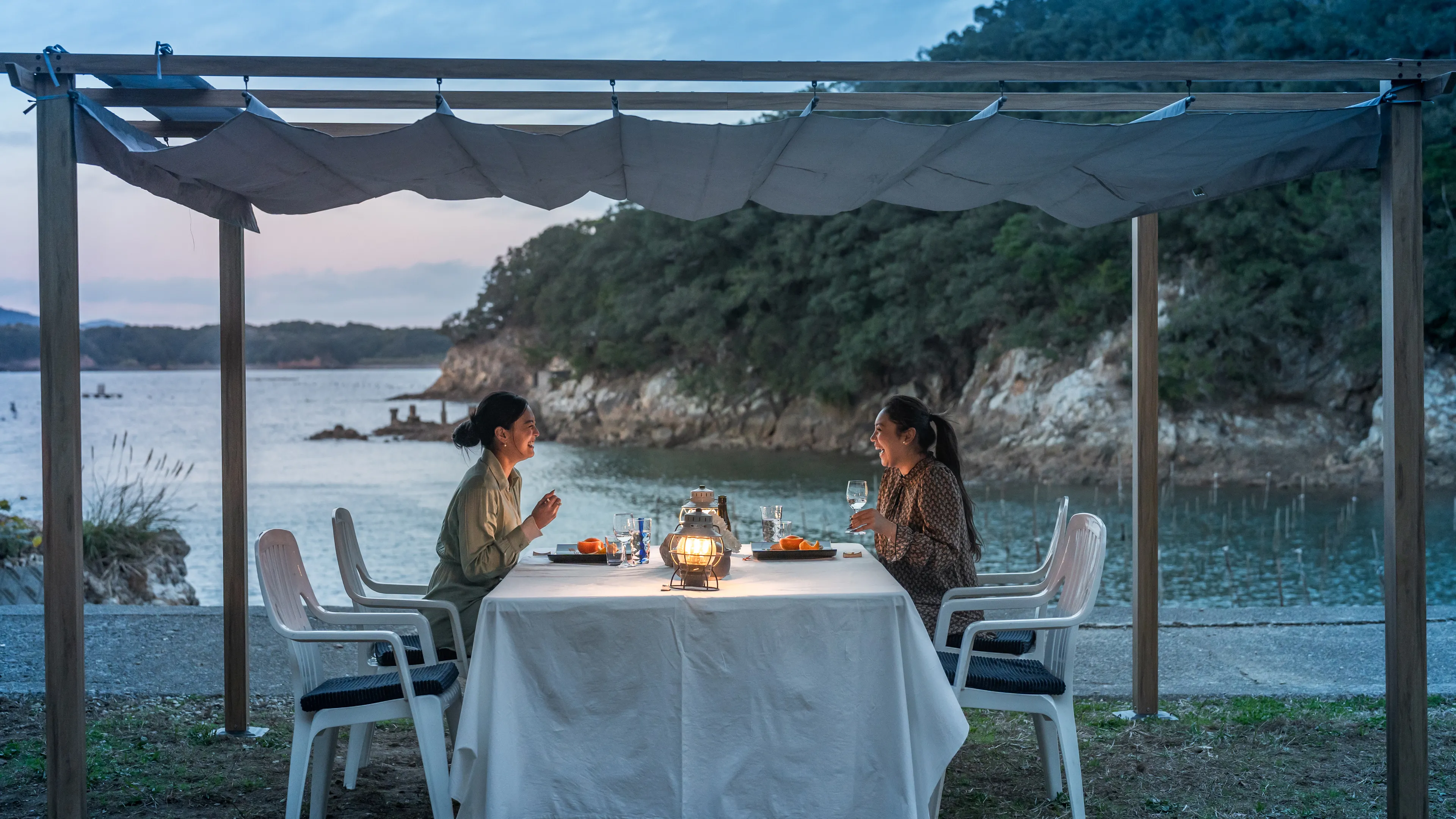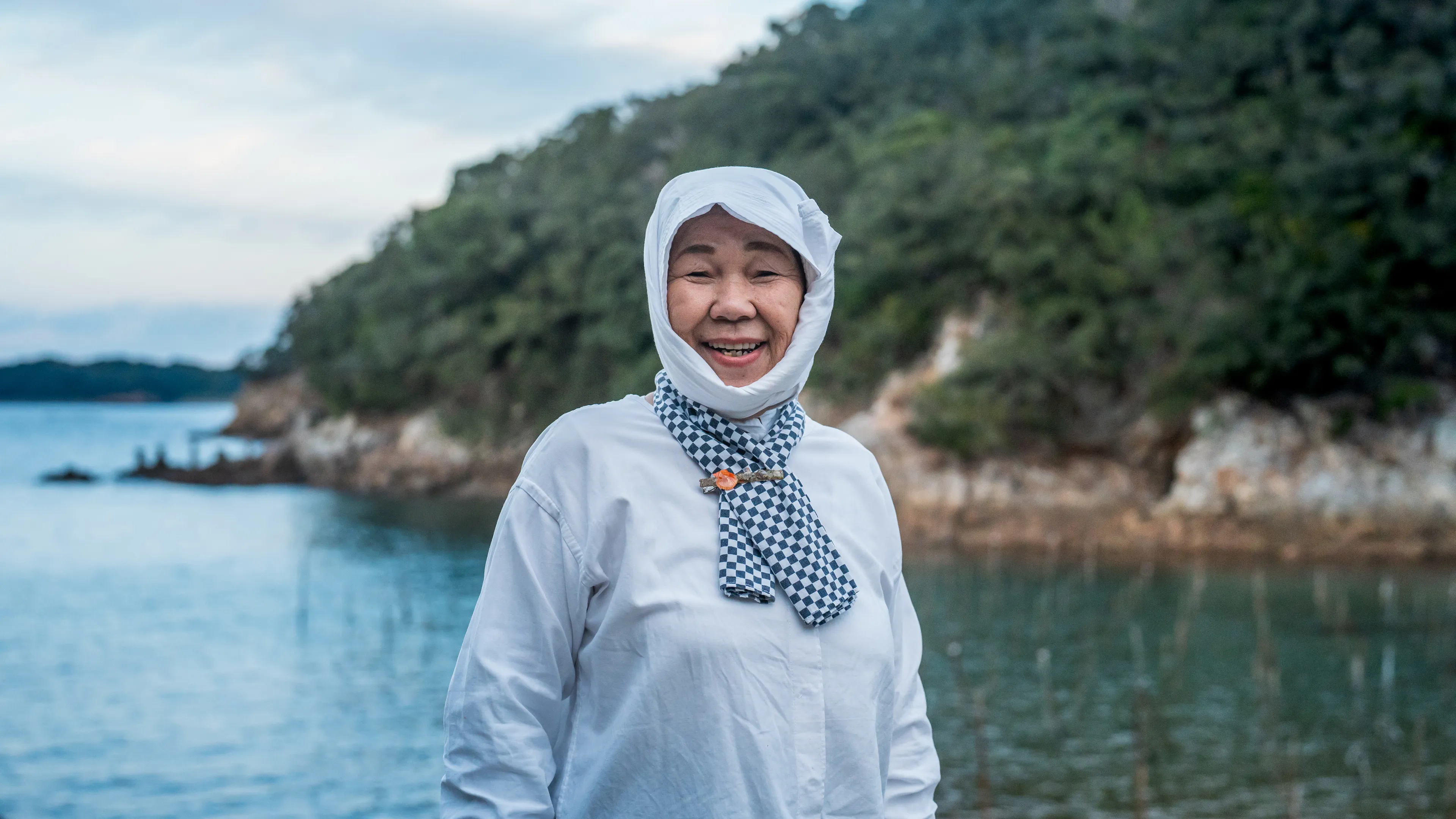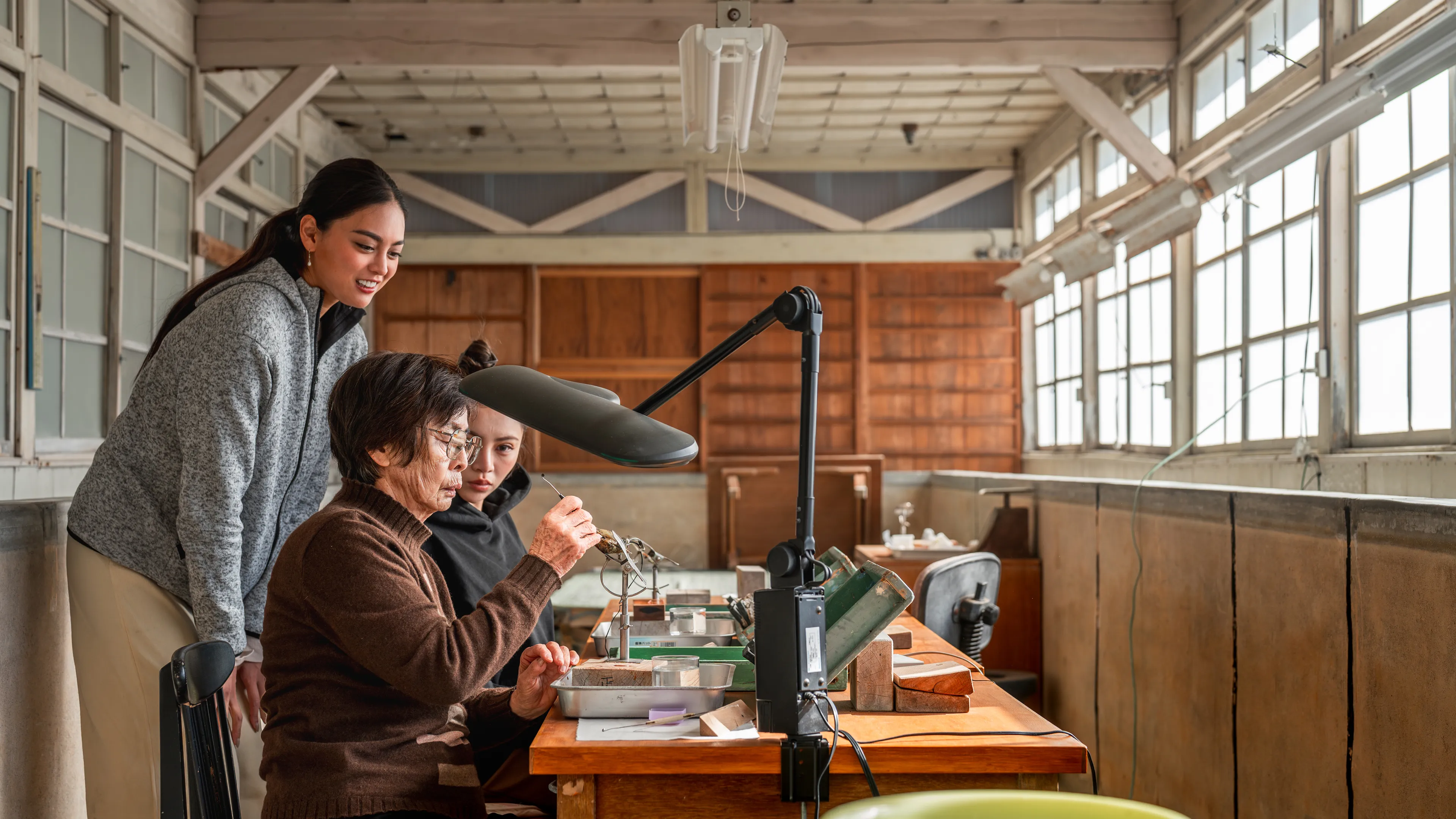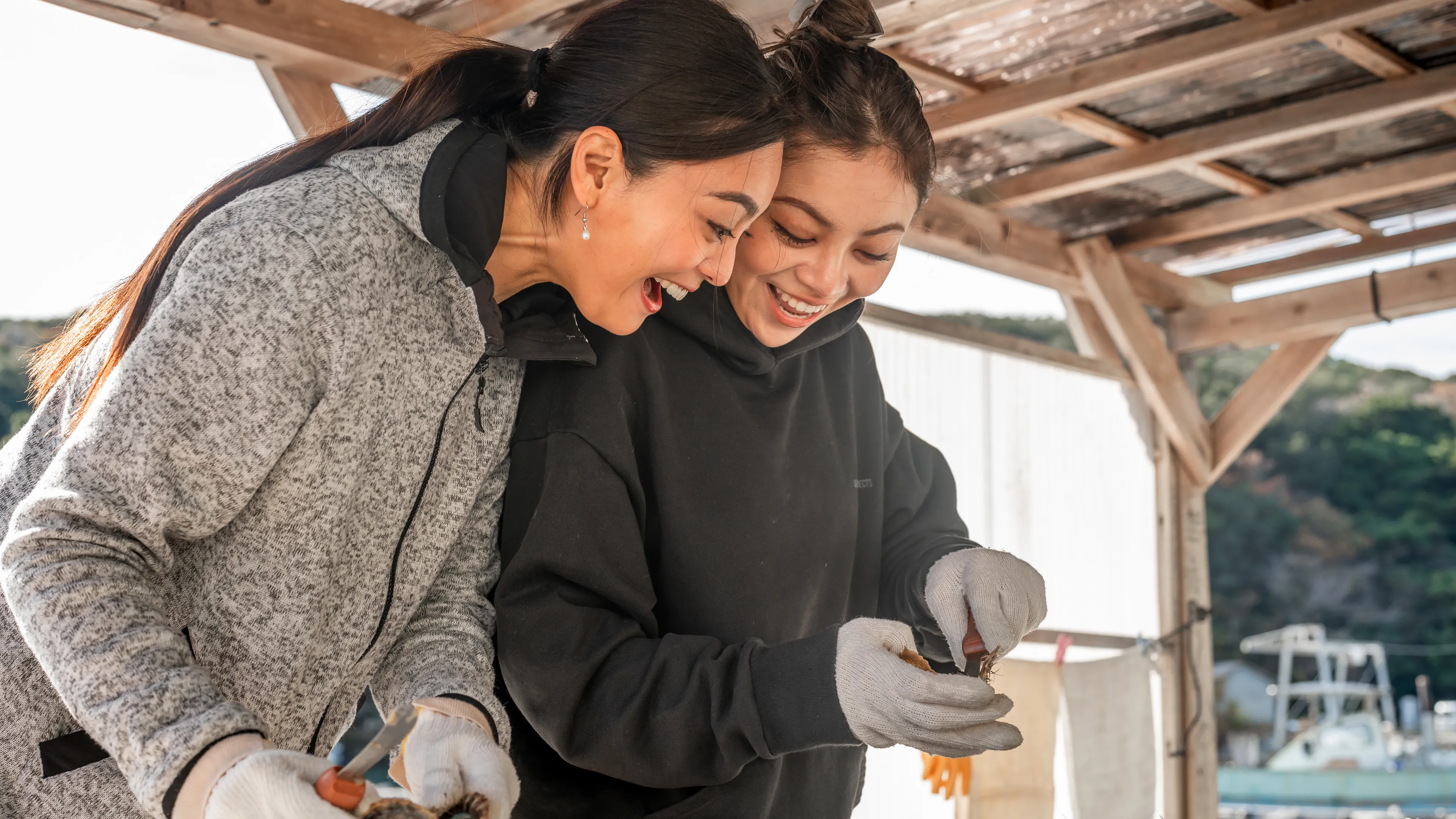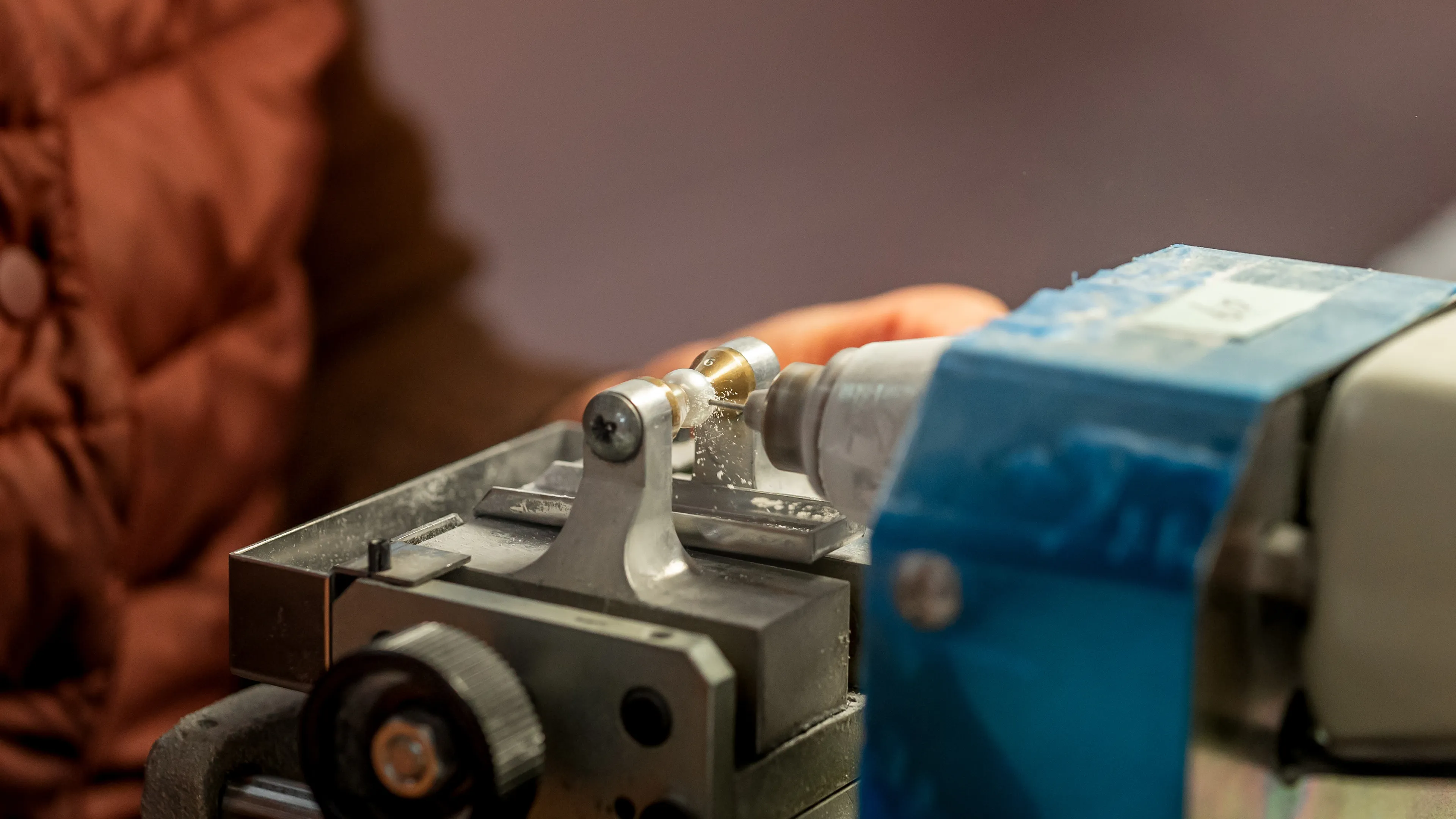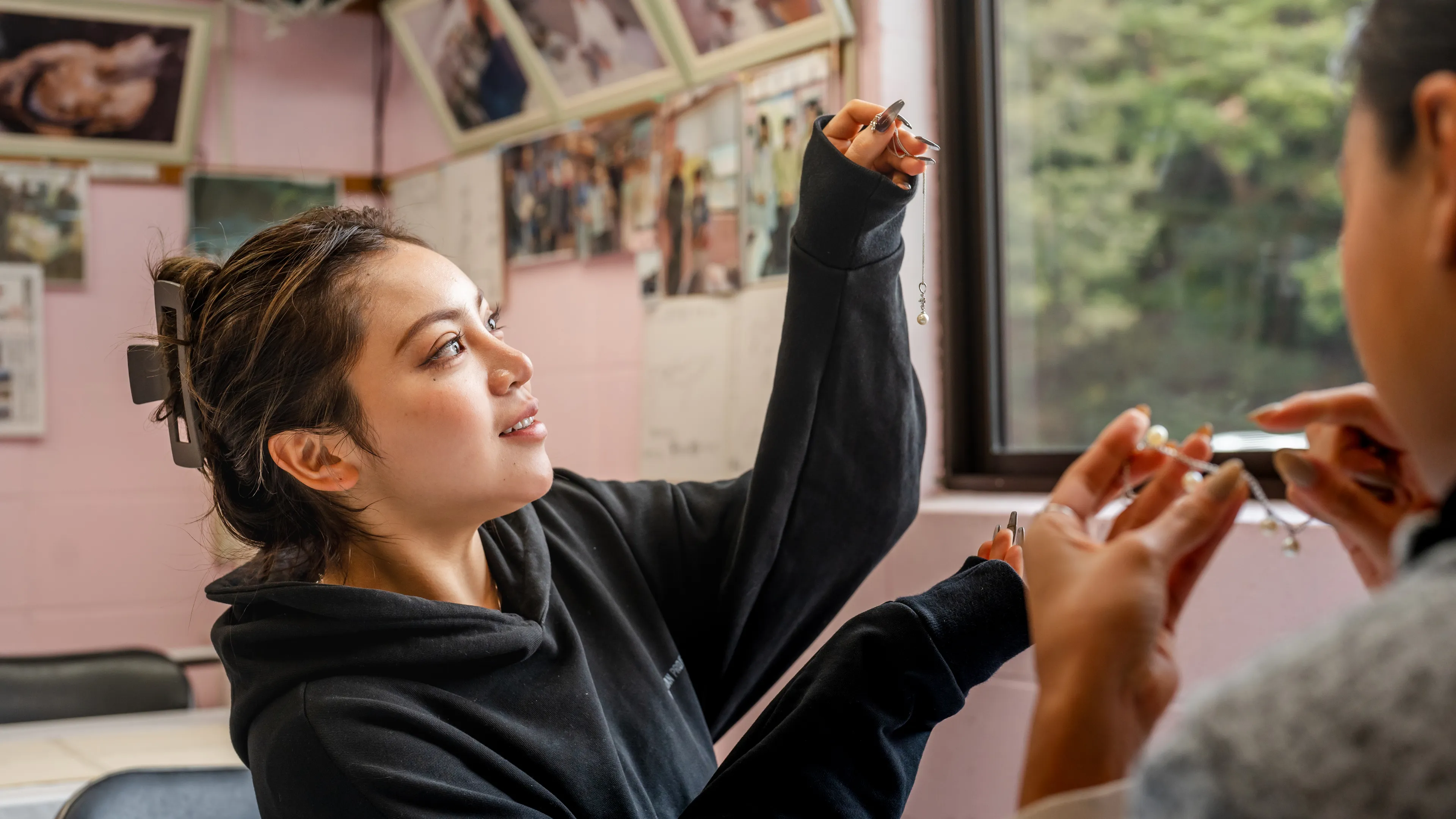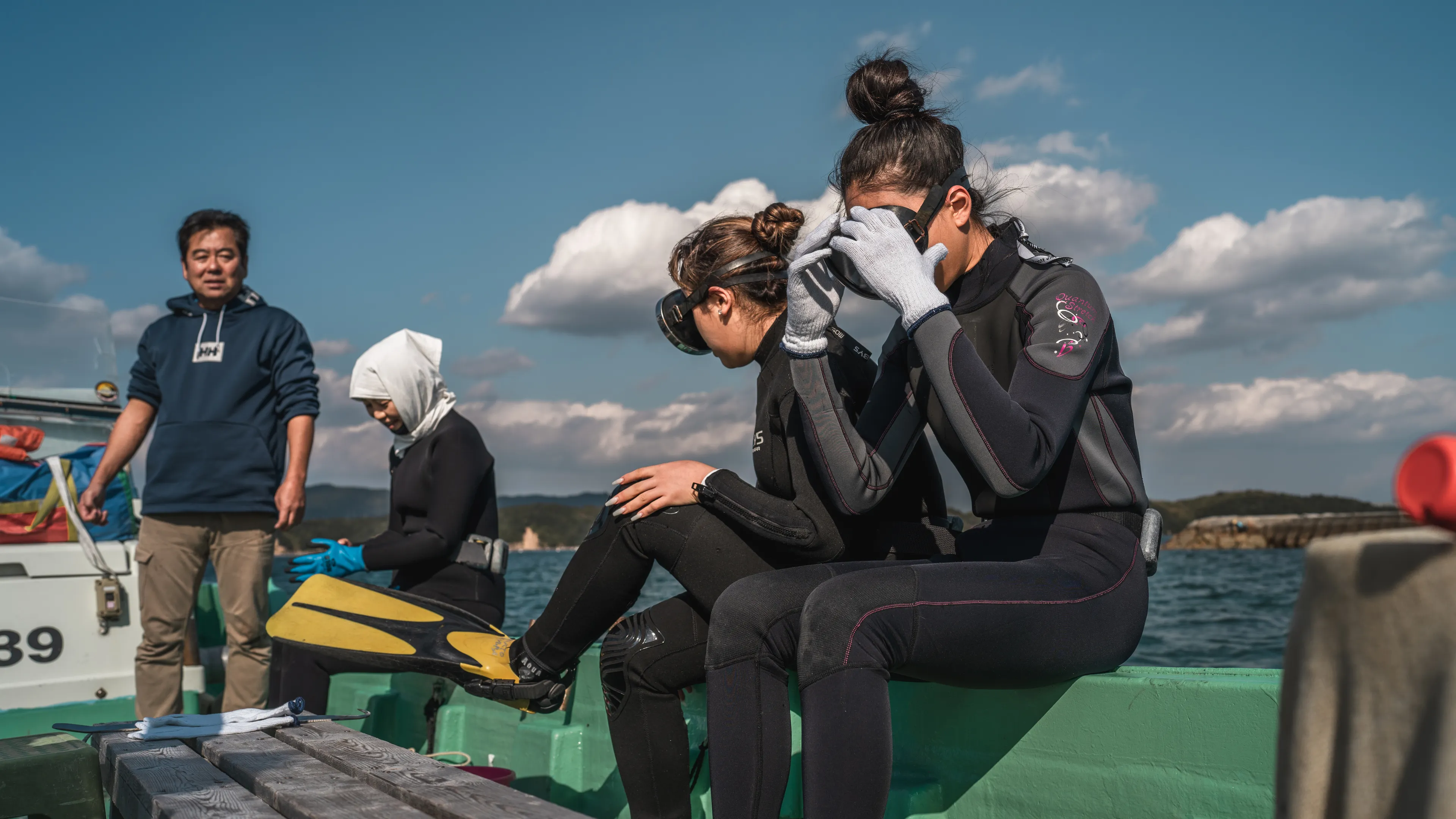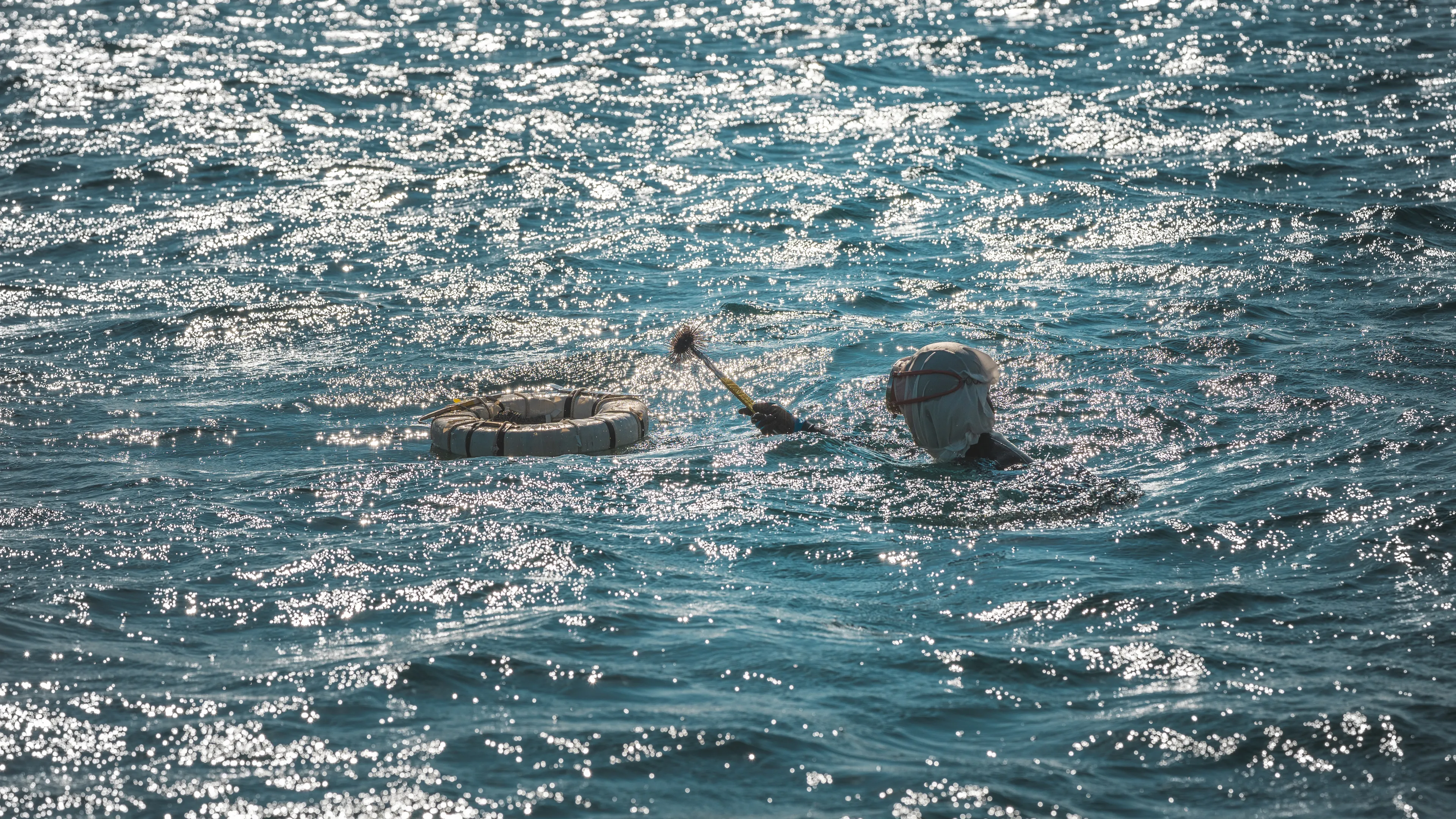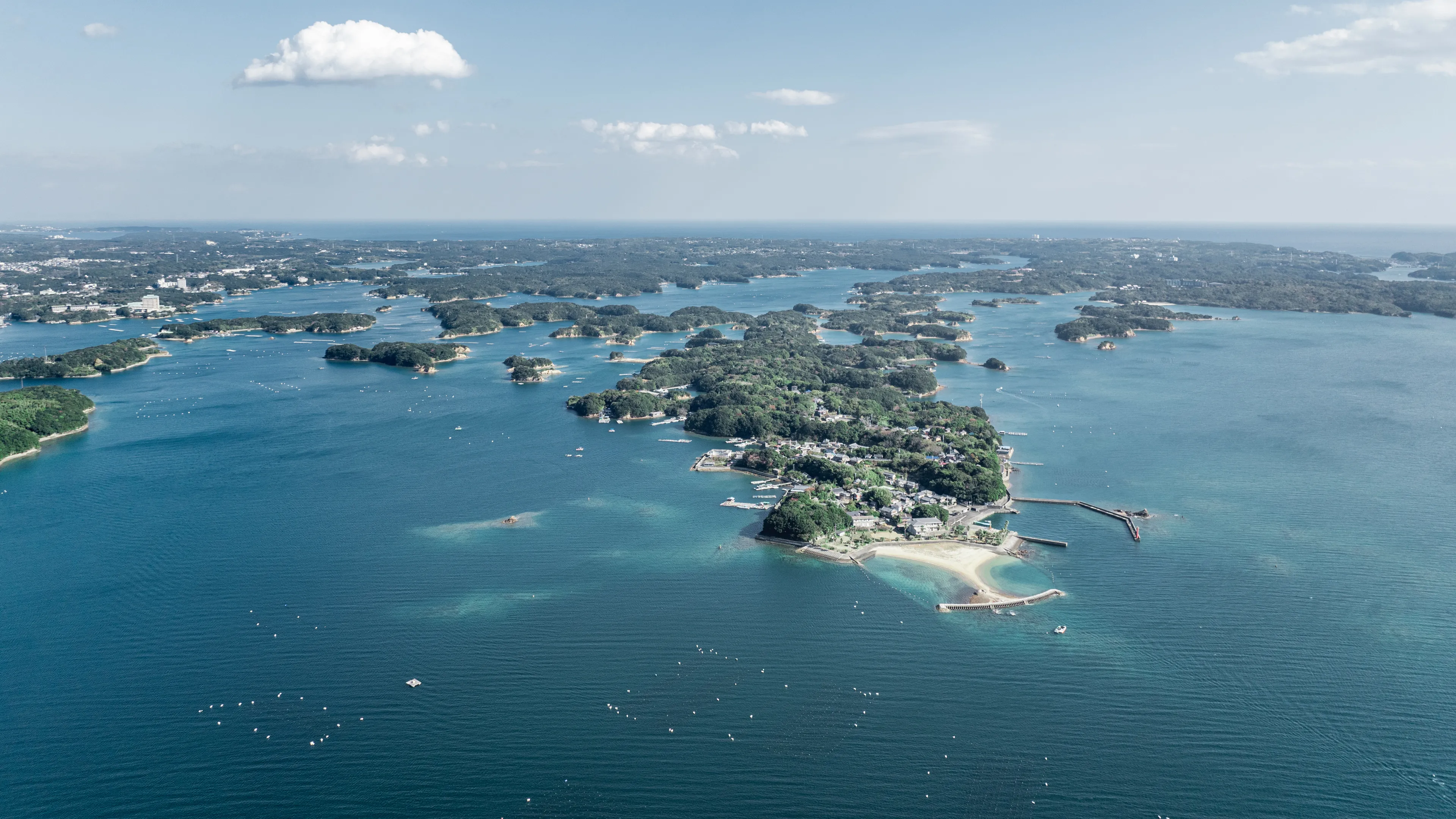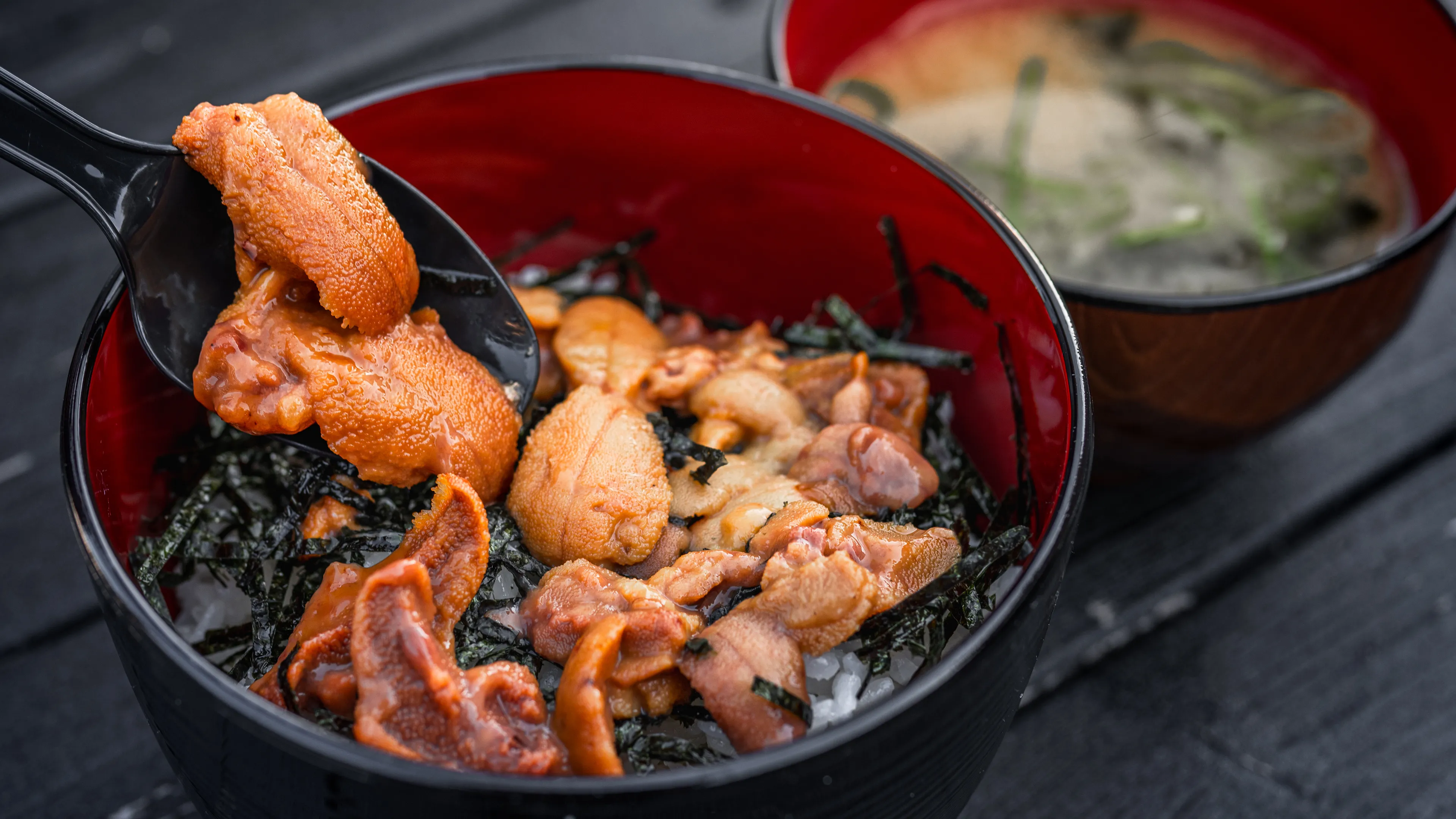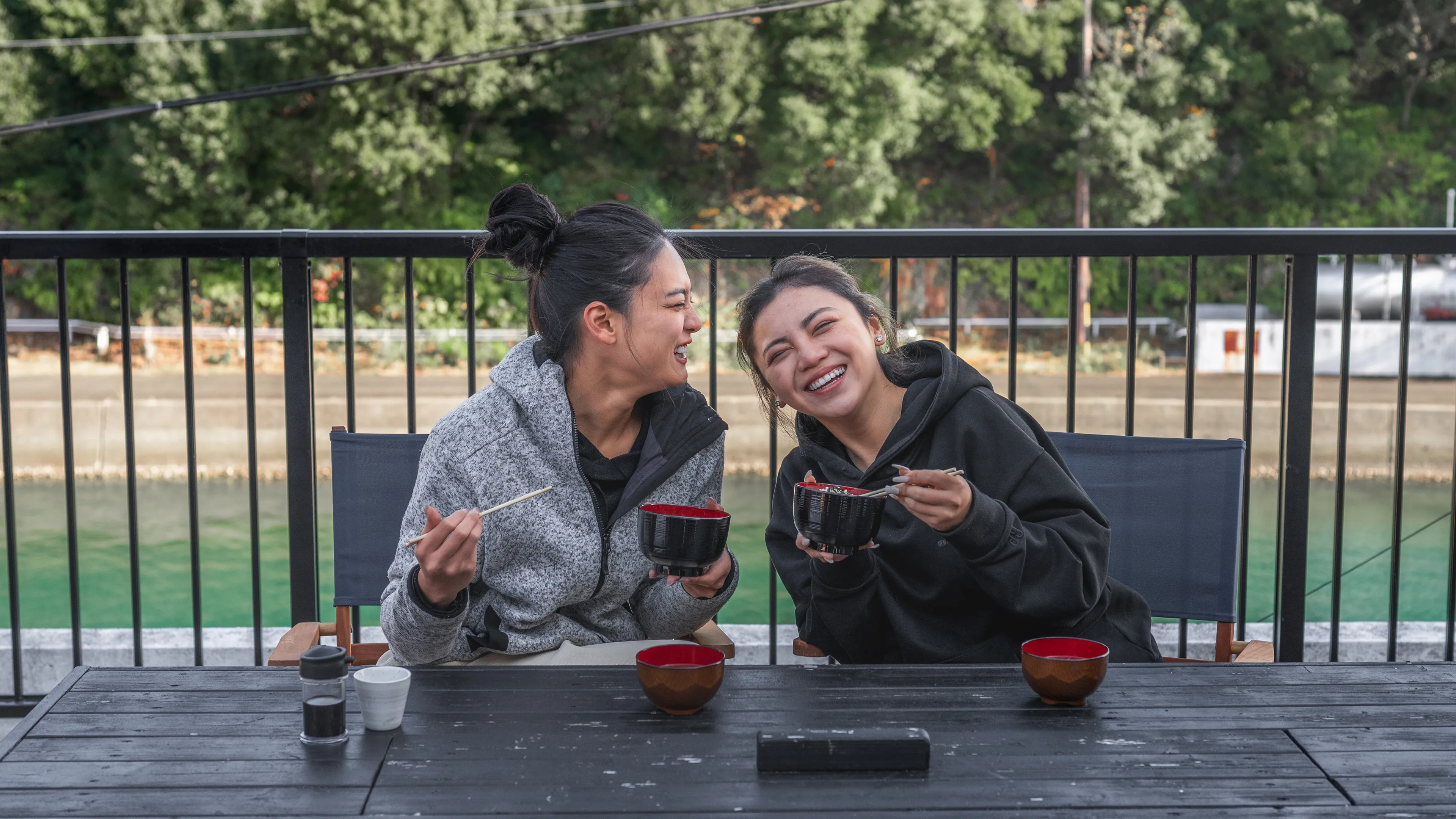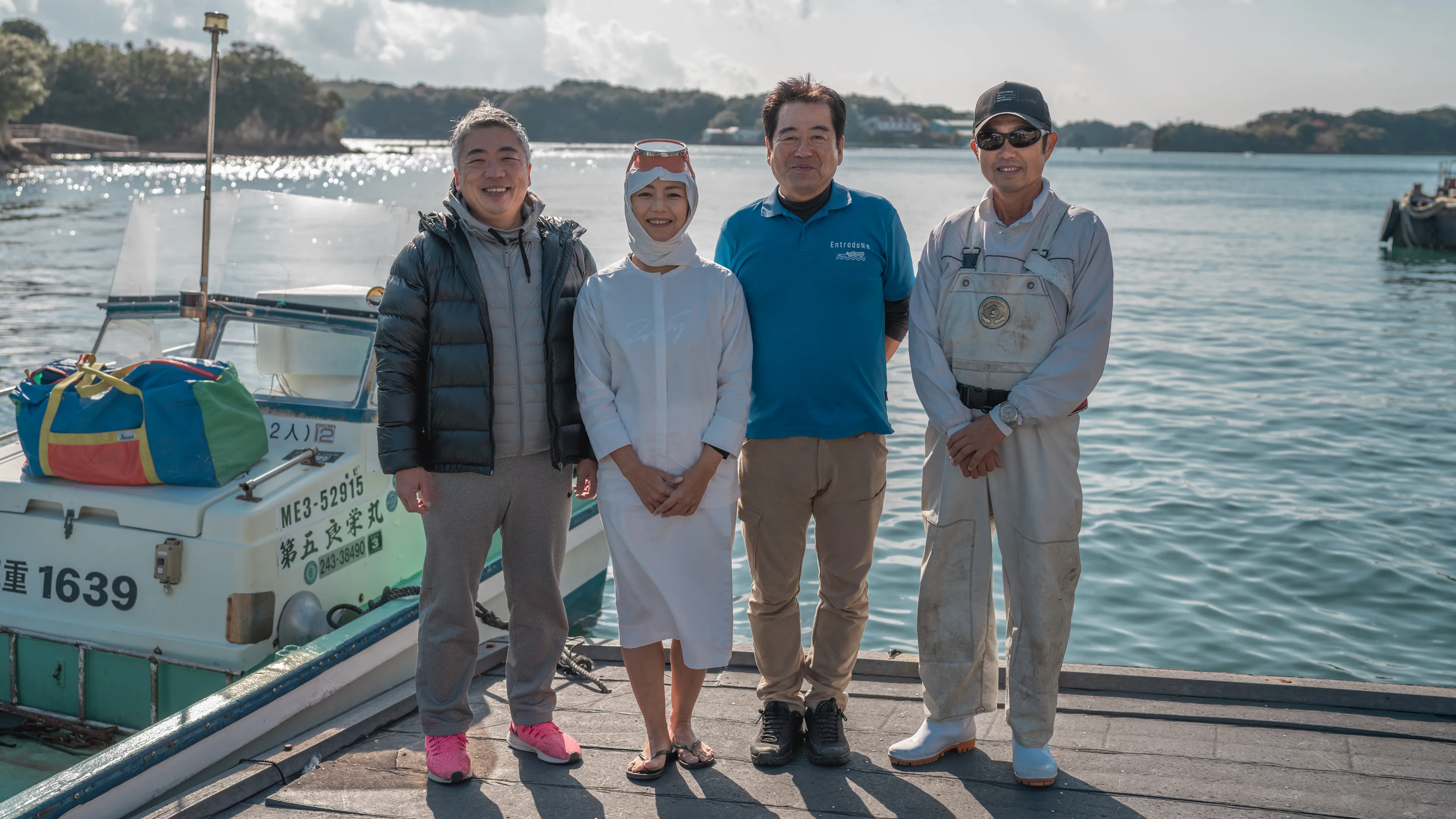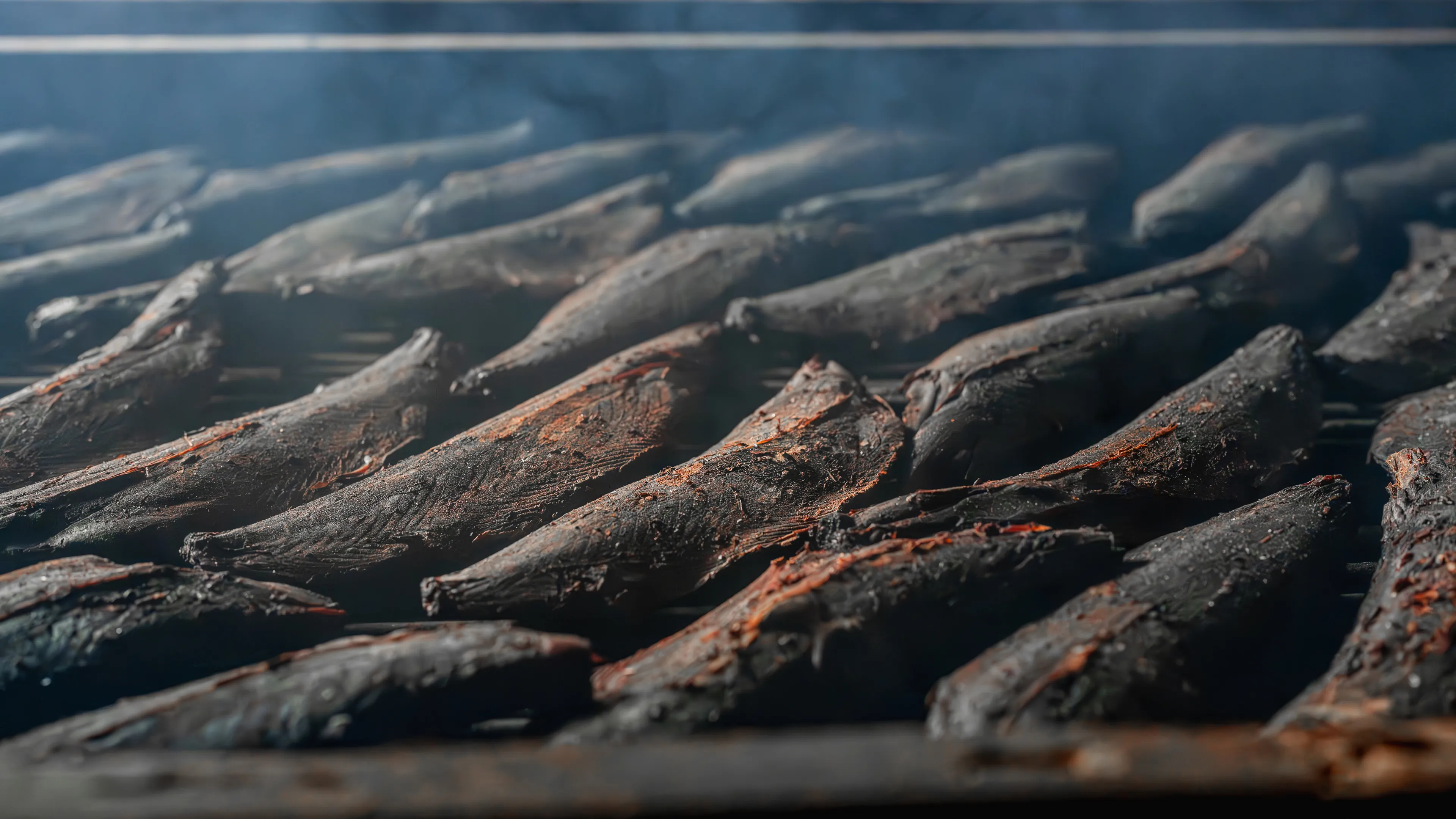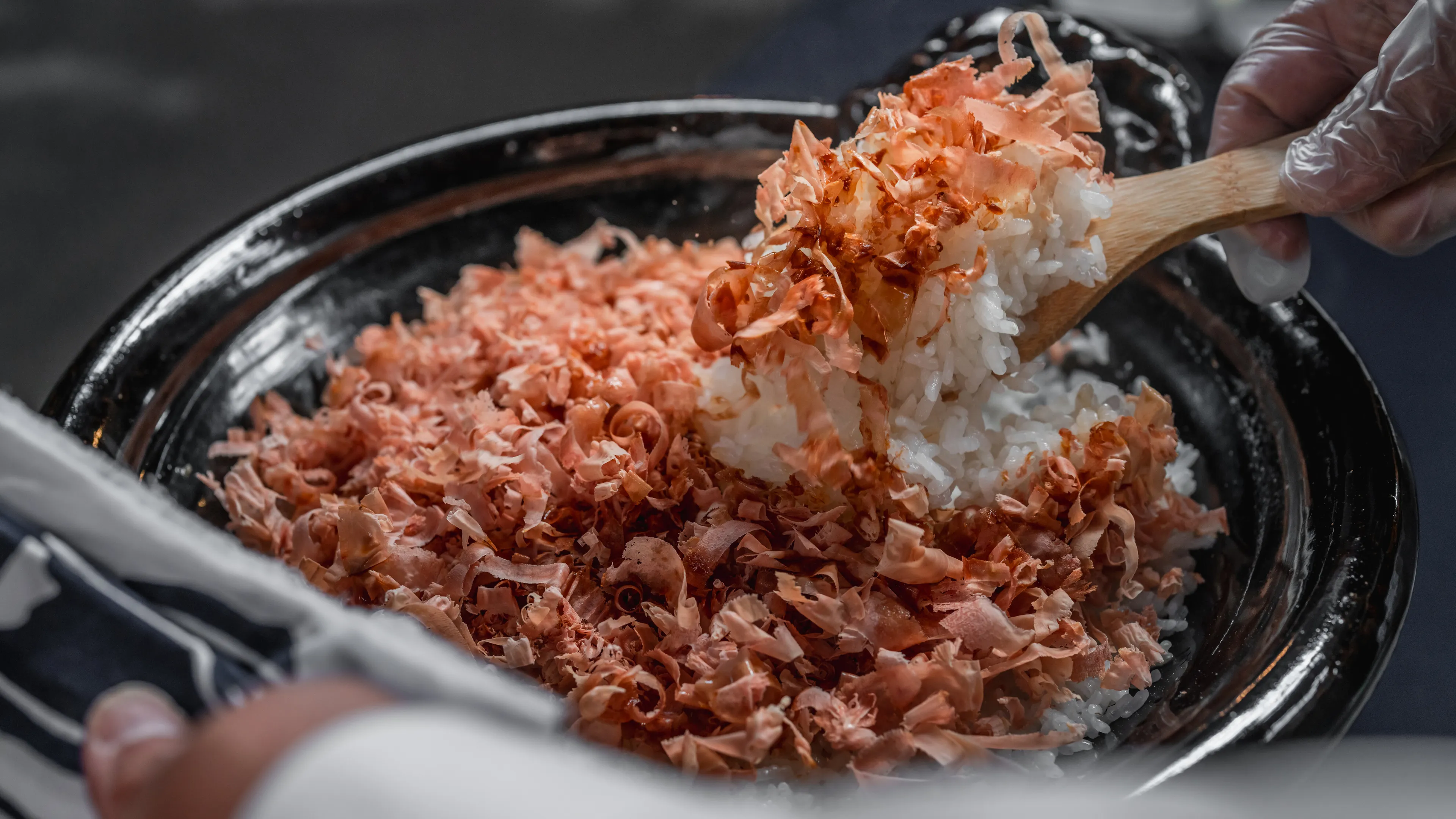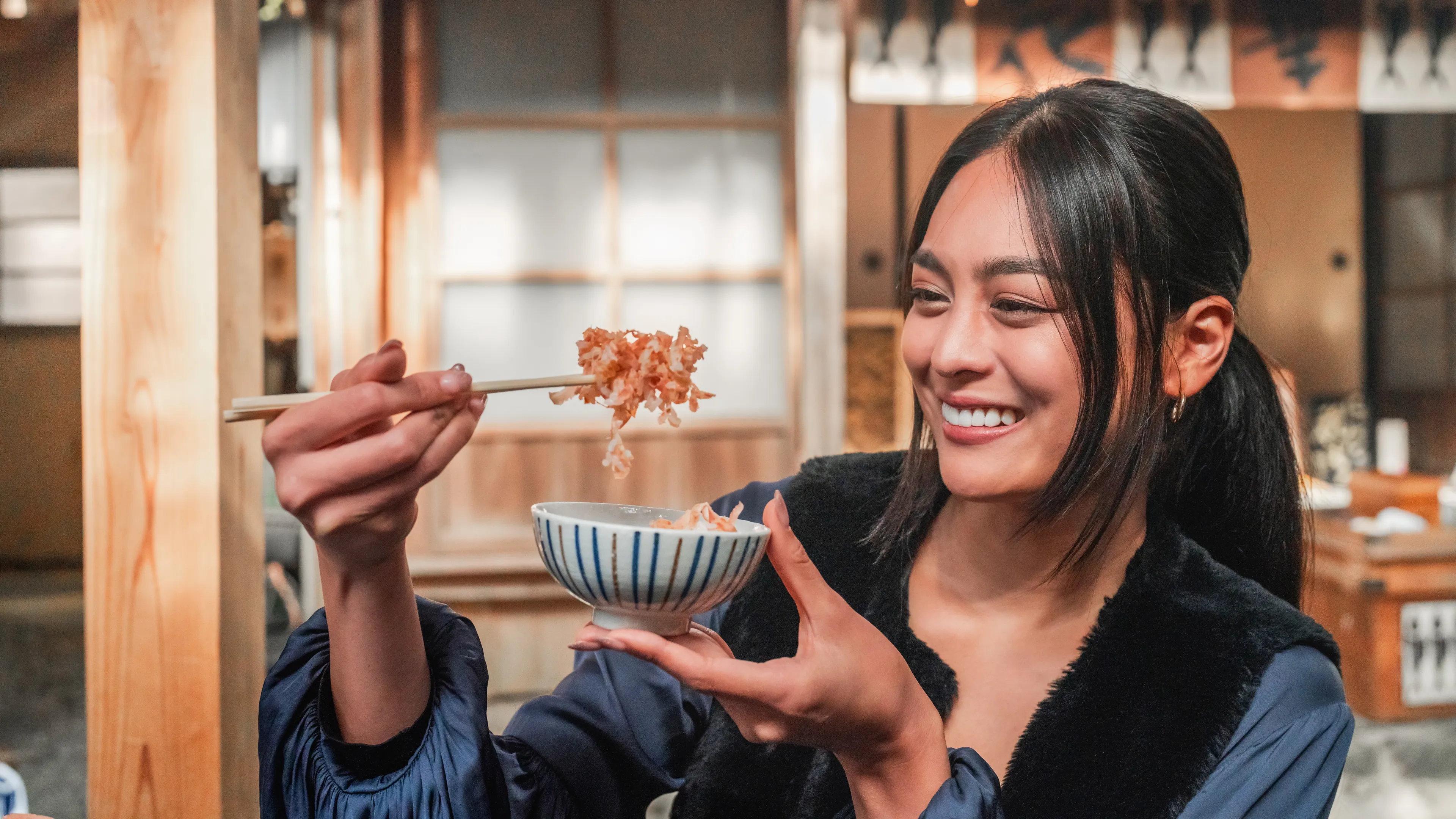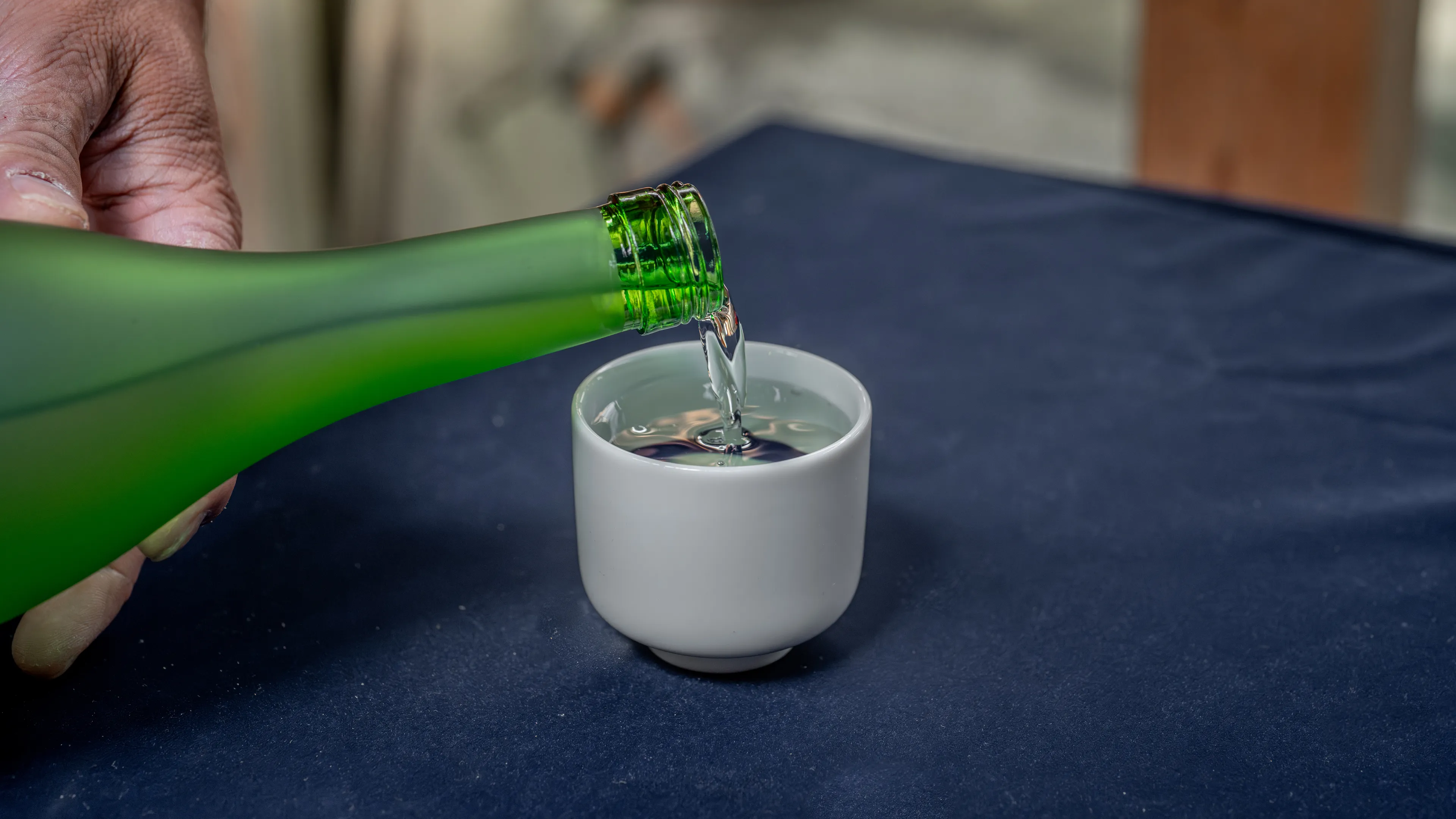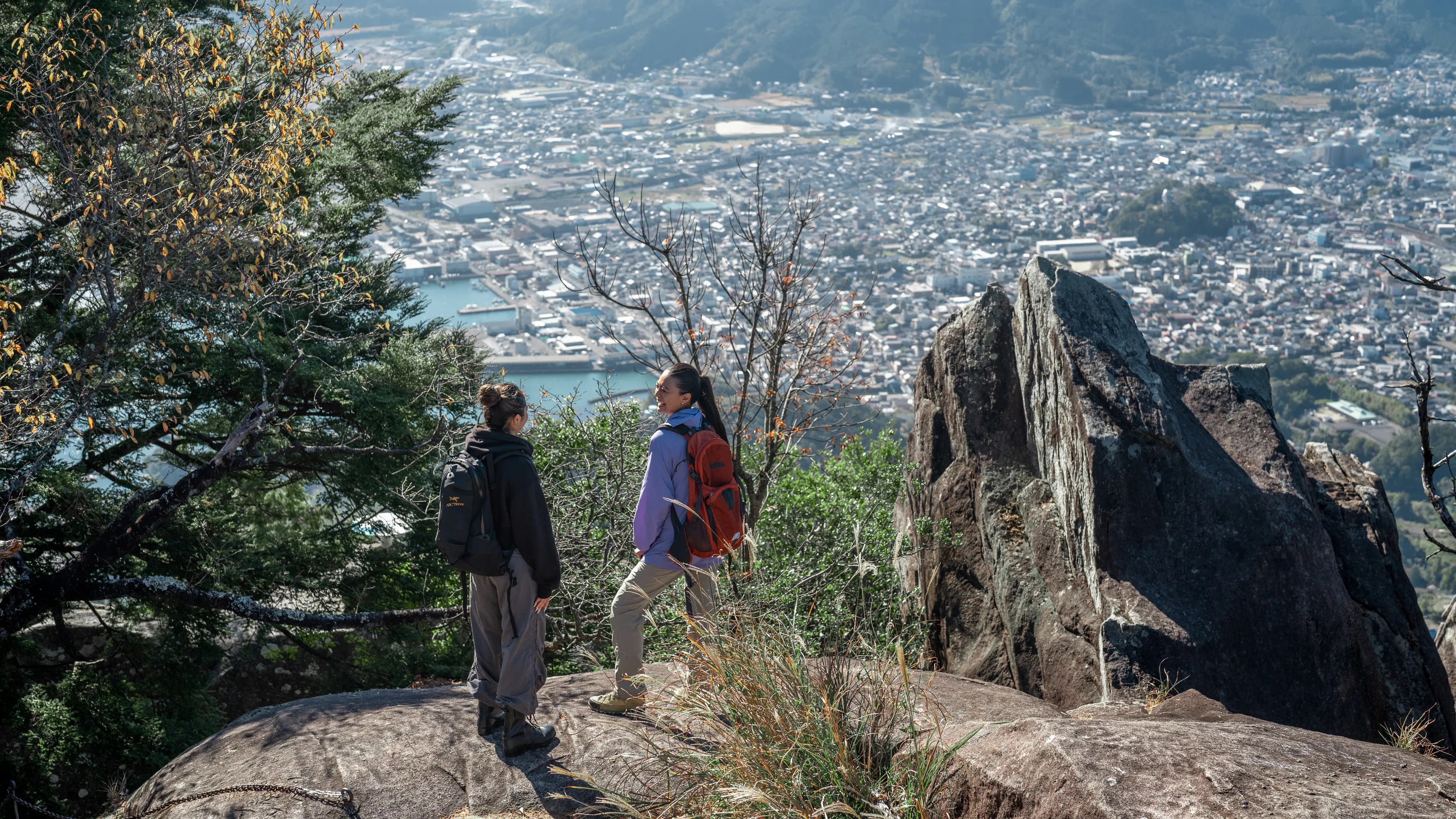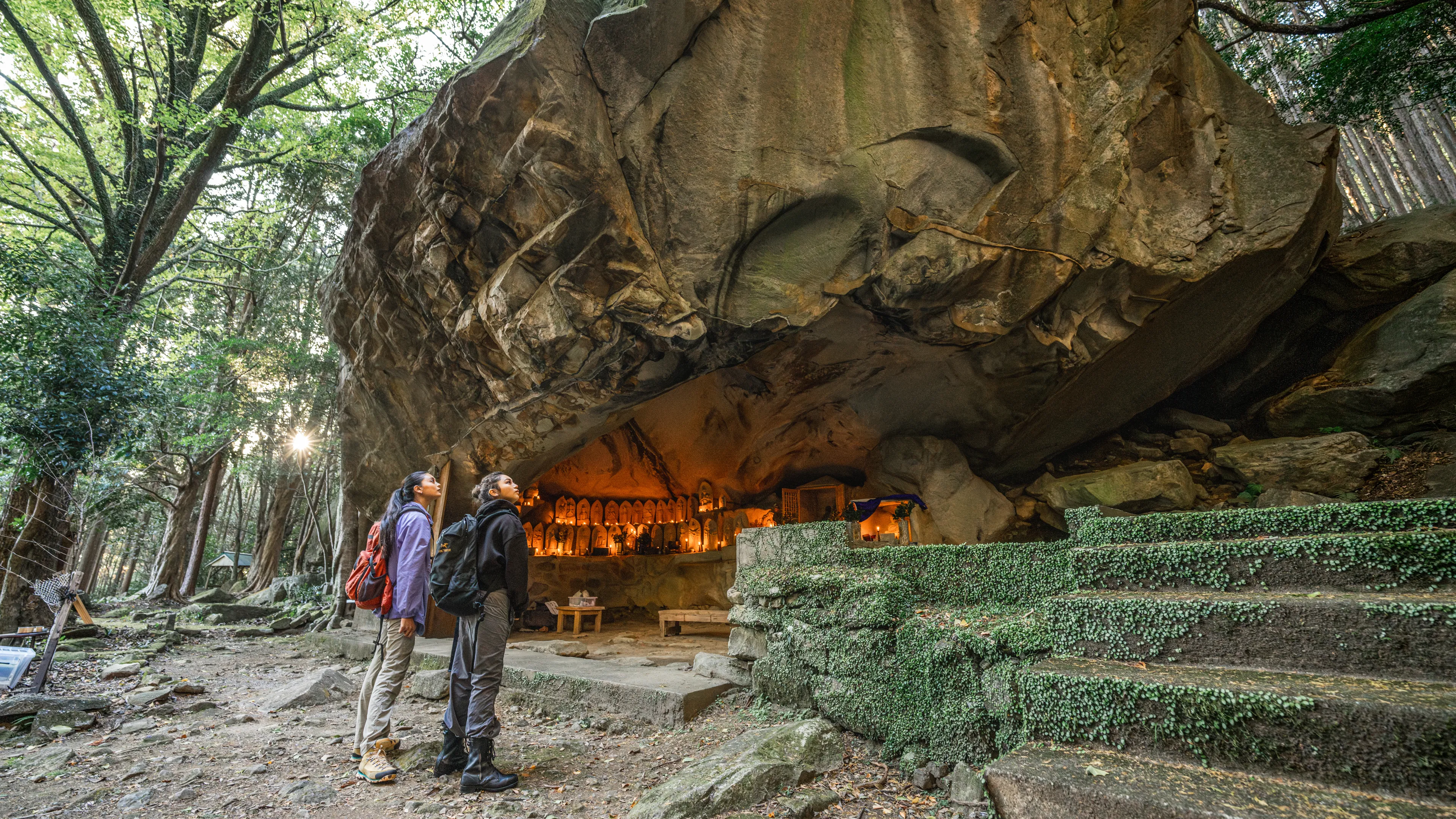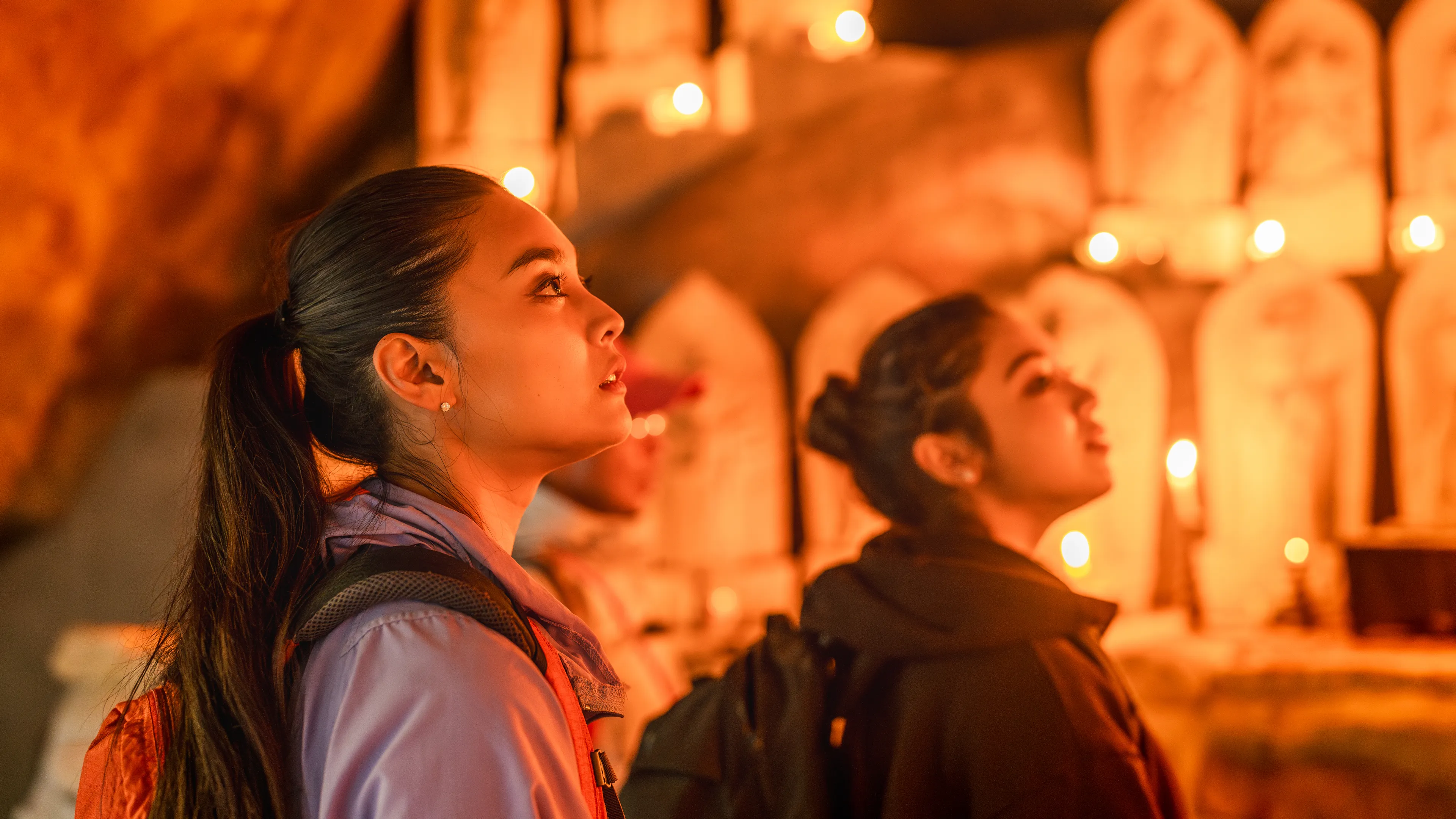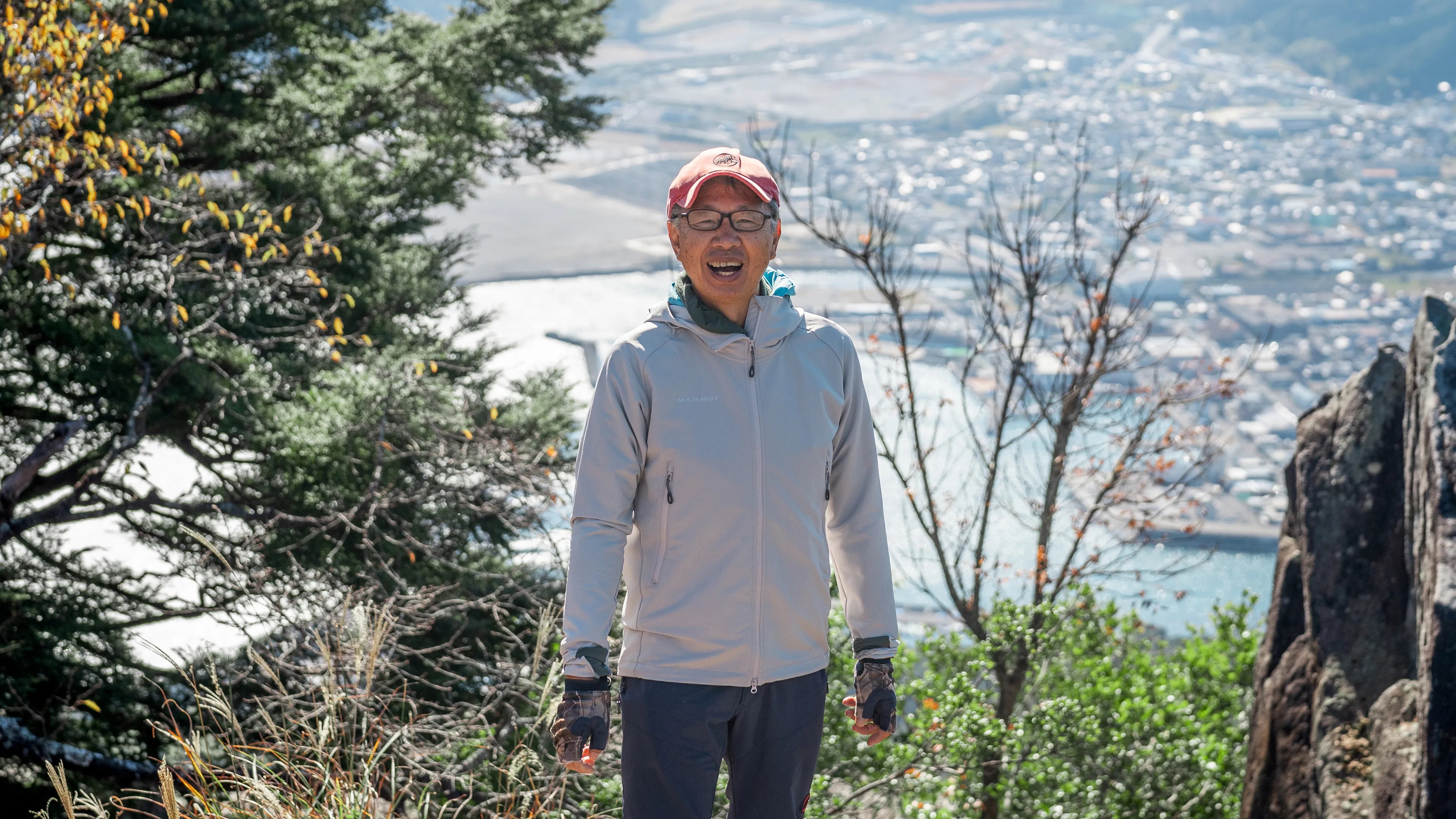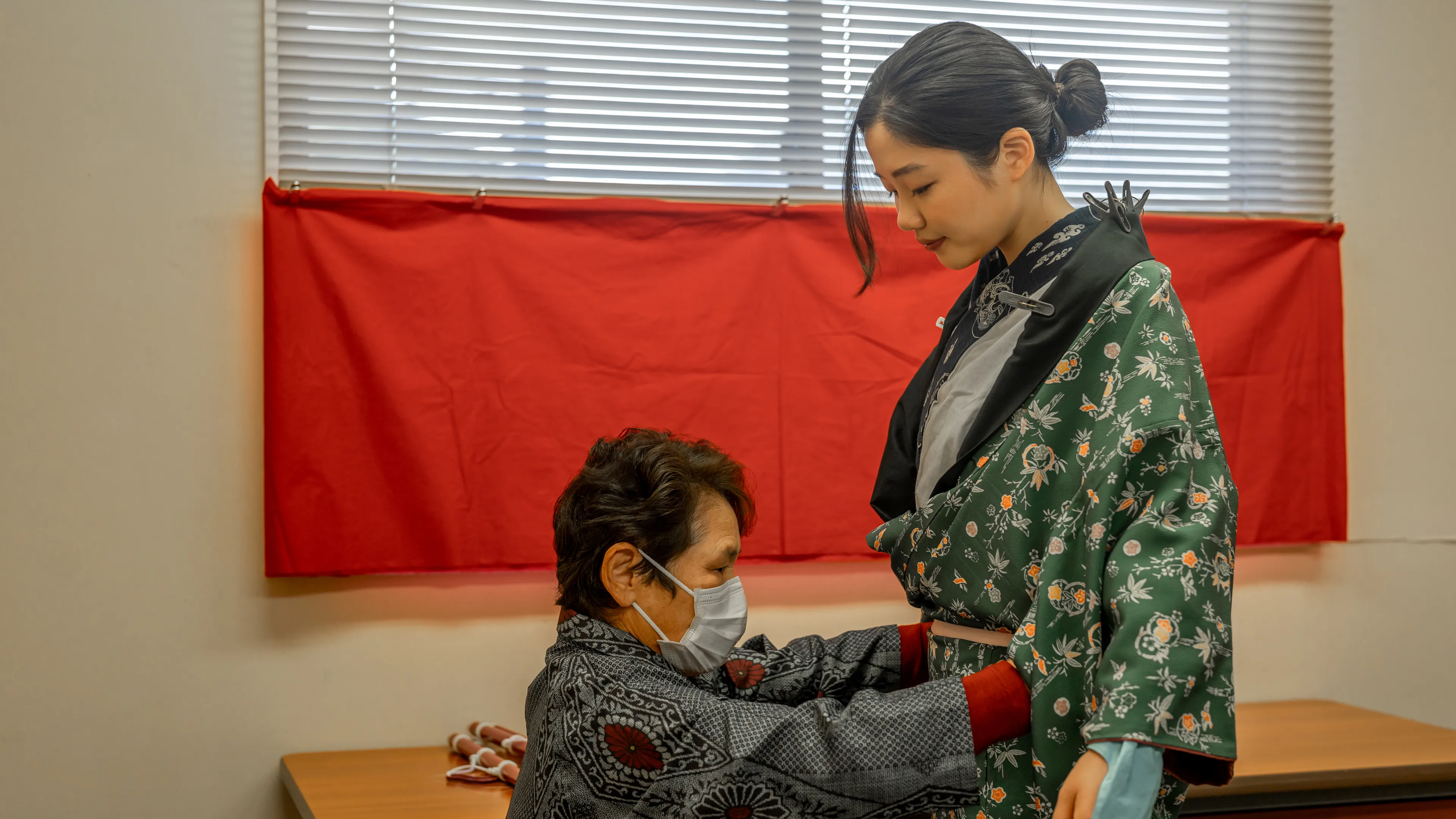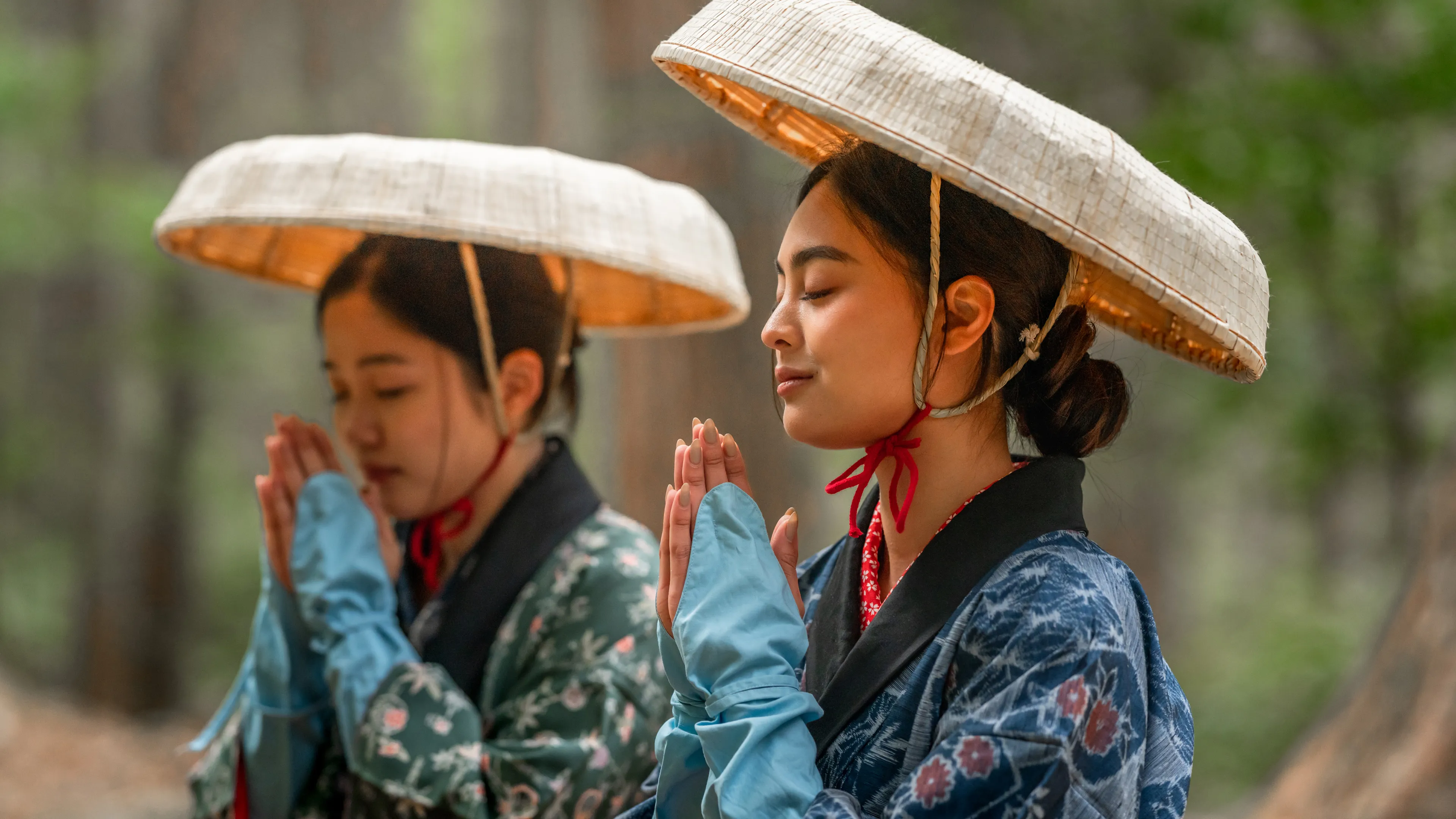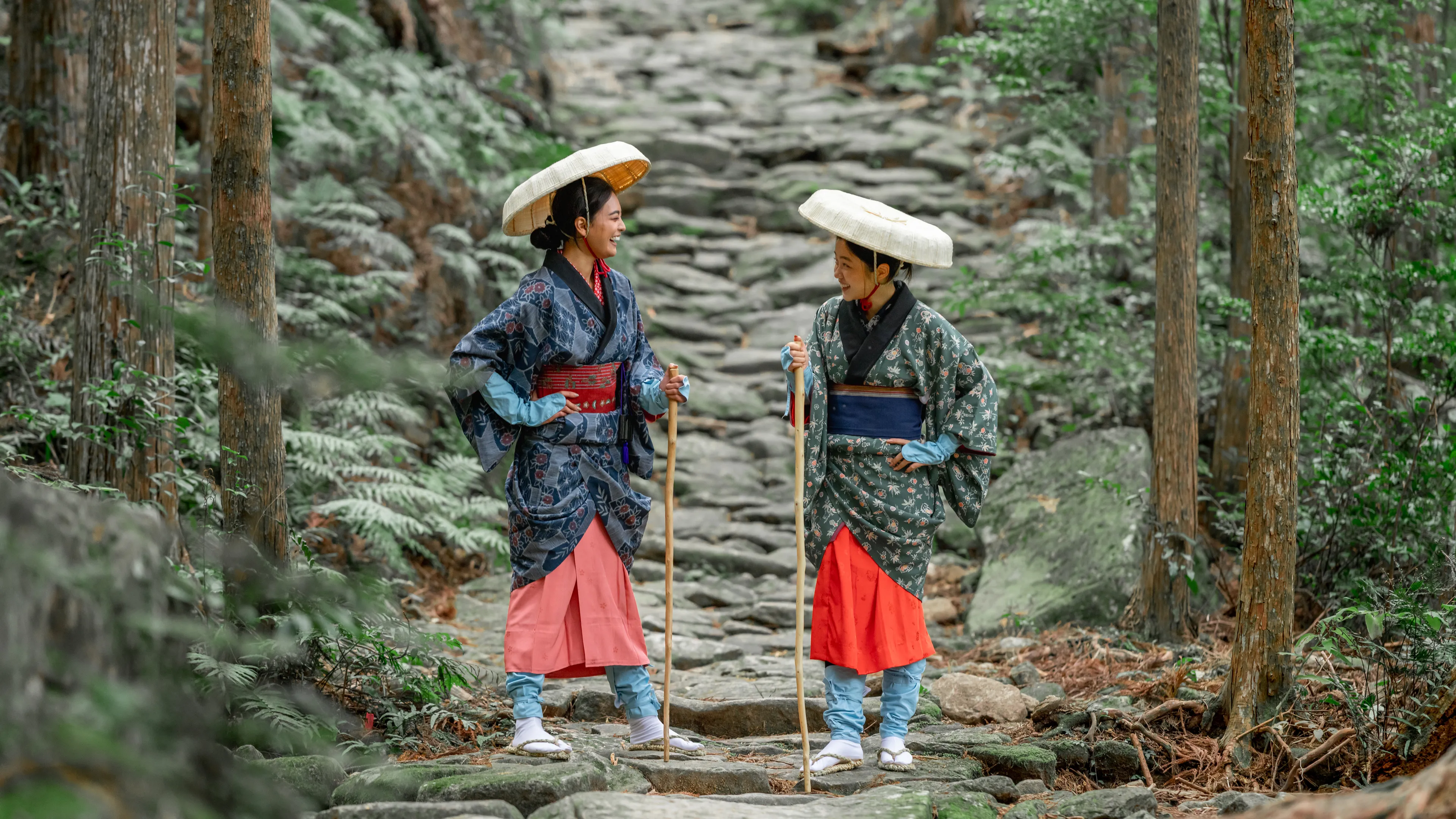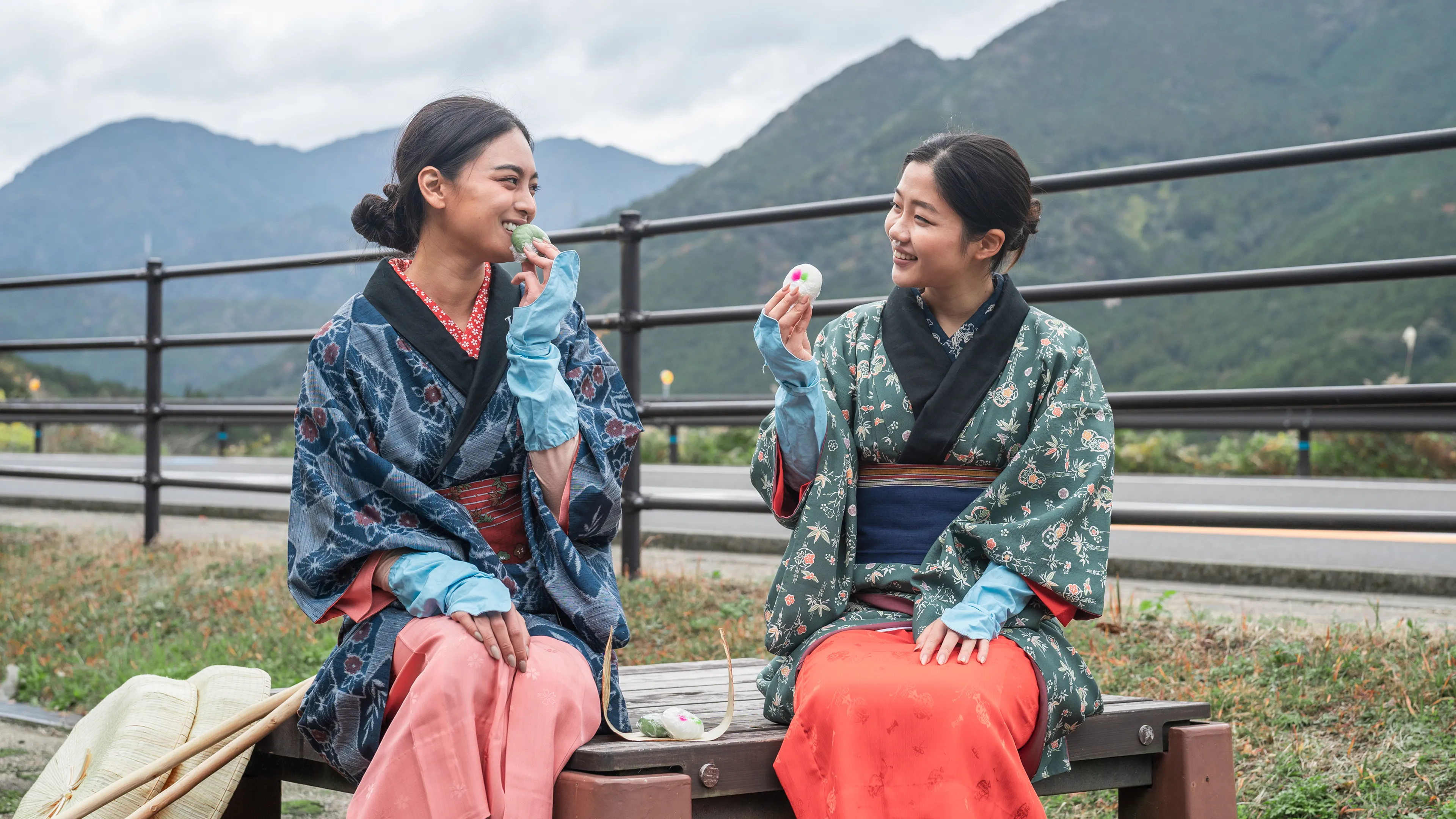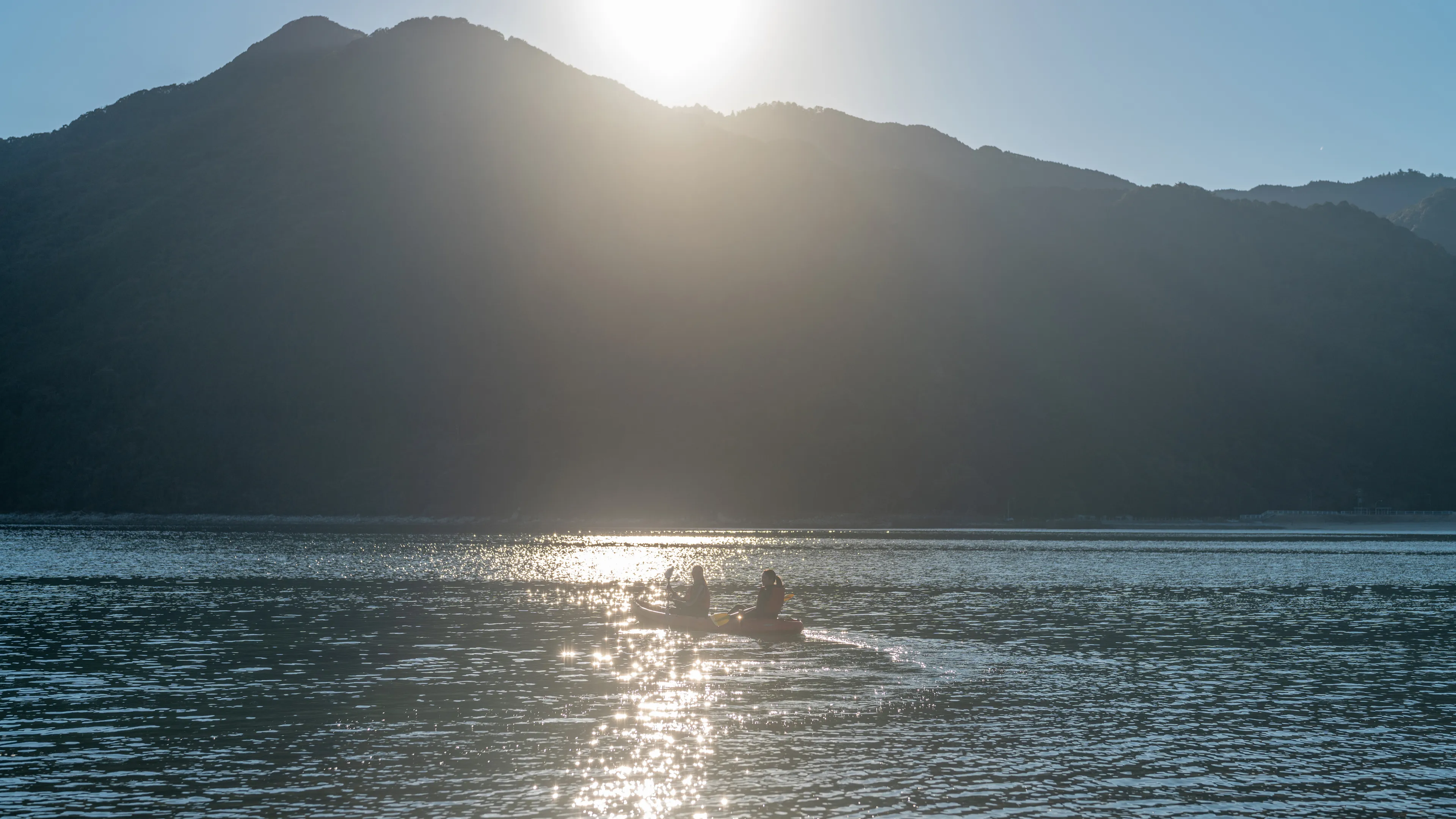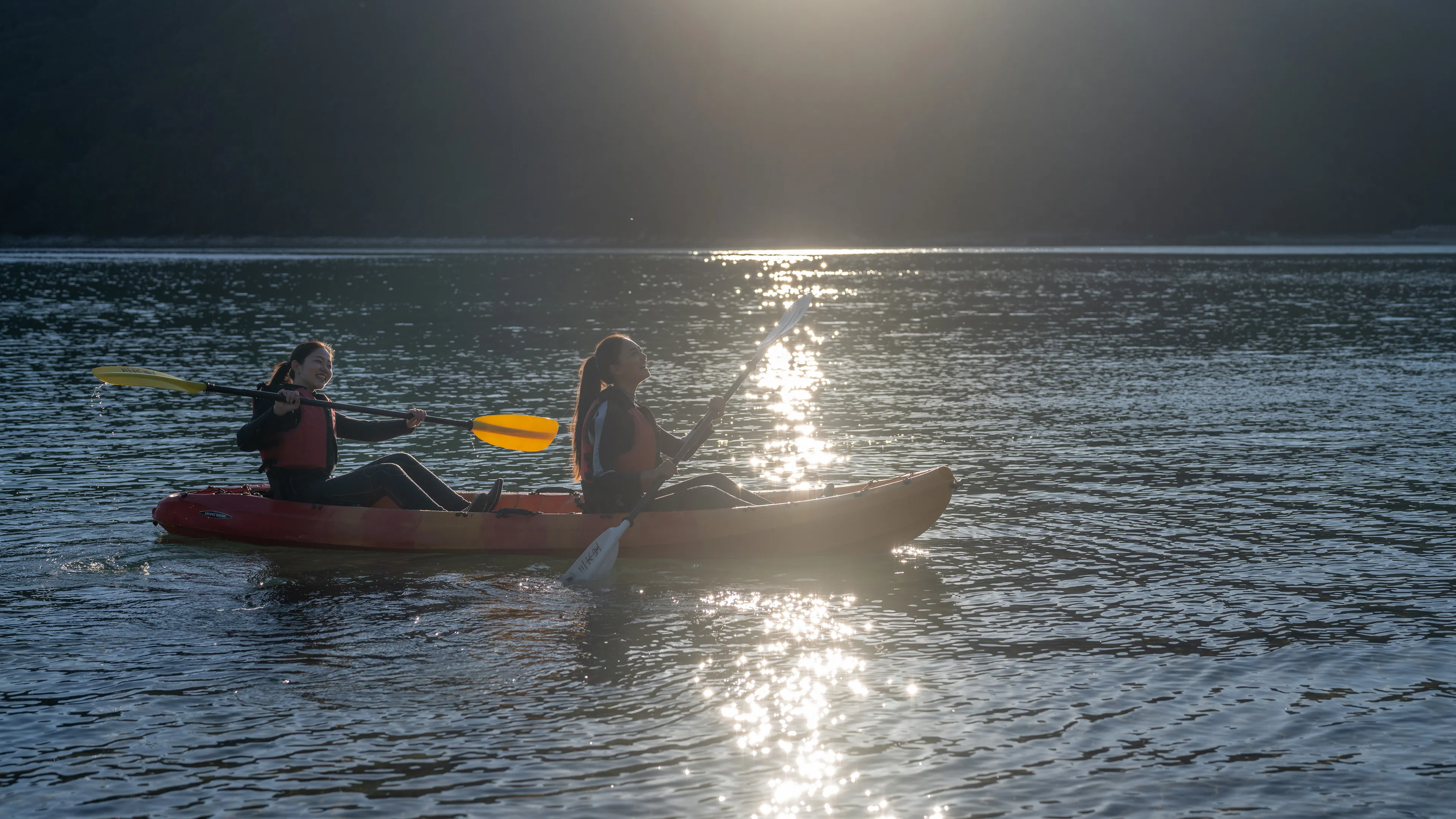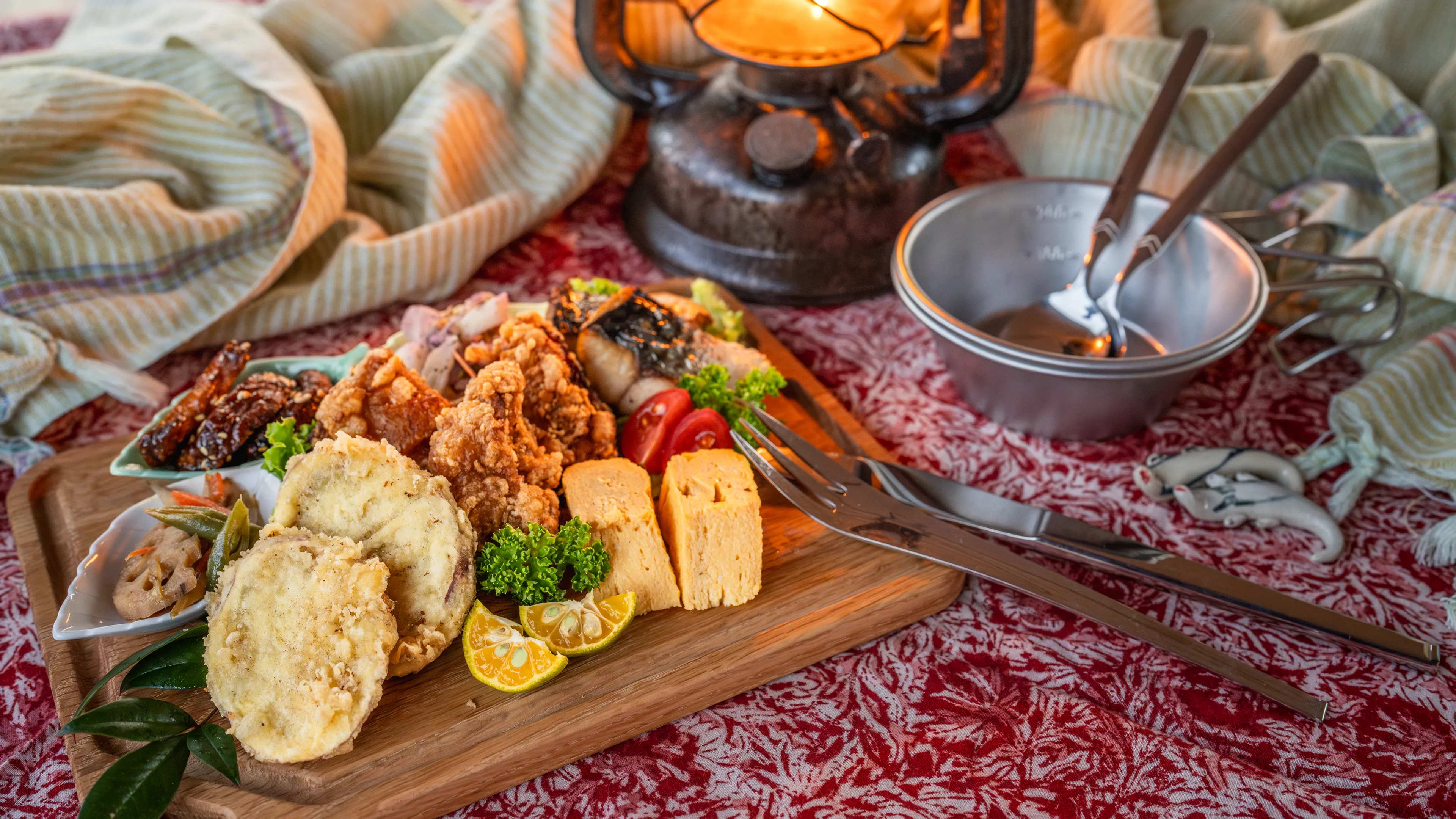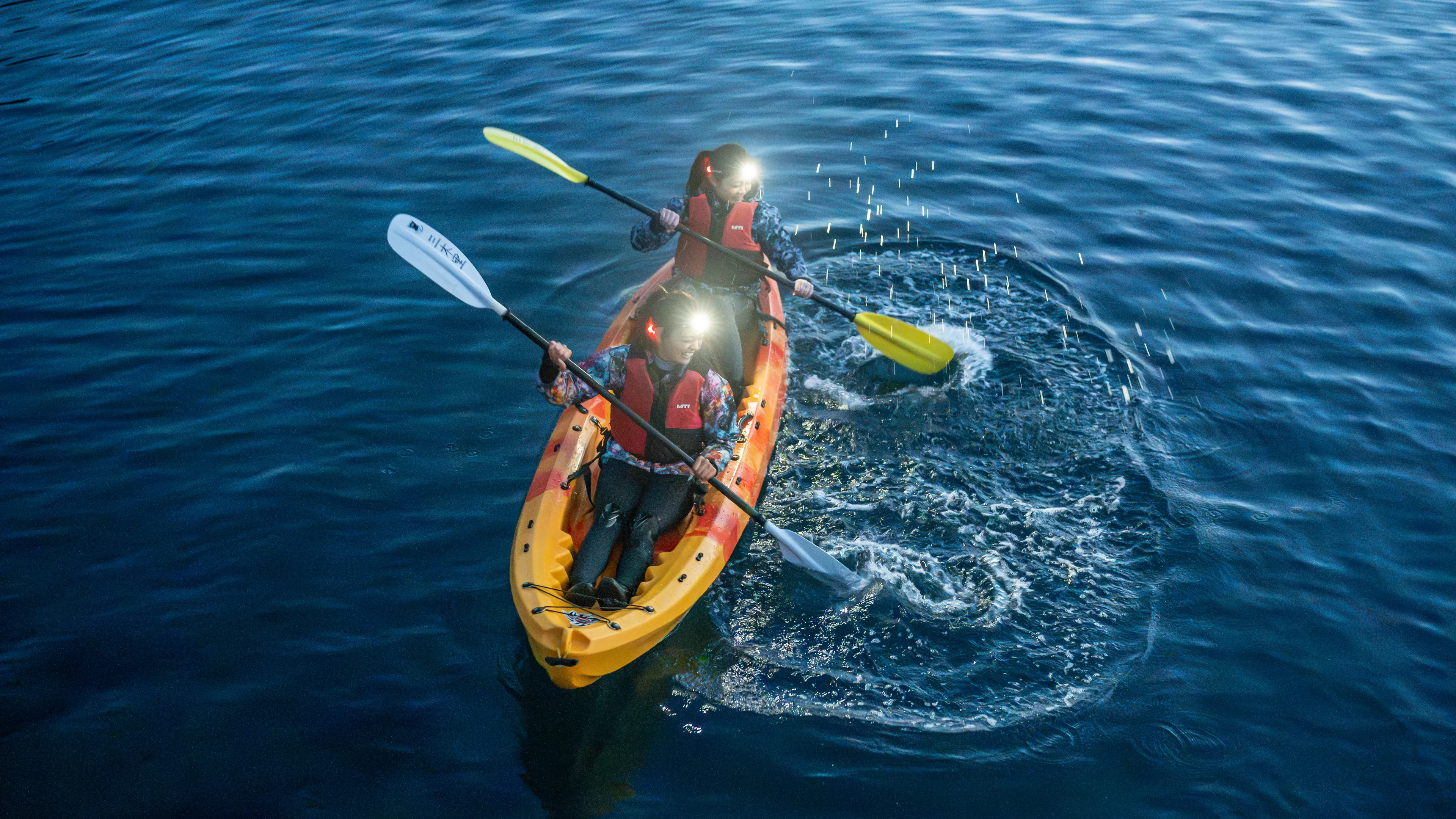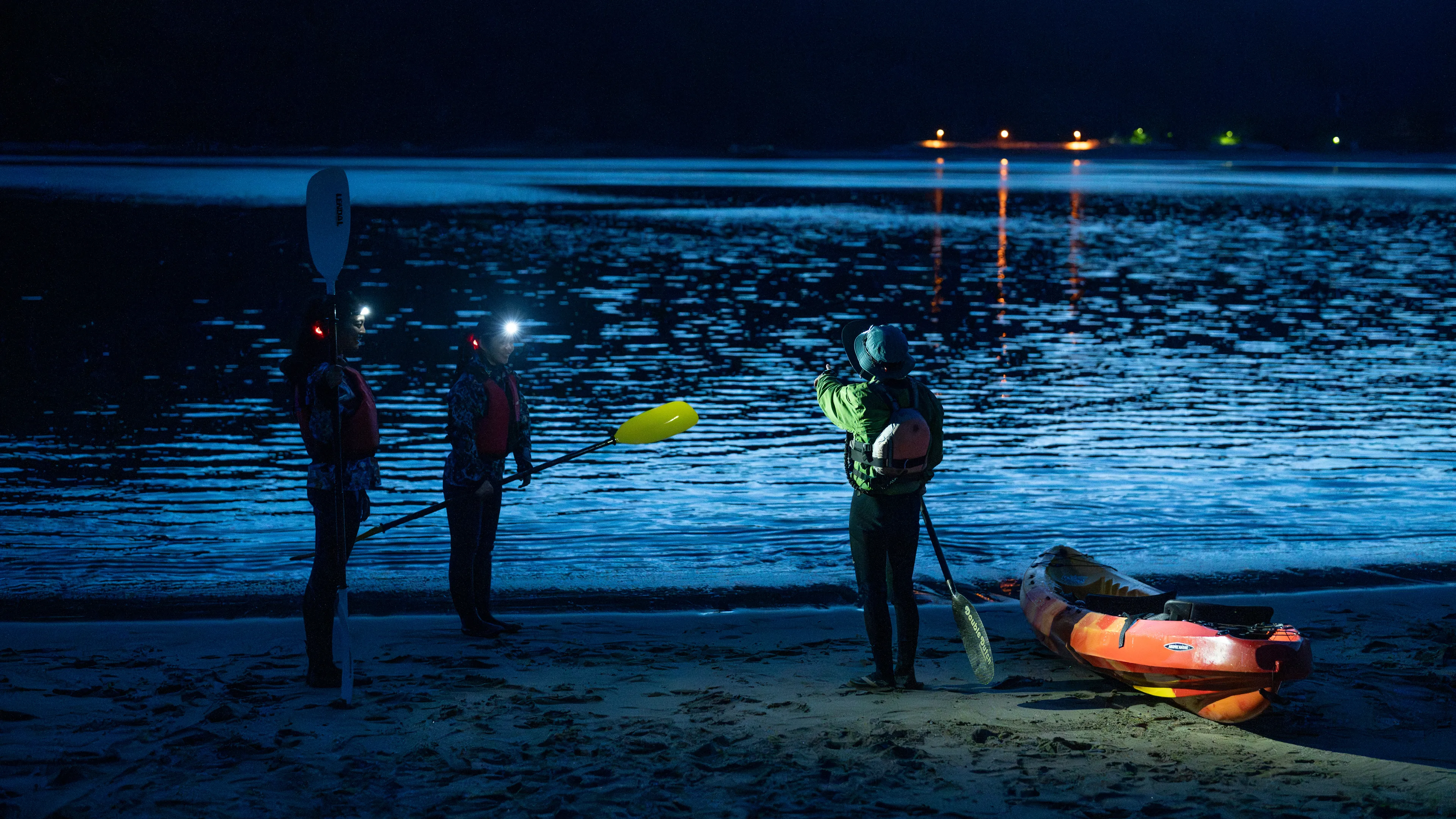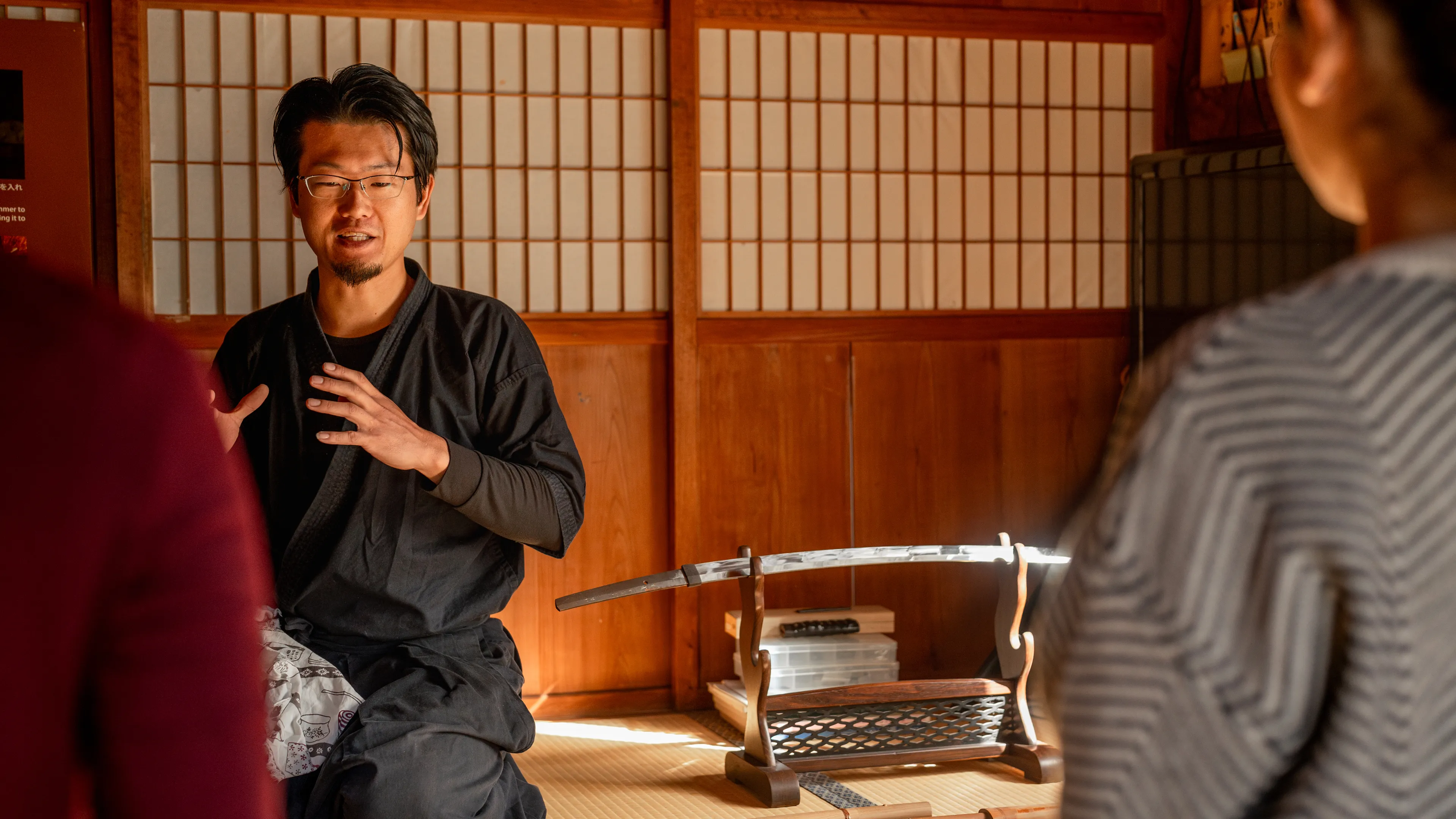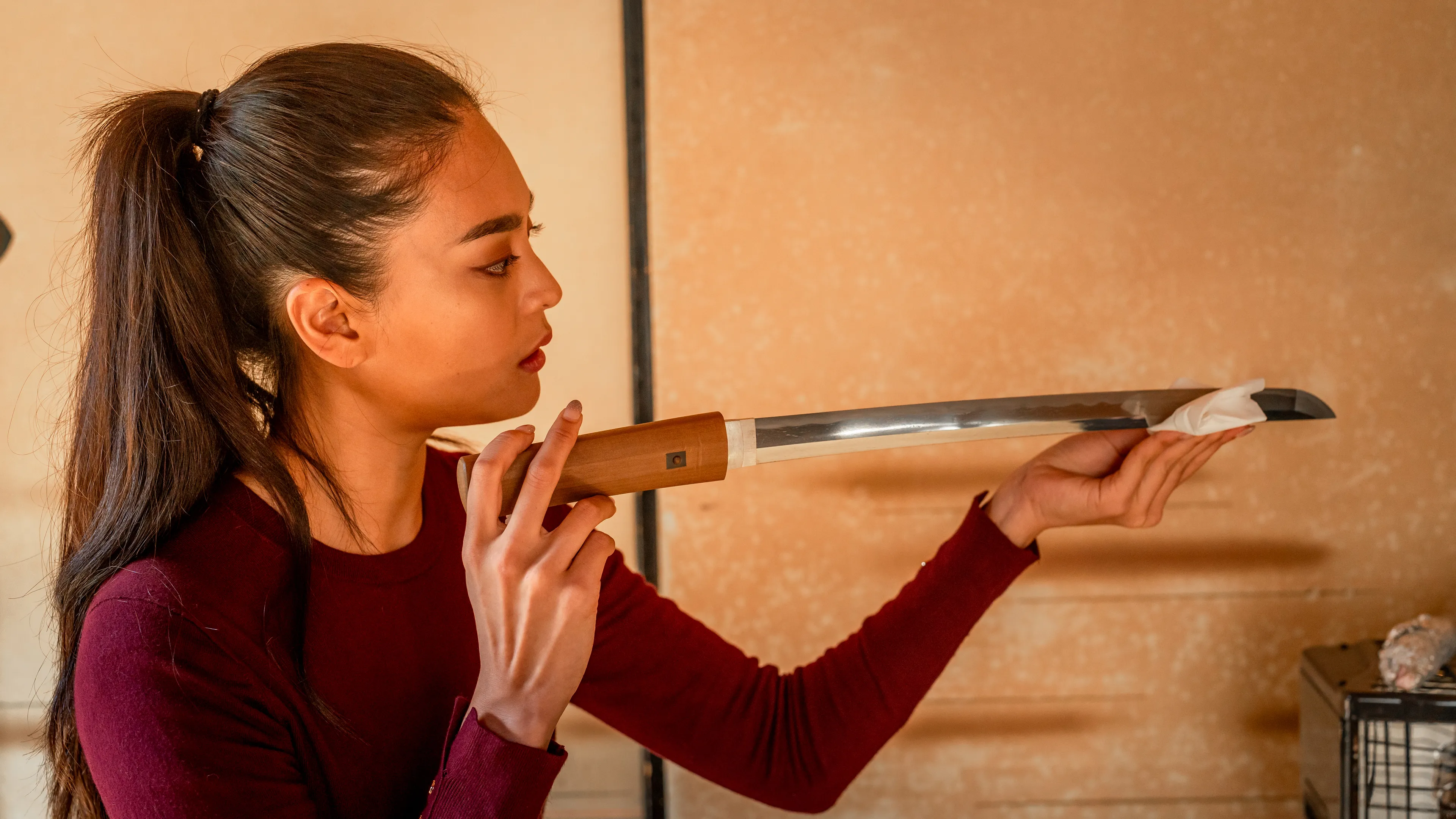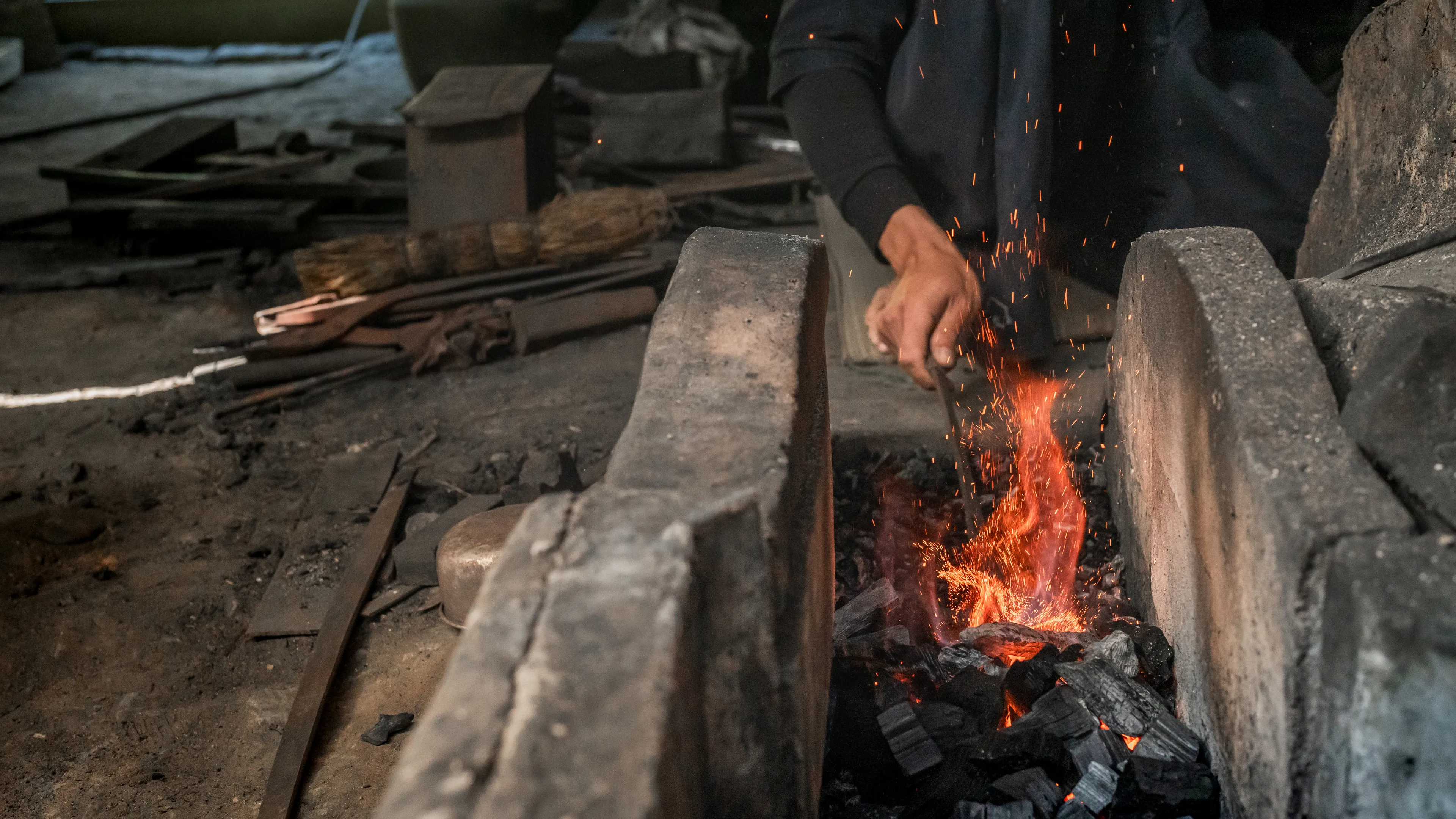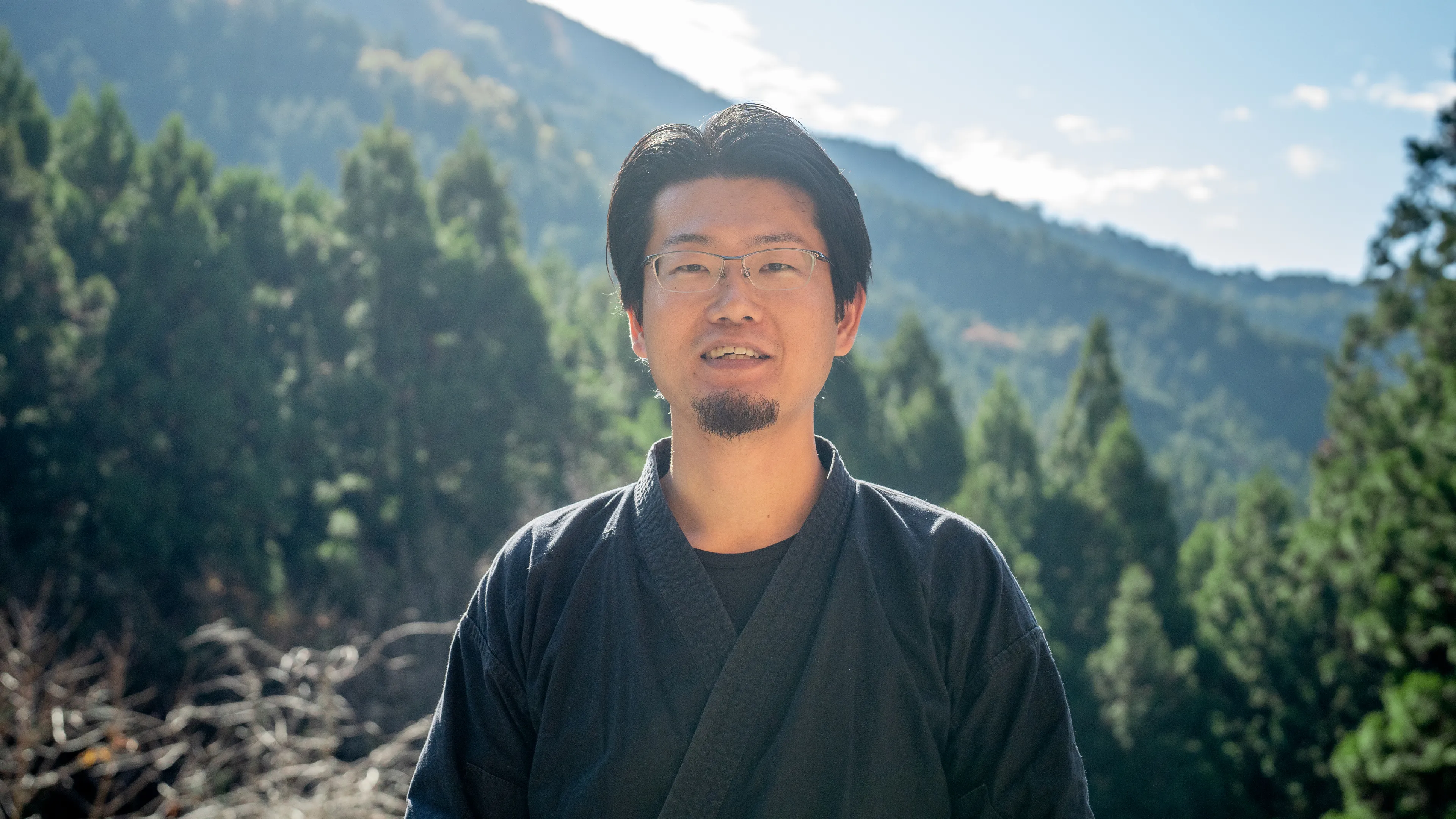
Hokusei and Iga
This region is steeped in history and culture, including the nostalgic Edo-period streetscapes of Seki-juku, one of the 53 post stations of the Tokaido road. In the city of Iga, the birthplace of the Iga school of ninjutsu, you can learn all about ninja mainly be trying some of the tricks at a ninja house and throwing shuriken. Also, the traditional craft of Iga ware pottery, which is known for its distinctive earthy texture and heat resistance and heat retention properties, has a long history as one of the key industries in the region.

Indigo Dyeing and Fermented Tea at an Old Folk Home in a 1300-year-old Tokaido Post Town
Indigo Dyeing and Fermented Tea at an Old Folk Home in a 1300-year-old Tokaido Post Town
This program offers participants the chance to try traditional indigo dyeing and tea at an old folk home in Sekijuku, a beautiful post town along the Tokaido Road measuring nearly 1.8 km long and boasting over 1,300 years of history. Mie has a history of producing indigo dyed kimono cloth such as Matsusaka and Ise cotton. During this activity, participants will learn about why so many people in the past used indigo dye while crafting their very own dye. After the dyeing activity, participants enjoy a soothing time with some fermented tea made from leaves hand picked in the mountains at Kameyama, Mie, in an original cup. Mie has long been known as a place for tea cultivation, and is one of the only places in Japan that produced and exported black tea. With a dwindling number of tea growers and teacup makers, our mission is to pass on traditional tea techniques to the world.
Points to recommend
- Beautiful town scenery with traditional post town wooden homes
- A space that fuses antique folk craft used on a daily basis and modern craftsmanship
- Silk stoles dyed using traditional methods and indigo dye
- Enjoy Kameyama tea, which was once one of Japan's leading black tea producers, in a cup made by artisans
Schedule
・Explanation on sukumo, dye liquid, and ash, the ingredients in indigo dyeing (about 10 min.) ・Explanation of dyeing method (10 min.) ・Dyeing activity (40 min.) ・Hang dyed cloth to dry, explanation on caring for dyed cloth (10 min) ・Break (10 min.) ・Enjoy two types of fermented tea made with Ise tea, some traditional dry Japanese candy, and original sweets while listening to the story of Ise tea by Ms. Yoneda from the workshop. (60 min.) ・Participants may take the indigo dyed cloth they made and some original tea home.

Beautiful Iga Ware Crafted from Fire and Earth - Nagatanien, the Iga ware kiln with 200 Years ofJapanese Culinary History
Beautiful Iga Ware Crafted from Fire and Earth - Nagatanien, the Iga ware kiln with 200 Years ofJapanese Culinary History
Situated in northern Mie prefecture in a quiet area where you can see chimneys poking up around town is Marubashira, the Iga ware village. The pottery crafted here is highly flame resistant, and since long ago, clay pots used for cooking on open flames and teapots have been made in this village. Nagatanien, which is where Iga ware is made, has continued to carry on the techniques of this craft since the workshop's founding in 1832, making pieces that are highly valued both in Japan and abroad. This program offers participants the chance to go on a special tour of the climbing kilns with the eighth generation head of Nagatanien while listening to rarely-heard stories about Iga ware, and to try cooking in a famous Nagatanien clay pot. Don't miss the chance to try some delicious rice prepared in this unique piece of pottery!
Points to recommend
- Tour the historic Iga pottery kiln established in 1832
- Listen to a special lecture by the eighth head of Nagatanien in a 200-year-old thatched-roof house
- Enjoy a clay pot rice cooking demonstration and try some matcha tea and sweets
- Take home an Iga ware dish as a souvenir
Schedule
- 1:00 p.m.
- Meet at Nagatanien
- 1:00 p.m. - 1:15 p.m.
- Tour the climbing kiln with the eighth head of Nagatanien and visit the museum (15 min.)
- 1:15 p.m. - 2:00 p.m.
- Listen to a lecture on Iga ware and clay pots by the eighth head of Nagatanien in a thatched-roof house (45 min.) Enjoy a clay pot rice cooking demonstration and try some matcha tea and sweets
- 2:00 p.m. - 2:30 p.m.
- Visit the gallery and enjoy shopping at the store (30 min.)

Shinobism - Deep Into the Spirit of the Iga Ninja
Shinobism - Deep Into the Spirit of the Iga Ninja
The city of Iga in Mie Prefecture is famous as the birthplace of the ninja. This special night program takes place at the chartered Iga-ryu Ninja Museum, which stands on the former training grounds of the Iga Ninja. It offers visitors the chance to learn about the history of the ninja, how they developed, their culture, and what they were really like. This is not a mere martial arts show or entertaining evening. Under the guidance of the Ashura Iga Ninja Group, who are active both inside and outside of Japan, visitors will have the once-in-a-lifetime opportunity to experience the true spirit and techniques of the ninja in Iga.
Points to recommend
- This is a completely private nighttime activity in a chartered ninja house
- Visitors will have the chance to see ninjutsu documents not normally available to the public
- Learn about the ninja and ninjutsu based on historical evidence from the Ashura Iga Ninja Group in this once-in-a-lifetime training activity
Schedule
- 5:30 p.m.
- Meet in the parking lot of Danjiri Museum, then change into ninja attire (15 min.)
- 5:45 p.m.
- Walk from Danjiri Museum to Iga-ryu Ninja Museum (10 min.)
- 5:55 p.m.
- Arrive at Iga-ryu Ninja Museum
- 6:00 p.m.
- <Program Part 1> (30 min.) Course on the historical background and true story of the Iga ninja: How the Iga ninja (ninjutsu) came to be, what are the ninja and what is ninjutsu?
- 6:30 p.m.
- <Program Part 2> (90 min.) Learn the nine mystic ninja hand signs, practice shuriken throwing
- 8:00 p.m.
- Program ends, change back into street clothes at ninja house (30 min.) Note: Clothing and footwear will be brought by staff from Danjiri Museum.
- 8:30 p.m.
- Participants accompanied to Ueno Park entrance

An Authentic Ninja Experience on the Site of a Mountain Castle
An Authentic Ninja Experience on the Site of a Mountain Castle
Long ago, many mountain castles were built in Iga, where the ninja were valued for their ability to move swiftly when fighting in mountainous terrain. This program offers participants an authentic ninja experience to learn ninjutsu at the site of a mountain castle, just like the ninja of old. The introductory course teaches breathing techniques, mystic hand signs, and fundamental walking techniques based on Iga ninjutsu at an indoor dojo. After lunch, participants will try swinging a sword in the forest, using a grappling hook, concealment techniques, and more while walking through the site of a mountain castle which records say was used for actual ninja training. This program is designed by the Japan Ninja Council, and is part of a rare domestic workshop that offers continuous advancement based on a systematic curriculum.
Points to recommend
- Learn traditional ninjutsu techniques endorsed by the Japan Ninja Council.
- Experience authentic ninja training at the site of an actual mountain castle.
- Participants that complete the program receive an Introductory Course Completion Certificate.
- Lunch is made with healthy ingredients that are produced locally for local consumption.
Schedule
- Morning:
- Change at the dojo, learn the definition of ninjutsu, basic movements, etc. (about 50 min.) Lunch made with local ingredients (50 min.) Note: Shuriken throwing activity available for interested participants.
- Afternoon:
- Actual ninjutsu activity using the sites of two former mountain castles while walking through the forest. (30 minute round trip to castle sites + approx. 80-minute activity). Participants try grappling hook, blinding technique, breathing methods, how to escape pursuers in the forest, concealment techniques, how to swing a sword, etc. Introductory Course Completion Certificate presented to participants at the dojo and the activity is concluded.

Chunansei
In addition to some historically significant sights like the ruins of Matsusaka Castle, where magnificent stone walls still remain, and the national historic site of the Saiku Palace, this region is blessed with an abundance of natural beauty, including the Miya River, one of Japan's most pristine waterways, the Osugidani, one of Japan's three most beautiful valleys, and the scenic gorge of Kahada on the Kushida River. Owing to the crystal-clear waters of its rivers, green tea is also cultivated in the area. Plus, this region produces melt-in-your-mouth marbled Matsusaka beef—often referred to as an “artwork of meat.”

Experience the Essence of Japanese Spirit through the Tea Ceremony, the Heart of Japanese Hospitality
Experience the Essence of Japanese Spirit through the Tea Ceremony, the Heart of Japanese Hospitality
Since ancient times, the Japanese have cherished the spirit of providing sincere hospitality to guests. It is said that the tea ceremony is the source of this idea. The tea ceremony in this program consists of a full course including a meal and tea ceremony manners. Matsusaka, Mie prospered as a wealthy merchant town, and is home to Takegawa Manor (Izawa Bunko), where the Takegawa family and famous tea master Gengensai would meet. In a Japanese-style garden surrounded by seasonal scenery, tea ceremony-themed hanging scrolls, the scent of incense, and historic tea ceremony implements... Sharpen your senses and experience the ultimate in ancient Japanese hospitality at this activity.
Points to recommend
- Experience the world of the tea ceremony at a historic house build over 300 years ago
- Enjoy each element with all five senses, including the tea ceremony implements, works of art, the garden, and tea ceremony dishes, experiencing a superb form of hospitality
- Savor tea ceremony cuisine made with carefully-selected Mie produce
Schedule
- 10:50 a.m. - 11:00 a.m.
- Meet, reception at Takegawa Manor
- 11:00 a.m. - 11:30 a.m.
- Explanation of Takegawa Manor (30 min.) (Includes history of Ise merchants, Takegawa family, interaction between Gengensai and Chikusai
- 11:30 a.m. - 3:30 p.m.
- Tea ceremony Tea ceremony dishes made with seasonal Mie ingredients and matcha tea
- 3:30 p.m.
- Activity ends The above times are rough estimates and are subject to change depending on the progress of the activity.

Packrafting tour and pizza making with locals in secluded Okuise
Packrafting tour and pizza making with locals in secluded Okuise
This plan offers participants the chance to enjoy the gorgeous untouched nature of Mie's secluded Taiki town and lunch at a guest house. An instructor will provide easy-to-understand tips so even beginners can enjoy packrafting, a river activity said to have originated in Alaska. Participants will head out to the Miyagawa River, known as one of Japan's purest streams, and relax while taking in natural vistas up close! For lunch, they'll craft their very own brick oven pizza from local ingredients with the owner of an area guest house. This is a great chance to take a break from the hustle and bustle, and refresh one's body and soul in Okuise.
Points to recommend
- Enjoy one of the best secluded river rafting experiences in Japan
- Take a break to enjoy some locally-grown coffee or herbal tea amongst gorgeous scenery
- Participants will receive photos and videos on the day of the activity
- Partial proceeds from the plan are donated to river conservation efforts, helping to protect the environment
- Equipped with world-class life saving equipment so participants can feel safe during aquatic activities
- For lunch, participants will create an original pizza made of local ingredients with a guest house owner
Schedule
- 11:00 a.m. - 12:30 p.m.
- Brick oven pizza lunch at Kawabe no Yado Sanzui guest house (90 min.)
- 12:50 p.m. - 1:00 p.m.
- Walk to Yamanorhythm (10 min.)
- 1:00 p.m. - 1:15 p.m.
- Reception and preparation (15 min.)
- 1:15 p.m. - 1:30 p.m.
- Head to start position via car (15 min.)
- 1:30 p.m. - 3:30 p.m.
- Lecture and rafting start (about 3 km, 120 min.)
- 3:30 p.m. - 4:00 p.m.
- Return to Yamanorhythm via car, change (30 min.)
- 4:00 p.m.
- Dismissed
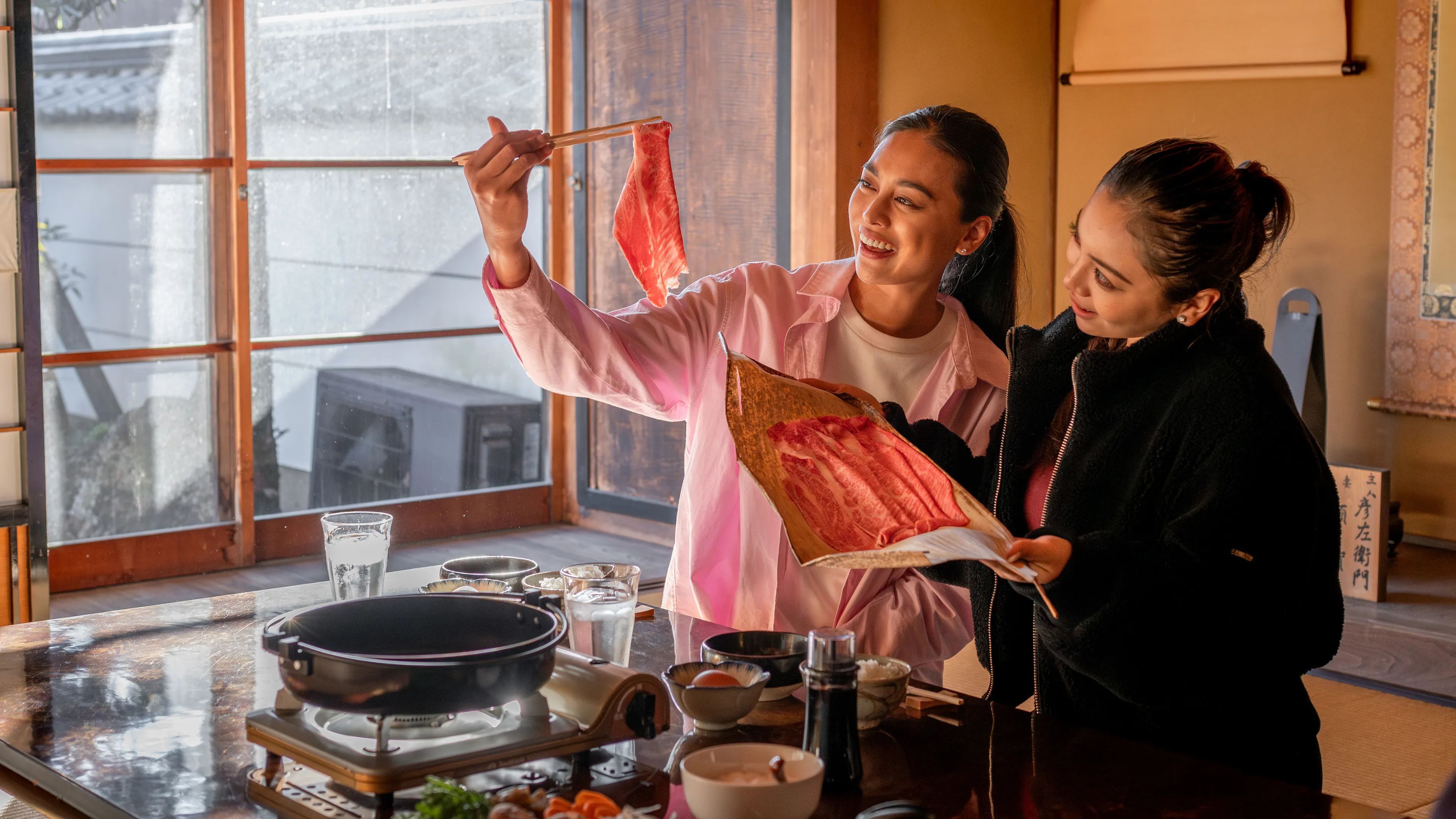
The SUKIYAKI Gastronomy Cyclingーtour
The SUKIYAKI Gastronomy Cyclingーtour
With its waterways, traditional old houses, and beautiful rural villages, Niu is the perfect place to enjoy a cycling adventure through unique Japanese scenery. The locals are proud of their pioneering spirit and still talk about the days long ago when people dug waterways through the barren land, making it into a lush agricultural community. This program offers participants the chance to cycle amongst the seasonal scenery of the village while experiencing its history. After the bike ride, they'll enjoy sukiyaki made with Special Matsusaka Beef. Matsusaka Beef is already world famous, but this variety accounts for a mere 4% of all Matsusaka cows, making it a particularly special treat. This is a luxurious cycling tour through gorgeous villages followed by the ultimate Wagyu beef. An optional organic farm vegetable picking activity is also available.
Points to recommend
- A cycling tour through historic Japanese village scenery
- Participants will attend a picture-card show at a traditional home depicting a local story that takes place during the Edo period
- A meal of sukiyaki made with the highest grade of Special Matsusaka Beef will be served
- This is the only place that can offer Special Matsusaka Beef (accounting for only 4% of Matsusaka cows) year-round.
Schedule
- 10:00 a.m. - 10:10 a.m.
- Meet at cazacle cycling station for orientation
- 10:10 a.m. - 10:50 a.m.
- View a picture-card show at a 300-year-old Japanese home
- 10:50 a.m. - 11:50 a.m.
- Cycling (about 10 km) Stop by places of interest (tour of a hand-excavated tunnel, photos at rice paddies, tofu shopping, etc.)
- 11:50 a.m. - 1:30 p.m.
- Learn about Wagyu via a flip chart at an old home and enjoy sukiyaki Optional: Organic farm vegetable picking (30 min.) Pick seasonal vegetables and cook them in sukiyaki
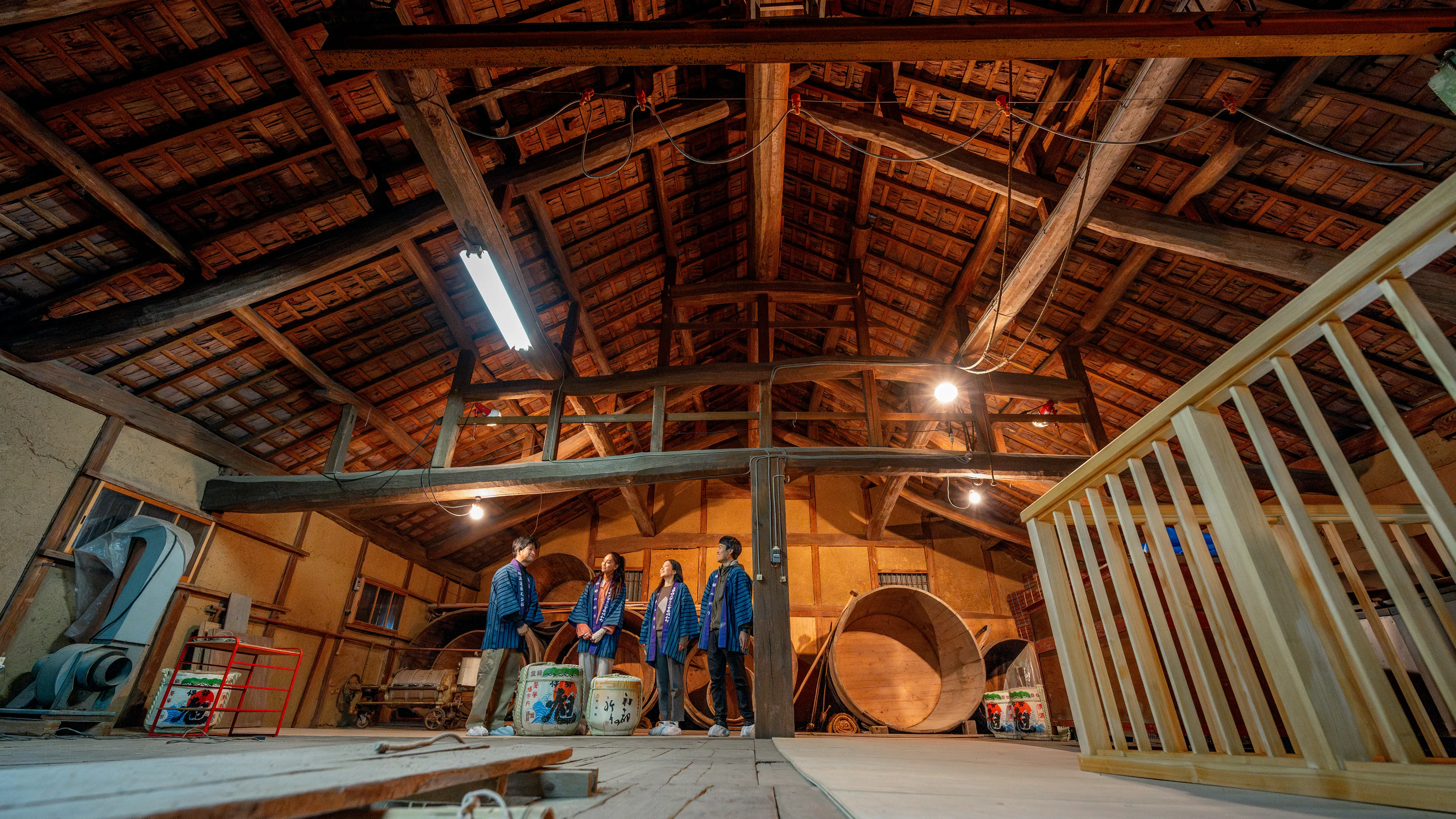
Explore the wonder of Japanese Sake on a cycling tour at Meiwa town
Explore the wonder of Japanese Sake on a cycling tour at Meiwa town
Every year, Shinto no Inori Saio sake receives high marks at sake competitions outside of Japan. This program offers participants the chance to cycle through Meiwa on a tour that showcases its abundant water resources including water veins, spots connected to Saio, a princess of long ago which the sake takes its name from, and the brewery where Shinto no Inori Saio is crafted. Cycling through the town allows participants to experience the climate that results in such tasty produce and sake. Partway through the tour, they'll have the chance to stop for a lunch of the beloved local chicken grilled in miso served with sake rice and some sweets made of sake to recharge for some more riding. This exhilarating trip on a power-assisted bicycle is the perfect way to experience the wide open sky and countryside scenery of Meiwa.
Points to recommend
- A sake-themed cycling tour
- Learn about Shinto and Ise Grand Shrine through Shinto no Inori Saio sake
- Tour participants can enjoy sake sweets and lunch made with Kaminoho sake rice
- The program not only offers a tour of the sake brewery, but also a chance to try water used in brewing, and sake sampling
Schedule
-
・Reception at Saiku Station, tour briefing, explanation of how to use bicycles (10 min.)
・Cycle to next spot (10 min.)
・Offer a prayer for safety at Take Shrine, then attend a lecture on shrine visit manners (20 min.)
・Cycle to next spot (60 min.)
・Tour of Asahi Brewery (view video while eating sake sweets, sample sake brewing water, tour of brewery, sake tasting), shopping (90 min.)
・Head to Torimisoya for lunch by car (20 min.)
・Chicken grilled in miso and sake rice lunch (90 min.)
・Travel to the station by car (15 min.)
・Dismissed at Saiku Station
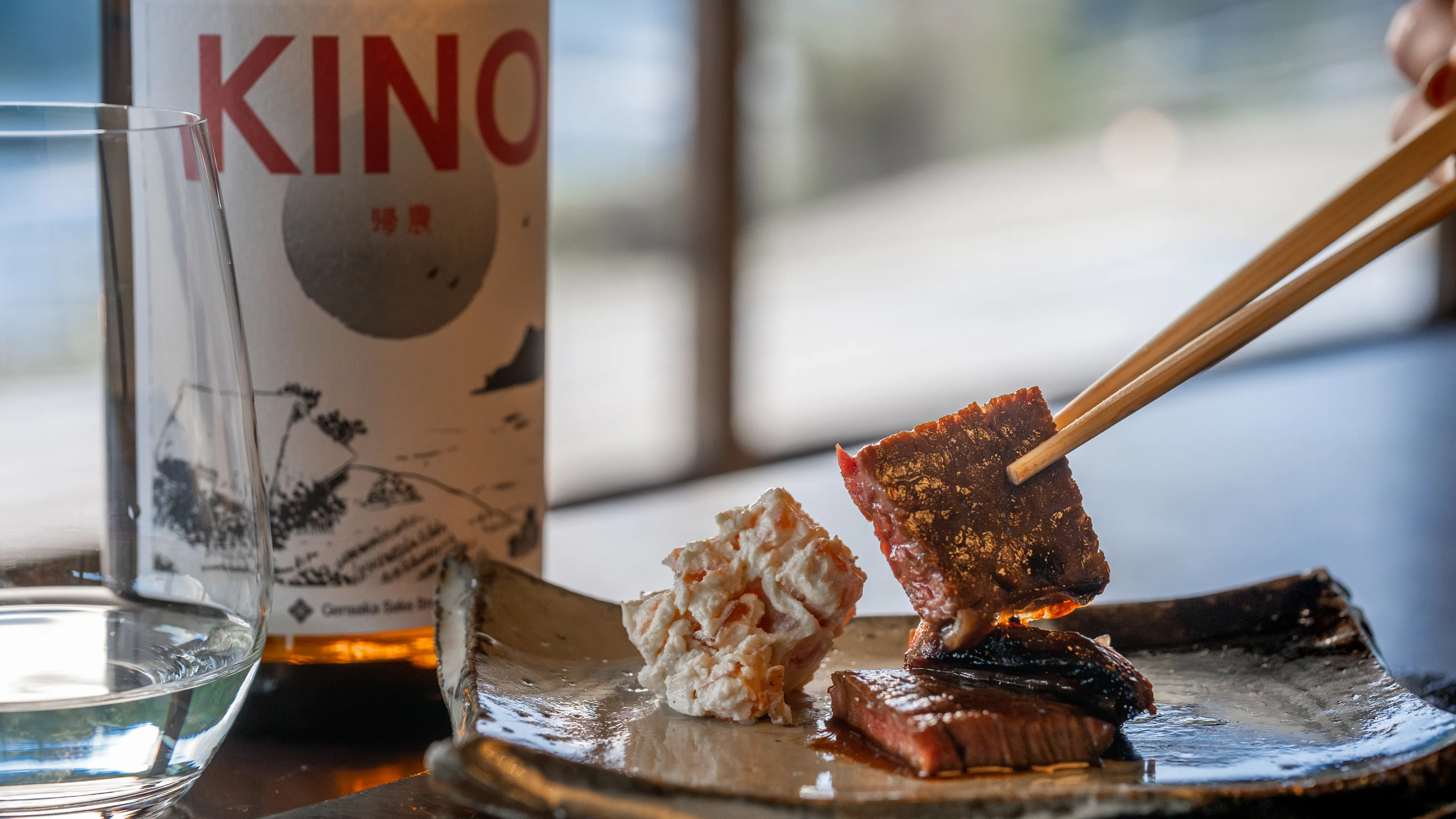
A 200-year-old Sake brewery visit and Sake pairing course at Hinakaya, a Michelin starred restaurant
A 200-year-old Sake brewery visit and Sake pairing course at Hinakaya, a Michelin starred restaurant
This program offers participants the chance to enjoy Japanese cuisine paired with rare sake that can only be found in the villages of Mie. Located about 30 minutes from Ise Grand Shrine by car amongst unique Japanese scenery is where you'll find the famous Mie restaurant Hinakaya and Gensaka, a historic brewery founded over 200 years ago. The seventh head of Gensaka, where Isenishiki, an extremely rare sake rice, was revived, will provide a lecture on locally-rooted sake brewing techniques and features. Participants will also have the chance to tour the brewery itself, the environment where the rice is cultivated, and to sample some sake. After the tour, participants will head to Hinakaya, a restaurant located in a traditional Japanese home in a beautiful mountain village where they'll enjoy a dinner prepared specifically for pairing with sake, made with plenty of local seasonal ingredients.
Points to recommend
- A tour of one of Japan's leading sake breweries that handles the entire process in-house, and sake sampling
- A special dinner at exclusive Hinakaya, located in a beautiful mountain village, where dishes are crafted to perfectly pair with local sake brewed from rare Isenishiki rice
Schedule
-
・An introduction of Gensaka Brewery by Shinpei Gensaka, the 7th head of the brewery, tour of the brewing process, sake sampling (30 min.)
- A tour of the inside of the brewery is also possible during February, March, October, and November
・Head to the rice fields at Hinakaya for an explanation of the environmental factors that contribute to sake and Gensaka Brewery's initiatives (30 min.)
- Handled indoors at Hinakaya when raining
・Meal made with local ingredients for pairing with sake at Hinakaya (3 types of sake with 9 dishes) (120 min.)

Premium lumbering experience and craft yourown wooden chopsticks
Premium lumbering experience and craft yourown wooden chopsticks
Surrounded by beautiful forest, the town of Iidaka is known as one of the top producers of cedar and cypress in the country. This program offers participants the chance to walk among the century-old trees in the forest of Iidaka with Okinaka Zourin, one of the top reforestation companies in Japan. Okinaka Zourin will show participants how to select a tree, then chop it down on their own in this activity. Before cutting a tree down, a Shinto prayer of thanks will be offered as part of a unique Japanese cultural experience. After felling the tree, participants will enjoy a coffee break in the woods and then make a pair of chopsticks and a chopstick rest using local lumber. This out of the ordinary activity offers the chance to experience the forest with all five senses, learn about the important role forests play, and understand how to achieve a sustainable society. It is a valuable experience that grants participants a new perspective on modern living.
Points to recommend
- An enjoyable, but educational activity that teaches about the forest while touching and felling trees in the woods of Iidaka, home to century-old trees
- Participants choose a tree, then chop it down
- Take home some original chopsticks and a chopstick rest made of local lumber
Schedule
- 9:30 a.m.
- Meet at Roadside Station Haze
- 9:30 a.m. - 9:45 a.m.
- Go over mountain precautions, then check the program details and schedule
- 9:45 a.m. - 10:00 a.m.
- Head to forest entrance
- 10:00 a.m. - 11:30 a.m.
- Offer a Shinto prayer at the forest owned by Okinaka Zourin, then fell trees
- 11:30 a.m. - 12:30 p.m.
- Take a break in the woods, then make chopsticks and chopstick rest
- 12:30 p.m.
- End
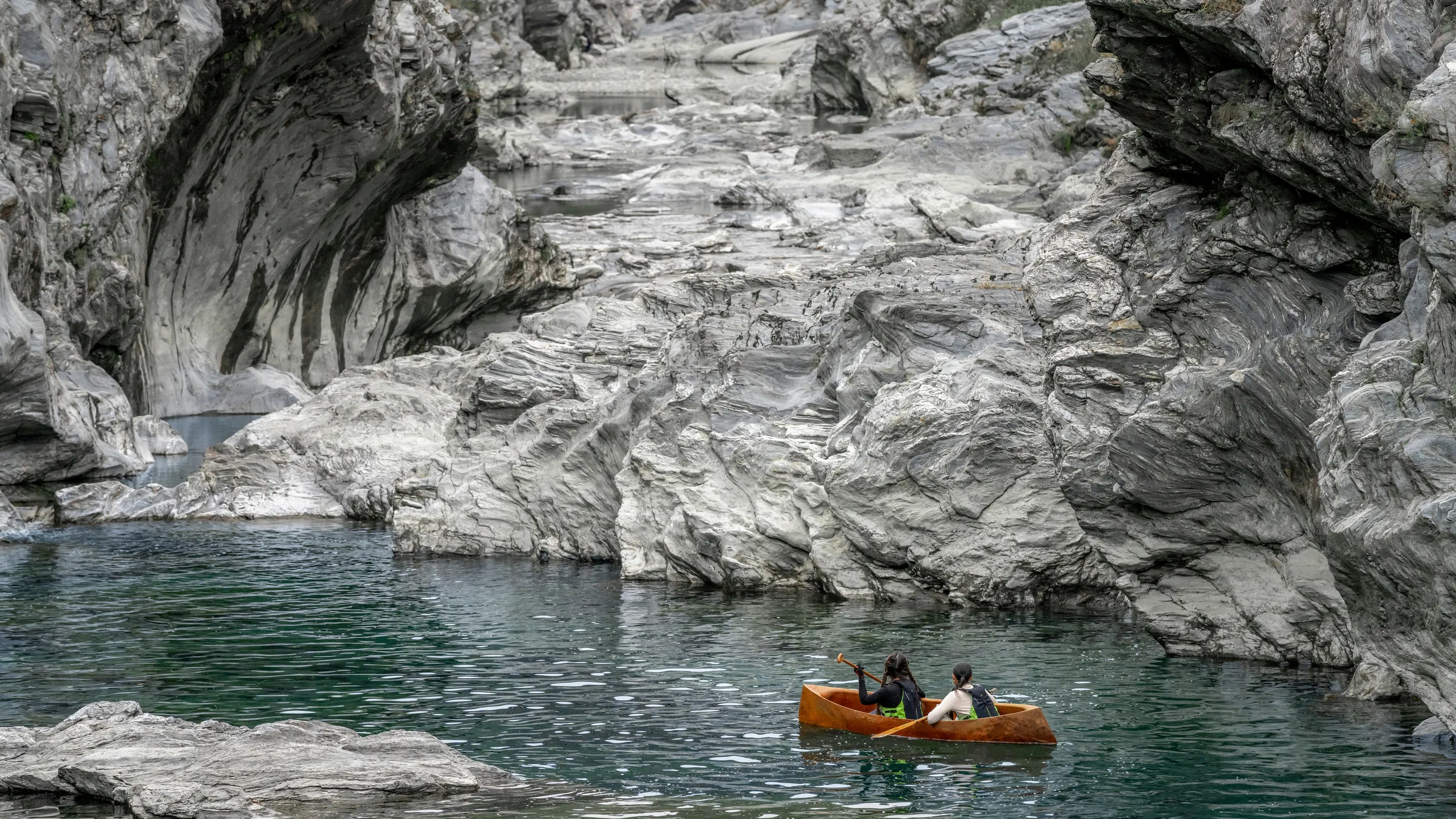
A ride on a canoe made of 100-year-old cedar & a wild game lunch
A ride on a canoe made of 100-year-old cedar & a wild game lunch
Iitaka is home to a lush forest and the clear Kushida River. In the past, the river carried lumber lashed into rafts all the way to the open plains. To share this history, the idea of the century-old cedar canoe was born. This canoe, hand carved from a 100-year old cedar tree, features beautiful wood grain patterns, and is a recipient of the Wood Design Award. This activity offers participants the chance to travel down the Kushida River and experience its historic logging days. A trip through the woods near the source of the river with the canoe is a great way to take in the sights of the forest of Iidaka and experience its harmonious coexistence with man. After canoeing, participants will enjoy a lunch of wild game and other local ingredients. (There is only one 100-year old cedar canoe. Parties with two or more participants must take a regular canoe.)
Points to recommend
- Enjoy a leisurely trip down the Kushida River while taking in the scenery that was once enjoyed by loggers.
- Paddle a hand-carved canoe that won the Wood Design Award
- Savor a meal of local ingredients including wild game amongst the great outdoors. Plates are made of local wood, offering participants the chance to enjoy the true bounty of local nature.
Schedule
- 9:00 a.m. - 9:10 a.m.
- Meet at Mokuichi, go over canoeing precautions, then check the program details and schedule
- 9:10 a.m. - 9:20 a.m.
- Head to Kushida River
- 9:20 a.m. - 10:30 a.m.
- Complete preparations at the river, then enjoy canoeing
- 10:30 a.m. - 10:50 a.m.
- Tour the Mokuichi showroom and workshop
- 10:50 a.m. - 12:30 p.m.
- Lunch of wild game on the Mokuichi terrace
- 12:30 p.m.
- End

Ise-Shima
Ago Bay in the city of Shima is one Japan’s most well-known ria coastlines. A ria is a drowned river valley that remains open to the sea, which is why the scenic coastline of the bay is so intricately meandering and dotted with around 60 islands of different sizes. It is also known for its pearl farming. Being blessed with the fresh bounties of the sea, since ancient times the area has been called umashikuni, which literally translates to “delicious country.” And the traditional culture of mainly female ama divers, who free dive for seafood, still thrives today in this region.
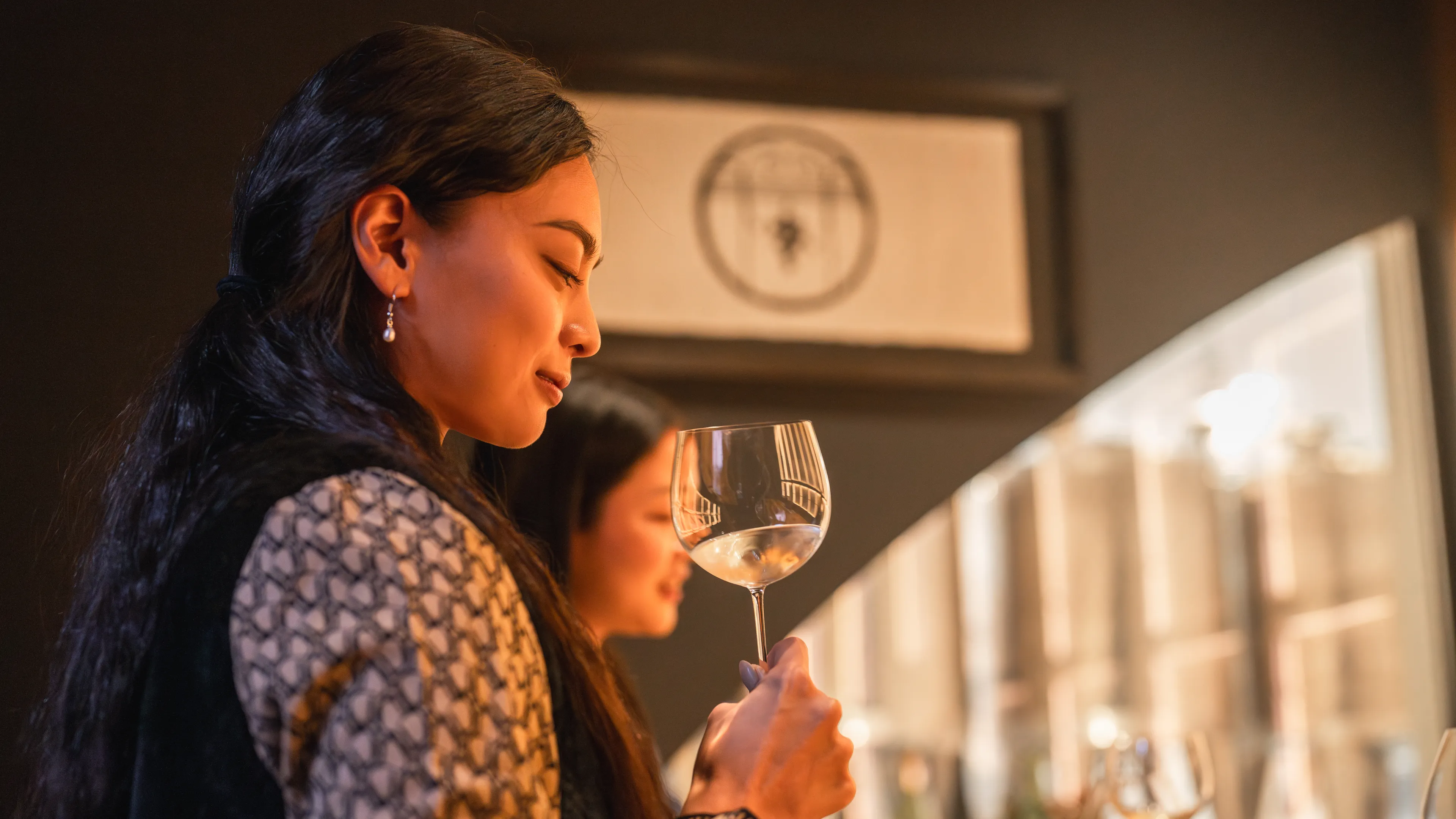
Ise-Shima Ise beef and wine paring at micro winary in Ise
Ise-Shima Ise beef and wine paring at micro winary in Ise
Ise has been known as "Umashi Kuni" (beautiful country) since ancient times. Named after this legacy, Ise Umashikuni Winery was launched in November 2022 with the idea of crafting wine that pairs perfectly with the wonderful ingredients that come from this beautiful natural environment. This program offers participants a tour of the winery guided by winemakers. Later, participants head to a bar overlooking the winery where they'll enjoy an aperitif consisting of two different wines made with grapes unique to Japan. After that, a course meal paired with wine will be served, including brick oven grilled steak made with famous Ise beef at Ise Fukutatei, a restaurant affiliated with a famous eatery which has earned star ratings in the Michelin Guide for six consecutive years. Each aspect of the experience is crafted by Ise artisans, from the local ingredients and wine made in-house to the building, crockery, cutlery, and art. This is the perfect way to experience Umashi Kuni Ise.
Points to recommend
- Tour of the winery guided by Ise Umashikuni Winery winemakers.
- Wine tasting (two varieties made with grapes unique to Japan) at Yuniwa, the bar overlooking the winery with commentary by a sommelier.
- The restaurant is chartered specifically for this activity (limited to 4 - 6 people) and small children are allowed.
- Activity pairs in-house fermented wine with creative cuisine made from local ingredients.
- Every aspect is crafted by local artisans, including the building, crockery, cutlery, art, etc.
- Each participant may take home a single bottle of wine as a souvenir.
Schedule
-
・Guided tour of Ise Umashikuni Winery by winemakers - 15 min.
・Aperitif at Yuniwa, the bar overlooking the winery - 15 min.
・Creative cuisine made with local in gredients paired with wine made in-house at Ise Fukutatei - 120 min.
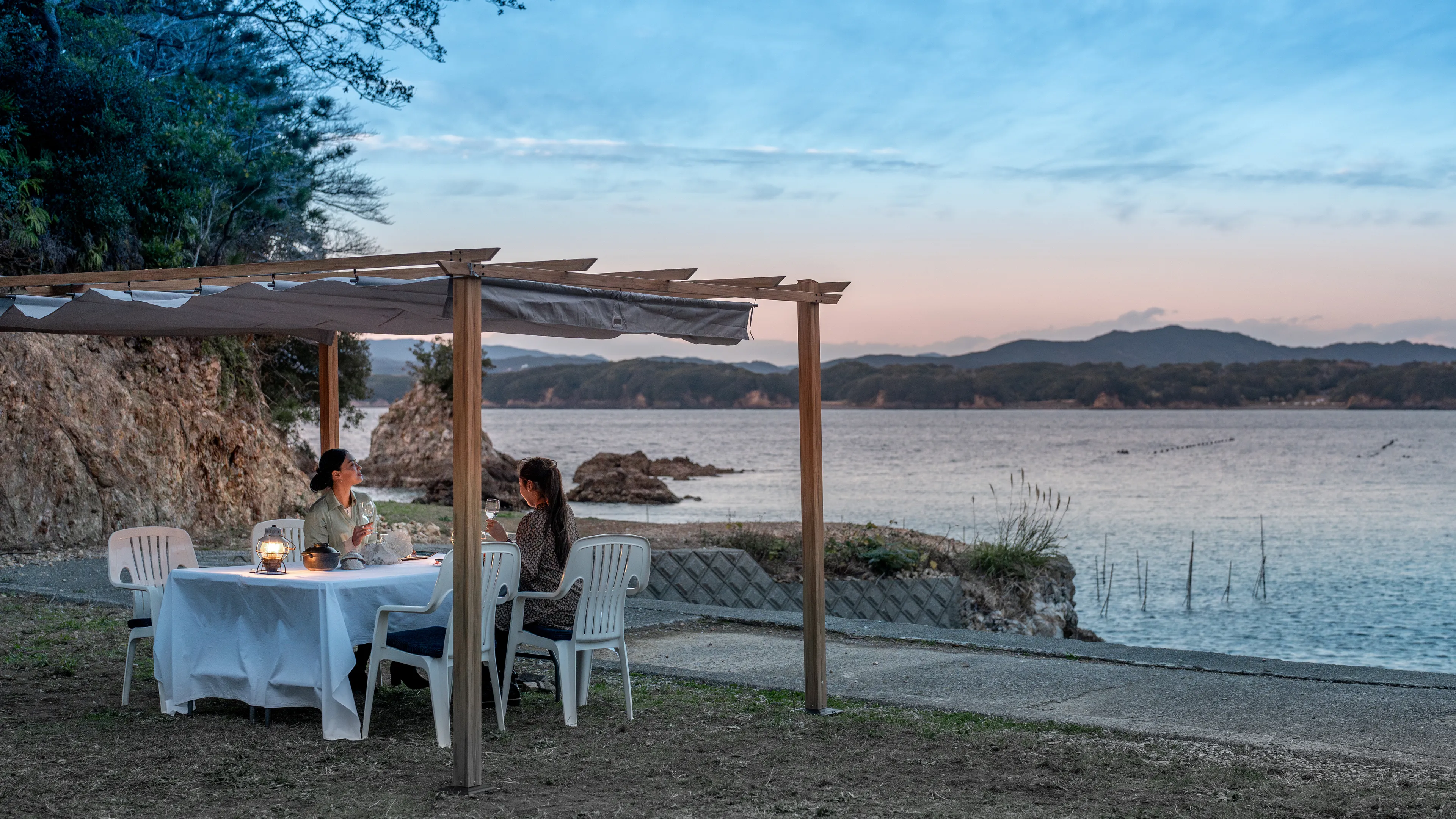
Premium dinner with Ama butler at private beach
Premium dinner with Ama butler at private beach
Ama are female freedivers who catch seafood such as abalone and sea urchin. Ama fishing, which has been a tradition in Shima, Mie for over 2,000 years, is designated as an important intangible folk cultural property. With over 200 active ama, it is one of the few places in the country where this type of fishing is still practiced. The average ama age is 65! This program offers participants the chance to get their fill of Shima accompanied by energetic ama. First, participants will head out on a boat with the ama to experience their traditional basket fishing technique used to collect a variety of fresh seafood. Next they'll enjoy a special dinner made with the freshly caught seafood on a private beach. The ama serve as their own private butlers for an unforgettable experience.
Points to recommend
- A fishing experience with current ama from Shima.
- Ama butlers provide special hospitality for participants.
- Enjoy the flavors of Shima prepared by a top chef on a private beach.
- <Notes> *Possible chef: Head chef at a Michelin Guide single-starred restaurant in Shima *Depending on the date, a famous local chef or other top chef from another part of the country will prepare meals. *Held indoors during rainy weather.
Schedule
- 2:00 p.m.
- Meet at one of the following places, then head to the basket fishing spot by boat (about 45 min.) Note: Times subject to change depending on season ・Ama Hut Satoumian ・Pier at each participant's accommodations ・Kashikojima Port
- 2:45 p.m.
- Basket fishing activity (10 min.)
- 3:30 p.m.
- Head to private beach (15 min.)
- 4:00 p.m.
- Course meal begins
- 6:00 p.m.
- Ends, participants dropped off at accommodations via tuk tuk
-
<Sample menu>
① Soup
② Selection of appetizers
③ Sashimi
④ Tempura
⑤ Rice
⑥ Red miso soup
⑦ Pickles
⑧ Dessert
※The freshly-caught seafood is used in the above dishes.
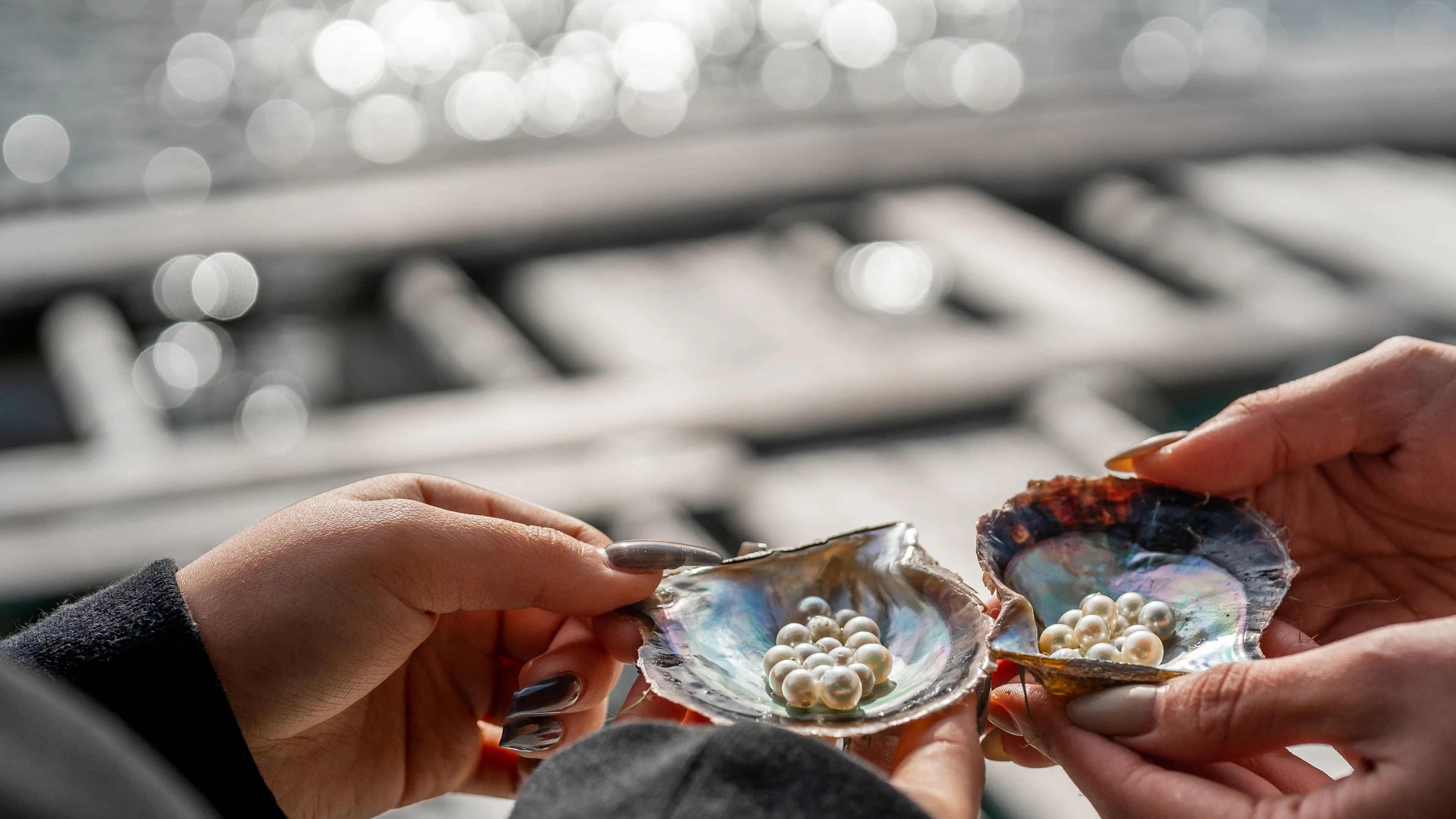
A Unique Pearl Jewelry Experience at Pearl Miki Discover and learn pearl culture in Iseshima
A Unique Pearl Jewelry Experience at Pearl Miki Discover and learn pearl culture in Iseshima
Shima, Mie is the birthplace of pearl cultivation. Thanks to abundant ocean resources and time-honored techniques, Shima pearls are known as being some of the highest quality around the world. This program offers participants the chance to visit a pearl farm to learn about the cultivation techniques in person while talking with artisans. They'll also have the chance to collect pearls from oysters and the very rare chance to seed oysters, learning just how difficult the process of pearl cultivation truly is. Finally, participants will use the pearls they collect to make a one-of-a-kind piece of jewelry.
Points to recommend
- Try seeding oysters, which is the essence of pearl cultivation.
- Each pair of participants will collect pearls from a single net (32 oysters), then use their favorite pearls to make an accessory.
- Participants are picked up and dropped off in a tuk tuk, the perfect mode of transportation for enjoying the Shima seaside.
Schedule
- 9:30 a.m.
- Meet at Ama Hut Satoumian. Head to Pearl Miki by tuk tuk.
- 10:00 a.m.
- Activity begins ・Rare oyster seeding activity ・Collect pearls from 32 oysters in a single net (portion for 2 people) (16 oysters per person) ・Choose from among the collected pearls to create a piece of jewelry
- 1:00 p.m.
- Activity ends and participants are dropped off at Ama Hut Satoumian
- 1:30 p.m.
-
End
Note: Please contact us if participants wish to be picked up by boat.
The above times are rough estimates and are subject to change depending on the progress of the activity.
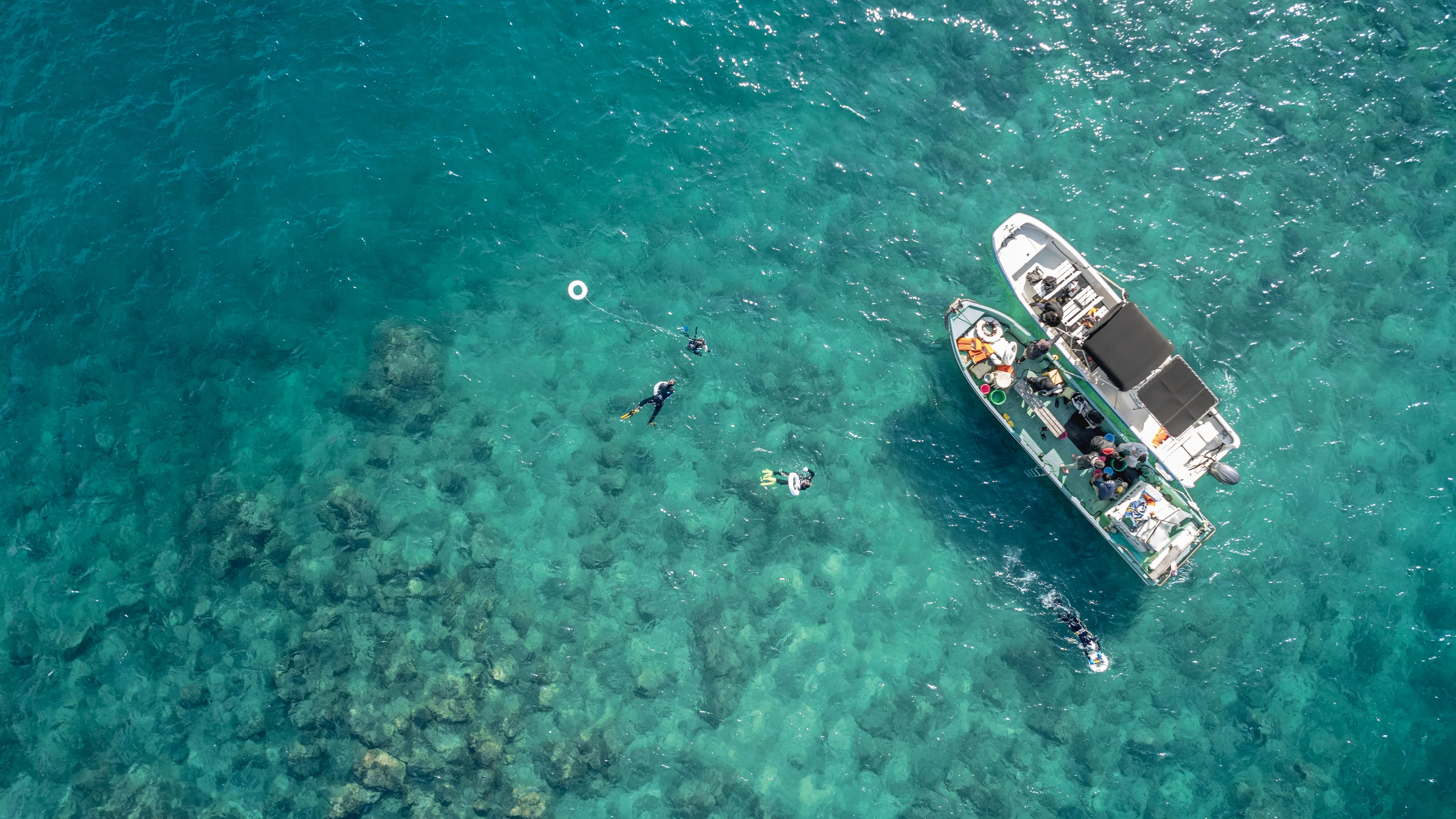
Dive with Ama Divers to capture "Gangaze” and protect the beauty of Ago bay
Dive with Ama Divers to capture "Gangaze” and protect the beauty of Ago bay
Ama are female freedivers that have carried on this traditional method of fishing for over 2,000 years. Ise-Shima is home to the most ama in the country, and it has developed a rich culture that has lasted from ancient times until today. Why not join Ise-Shima divers and swim down to catch some sea urchins using this time-honored method? This activity offers participants the chance to learn about the history of the divers, their lives, and how they coexist with the ocean from actual ama, while contributing to protecting the abundant marine environment by harvesting some gangaze sea urchin, whose excessive numbers are a local problem. After catching the sea urchin, participants can enjoy this delicacy as part of a seafood bowl that they'll make themselves.
Points to recommend
- Dive with marine expert ama at Ago Bay in Ise-Shima National Park.
- Catch gangaze, which taste very similar to common sea urchin, with ama to help protect the marine environment of Ise-Shima.
Schedule
- 10:00 a.m.
- Meet at Entrada Kashikojima (1 minute walk from Kintetsu Kashikojima Station)
- 10:00 a.m. - 10:20 a.m.
- Change (20 min.)
- 10:20 a.m. - 10:50 a.m.
- Tour explanation, history and culture of ama, info on gangaze sea urchins (30 min.)
- 10:50 a.m. - 11:05 a.m.
- Head to diving spot by boat (15 min.)
- 11:05 a.m. - 11:50 a.m.
- Diving with ama, catch gangaze (45 min.)
- 11:50 a.m. - 12:05 p.m.
- Head to Kashikojima by boat (15 min.)
- 12:05 p.m. - 12:30 p.m.
- Shower and change (25 min.)
- 12:30 p.m. - 1:30 p.m.
- Make seafood bowl with gangaze and miso soup with sea lettuce, eat (60 min.)
- 1:30 p.m.
- Dismissed
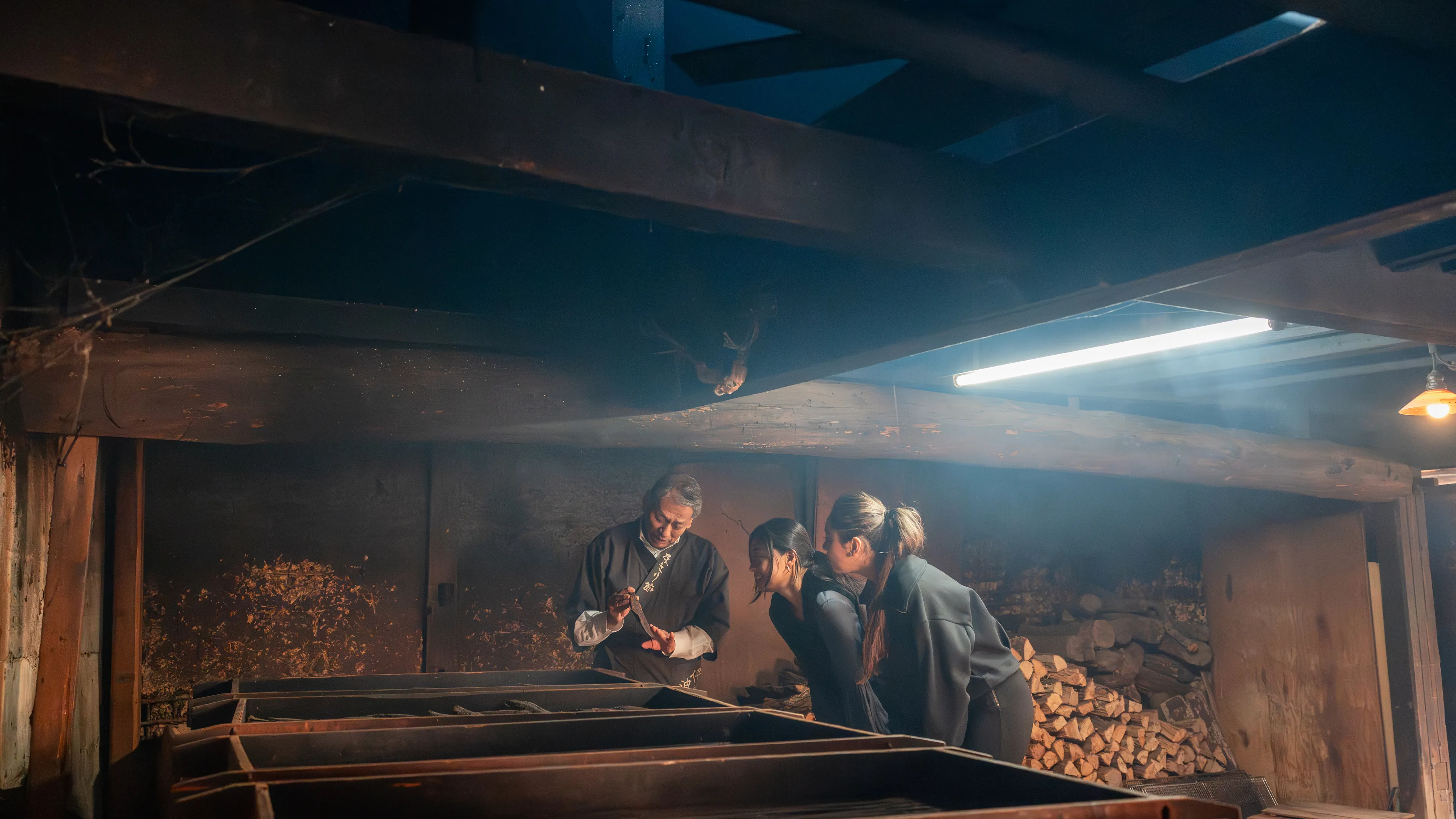
The source of Umami Katsuo no Tenpaku, bonito smoking hut
The source of Umami Katsuo no Tenpaku, bonito smoking hut
Katsuobushi, or dried bonito, is said to be one of the origins of umami in Japanese cooking. Nakiri, situated at the southern edge of Ise-Shima, which prospered thanks to bonito fishing, has a 1,300 year history of making this ingredient, incorporating a unique smoking method and prospering as a dried bonito producer. This program offers participants the chance to visit a smokehouse designated by the Japanese government as an important tangible cultural asset, where they can witness the time-honored tradition of crafting dried bonito, try shaving some themselves, and sample some rice with freshly-shaved bonito all to experience the origin of umami in Japanese cooking. Nakiribushi, the local dried bonito, is of such high quality and flavor that it has earned a place in history for being provided to Ise Grand Shrine, and participants will learn about how this ingredient is related to Mie sake which is also provided to the shrine.
Points to recommend
- A private event for singe groups only
- Participants visit an authentic smokehouse where dried bonito is made, and learn about its history and production method from a company representative
- Participants will also try shaving bonito and sample some freshly-cooked rice topped with bonito shavings
- An explanation of sake offered to the gods will be followed by a tasting of Mie sake
Schedule
- 10:00 a.m. - 10:45 a.m.
- Company representative provides an explanation of the history of dried bonito, how it is made, and how it is related to Ise Grand Shrine (45 min.)
- 10:45 a.m. - 11:15 a.m.
- Bonito shaving activity, explanation of sake provided to the gods, sake sampling (30 min.)
- 11:15 a.m. - 11:30 a.m.
- After the activity, there is a soup stock sampling and sampling of freshly-cooked rice topped with bonito shavings (15 min.)
Participants who wish to do so may shop once the program is over.

Higashikishu
Registered as a UNESCO World Heritage Site, the Kumano Kodo is an ancient pilgrimage route to the Ise Grand Shrine, connecting Kumano with Ise, Wakayama, and other areas. Travelers on the route can immerse themselves in both history and nature. And there are numerous magnificent sights of natural beauty to admire along the way, such as the unusually shaped rock formations sculpted by the rough waves of the Kumano Sea, including Onigajo (demon’s castle), Shishi-iwa (lion rock), and the Tategasaki rock face. Other highlights include the Maruyama Senmaida rice terraces, one of Japan's top 100 terraced rice fields.
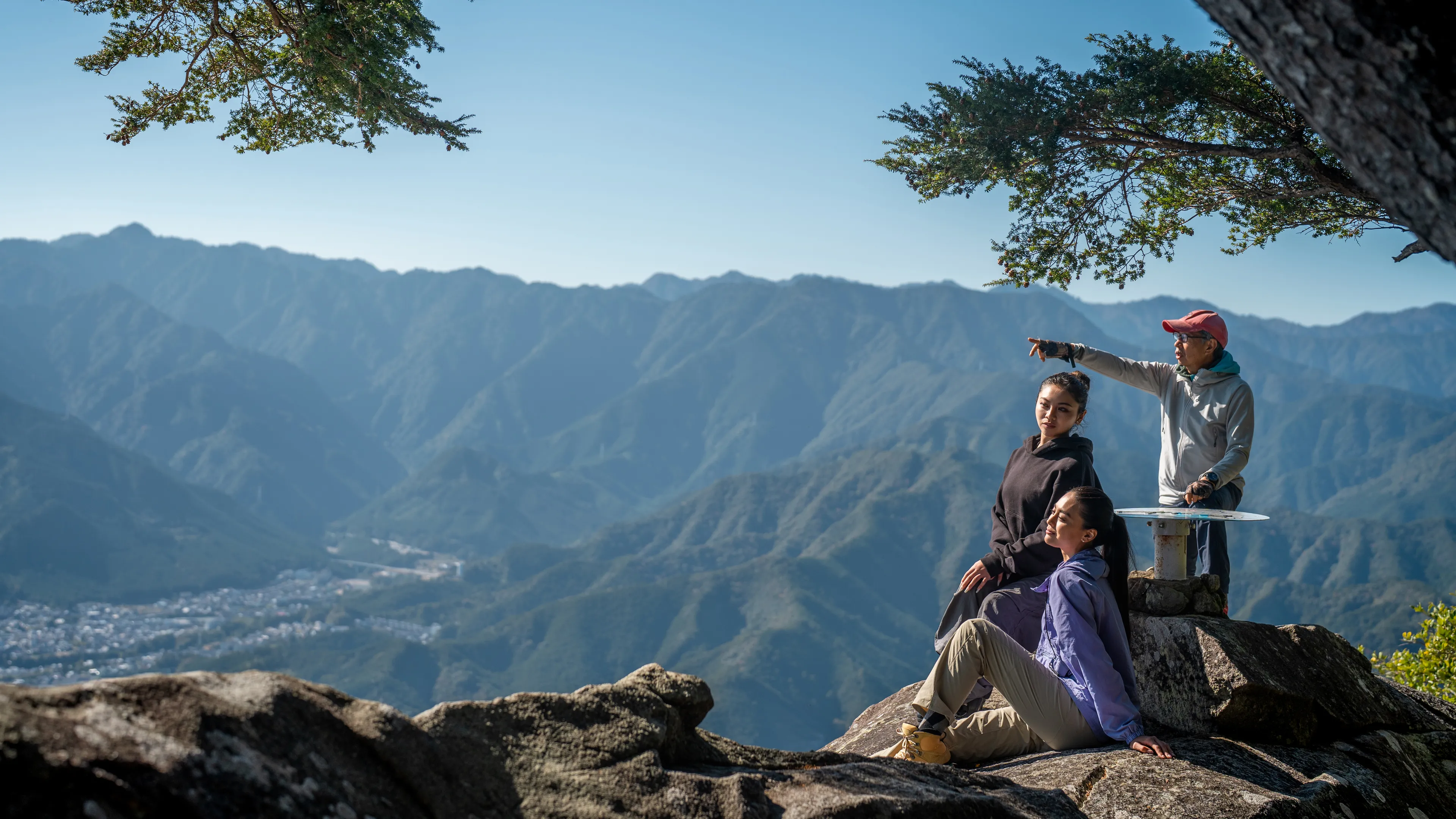
Trekking through Scenic Mt. Tengura and Iwayado - Tracing the ancient mountain faith and Shugendo ascetics
Trekking through Scenic Mt. Tengura and Iwayado - Tracing the ancient mountain faith and Shugendo ascetics
Long ago, nature and large rocks were objects of worship in Kumano. The area is home to the Kumano Kodo trail, a UNESCO World Heritage site walked by many pilgrims, natural forests, massive rocks, waterfalls, and other spots visited by Buddhist mountain ascetics in training. In Owase, participants will find large rocks and waterfalls used by such ascetics, with temples connected to these training spots in the city, leading historians to believe that the entire city of Owase was dedicated to ascetic training. This course offers participants the chance to follow in the footsteps of ascetic monks by walking the stone-paved Kumano Kodo trail, visiting spots such as a large rock, Magose Fudo Falls, Mt. Tengura, and Iwayado to experience an ancient pilgrimage and the places ascetics prayed. The gorgeous scenery of the ocean from Mt. Tengura (altitude: 522 m) is not to be missed.
Points to recommend
- Tour mountain asceticism prayer spots that served as training grounds amongst nature
- Visit Iwayado, protected by a massive rock, which houses Edo period stone Buddha statues, served as a place of prayer for ascetic monks, and is cherished by local people even today
- Walk through Magose Pass on Kumano Kodo, a pilgrimage path trod by ancient ascetics
- Enjoy the view of the ocean from Mt. Tengura (altitude: 522 m)
Schedule
- 9:00 a.m.
- Meet at Owase Station
- 9:05 a.m. - 9:15 a.m.
- Head to Magose Pass entrance
- 9:15 a.m. - 3:45 p.m.
- Visit the large rock, Magose Fudo Falls, Magose Pass on the UNESCO World Heritage site of the Kumano Kodo trail, Mt. Tengura (altitude: 522 m, lunch), Iwayado, and Owase Shrine
- 3:45 p.m. - 3:55 p.m.
- Head to Owase Station
- 4:00 p.m.
- Dismissed at Owase Station
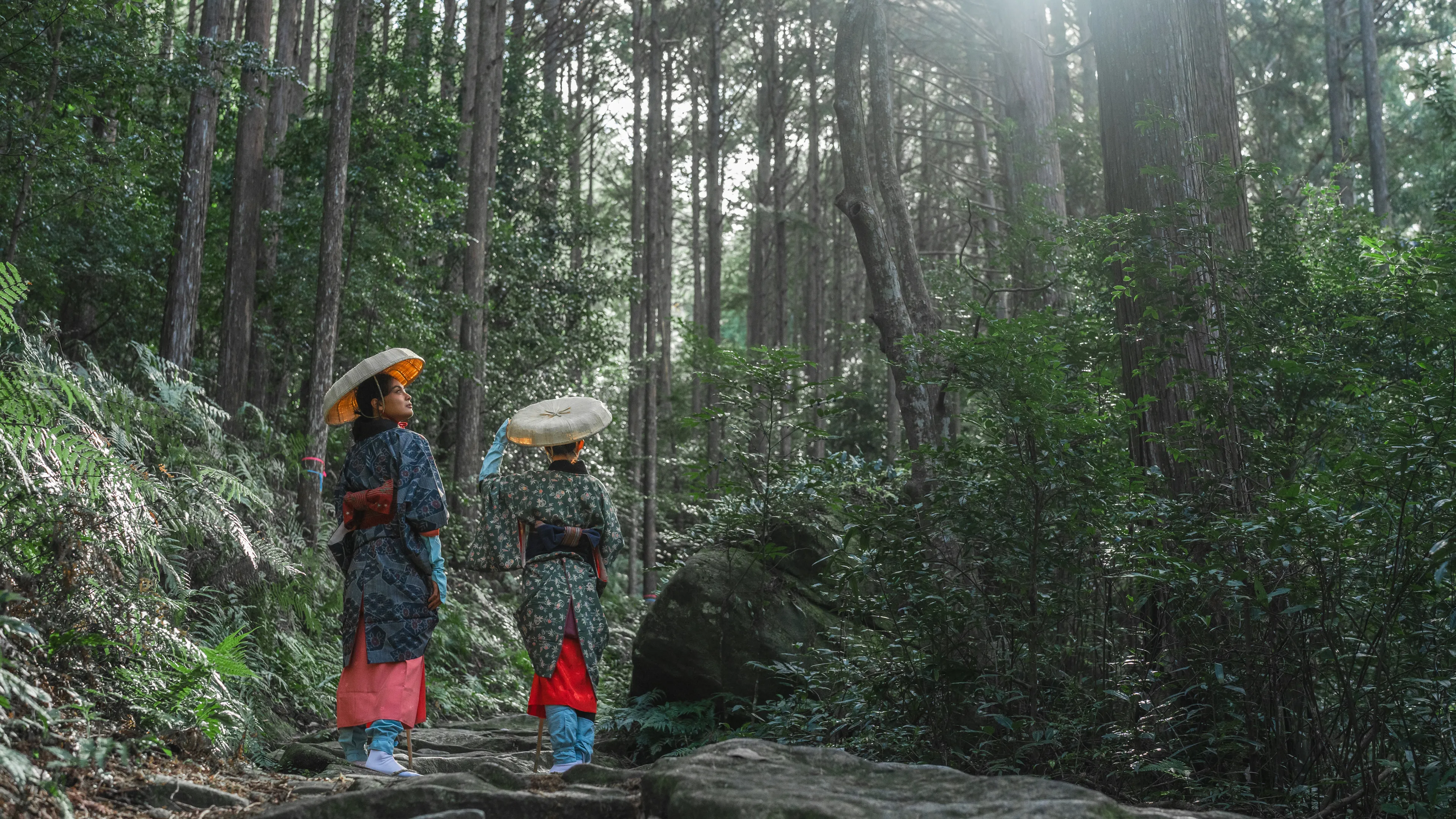
Walk the Magose pass on the Kumano Kodo trail, UNESCO World heritage site, in traditional travel garb
Walk the Magose pass on the Kumano Kodo trail, UNESCO World heritage site, in traditional travel garb
Long ago, it was popular for people from all across Japan to walk hundreds of kilometers to tour sacred sites such as Ise Grand Shrine and Kumano Sanzan (the Three Grand Shrines of Kumano). Many travelers walked the perilous Magose Pass, which is part of the Sacred Sites and Pilgrimage Routes in the Kii Mountain Range that leads to Kumano Sanzan. The beautiful stone paved path leading deep into the forest has been lovingly maintained by locals for centuries, and still looks as it did long ago. This program offers participants the chance to dress in travel garb recreated from ukiyo-e prints and historic documents and walk the Magose Past just as ancient travelers did. Partial proceeds from the program are used to preserve the stone paving and keep the scenery in pristine condition for future generations.
Points to recommend
- Private tour limited to one group per day
- Wear traditional travel attire like those in an ukiyo-e print, and take photos at scenic spots along the ancient stone paved path of Magose Pass
- Enjoy a guided tour with explanations of travelers' experiences as participants travel back in time to Edo period Japan
- Partial proceeds are donated to a group that preserves and maintains the Kumano Kodo trail
- Participants will receive mochi and an original Japanese wrapping cloth to take home
Schedule
- 9:50 a.m. - 10:00 a.m.
- A guide wearing Edo period traveler's garb greets participants on the first floor of Roadside Station Miyama
- 10:00 a.m. - 10:10 a.m.
- Explanation of the activity, participants choose their favorite kimono color, pattern, and sash
- 10:10 a.m. - 11:00 a.m.
- Change into kimono and attach accessories
- 11:00 a.m. - 11:10 a.m.
- Explanation of route and head to Magose Pass entrance on foot
- 11:10 a.m. - 12:10 p.m.
- Walking Magose Pass on the Kumano Kodo trail UNESCO World Heritage Site
- 12:10 p.m. - 12:20 p.m.
- Walk from Magose Pass to Roadside Station Miyama
- 12:20 p.m. - 12:30 p.m.
- Change back into street clothes and activity ends Includes souvenir of mochi and a Japanese wrapping cloth

A Noctiluca night tour on a sea kayak
A Noctiluca night tour on a sea kayak
The Kumano Kodo route is well known around the world, but what about the Ocean Kumano Kodo? Part of this route includes walking along the coast, and records show that some ancient pilgrims traveled it by boat. Situated on the Pacific, the beautiful Mikisato coast is linked to the Ocean Kumano Kodo. From summer to autumn, you can see the gently glowing noctiluca as they float in the ocean. This program offers participants the chance to observe these bioluminescent marine creatures up close in a sea kayak, and includes a kayaking lesson so even beginners can have fun. It also includes a snack at sunset made by a local delicatessen served with locally-grown tea. The pure air in this spot makes it the perfect place to view the Milky Way on clear nights. Come take in the dreamlike sight of noctiluca and the star-filled night sky from the ocean.
Points to recommend
- A kayaking lesson is provided so even beginners can participate with ease
- Paddle out on the nighttime ocean for an exciting adventure
- Gaze at noctiluca and the star-filled night sky while paddling on the ocean in a sea kayak
- Watch the sunset while eating a snack from a local delicatessen with some tea
Schedule
■June & July
- 6:00 p.m.
- Meet, fill in application, change, head to beach
- 6:30 p.m.
- Lesson begins
- 7:15 p.m.
- Break, snack time
- 7:45 p.m.
- Noctiluca tour begins
- 8:45 p.m.
- Return to land, clean up, head back, shower
- 9:15 p.m.
- Dismissed
■August
- 5:45 p.m.
- Meet, fill in application, change, head to beach
- 6:15 p.m.
- Lesson begins
- 7:00 p.m.
- Break, snack time
- 7:30 p.m.
- Noctiluca tour begins
- 8:30 p.m.
- Return to land, clean up, head back, shower
- 9:00 p.m.
- Dismissed
■September
- 5:15 p.m.
- Meet, fill in application, change, head to beach
- 5:45 p.m.
- Lesson begins
- 6:30 p.m.
- Break, snack time
- 7:00 p.m.
- Noctiluca tour begins
- 8:00 p.m.
- Return to land, clean up, head back, shower
- 9:30 p.m.
- Dismissed
■October
- 4:45 p.m.
- Meet, fill in application, change, head to beach
- 5:15 p.m.
- Lesson begins
- 6:00 p.m.
- Break, snack time
- 6:30 p.m.
- Noctiluca tour begins
- 7:30 p.m.
- Return to land, clean up, head back, shower
- 8:00 p.m.
- Dismissed
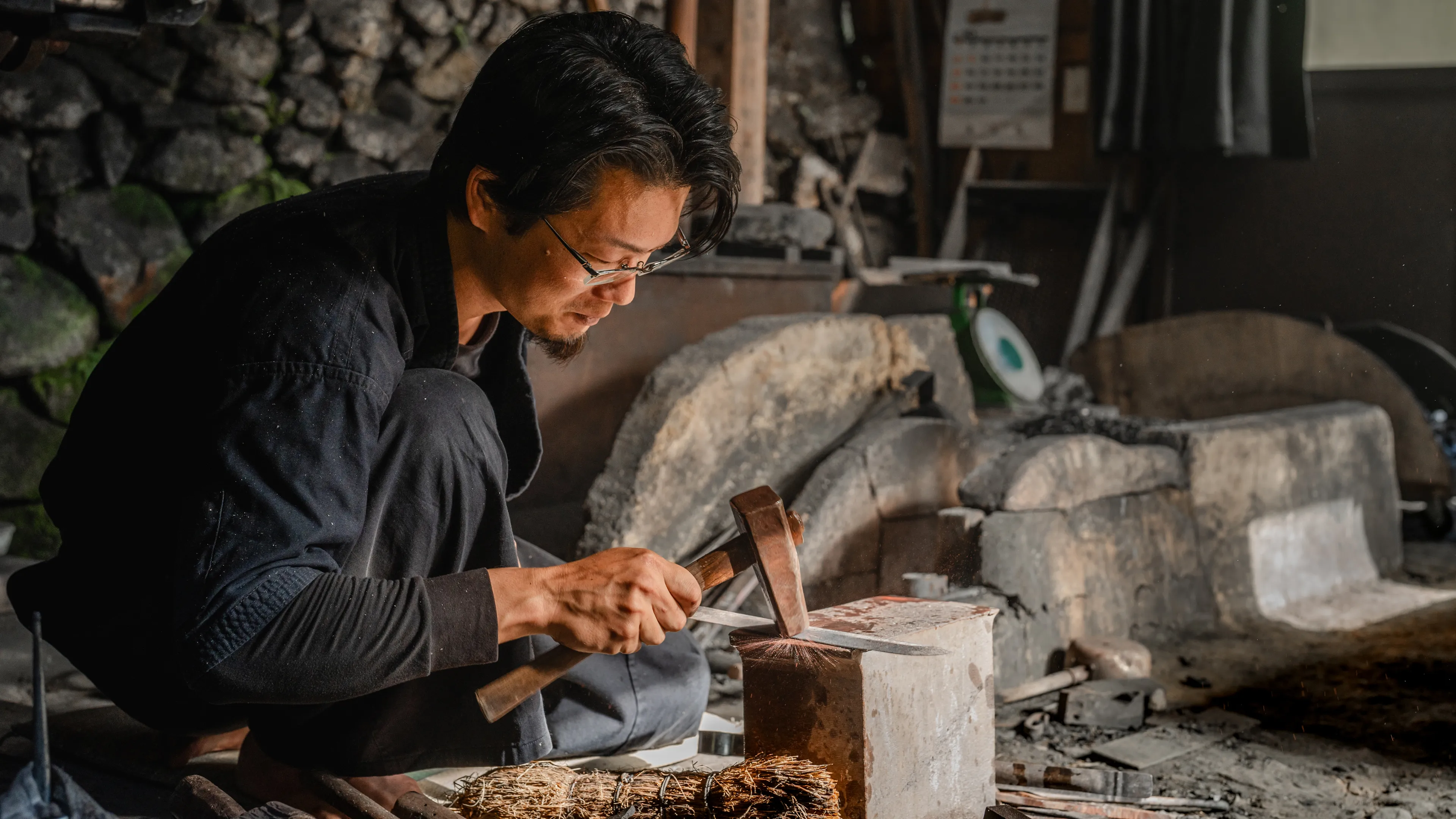
Visit the Only Swordsmith in Mie and Make Your Own Knife
Visit the Only Swordsmith in Mie and Make Your Own Knife
Mie prefecture's only swordsmith workshop is hidden away deep in the mountains. This program offers participants the opportunity to visit Kenichiro Sumiya, a lone swordsmith who crafts blades in this secluded spot. Learn about the history of Japanese swords at a traditional Japanese home, see how they changed shape throughout the ages, pick up and examine some unique swords, and then visit Sumiya's workshop. Later, participants will heat the blade of a knife made with the same steel as Japanese swords using charcoal, and then rapidly cool it in water to create the hamon temper pattern in the quenching process. This completely private activity is a rare experience that almost feels like being accepted as the swordsmith's apprentice.
Points to recommend
- Learn about the history and crafting methods of Japanese swords directly from a swordsmith including a Q&A session.
- This truly unique experience takes place in an old Japanese home secluded deep in the mountains.
- The knife made during the activity can be shipped about 5 days later (domestic shipping only).
Schedule
-
・Learn about the history of Japanese swords, how they are made, and how to appreciate them from swordsmith Sumiya, including Q&A session (60 min.)
Pick up and examine actual Japanese swords.
・Learn about and try the quenching process with a knife in the swordsmith workshop (30 min.)
The completed knife can be sent about 5 days later. Domestic shipping only (cannot be shipped overseas).

